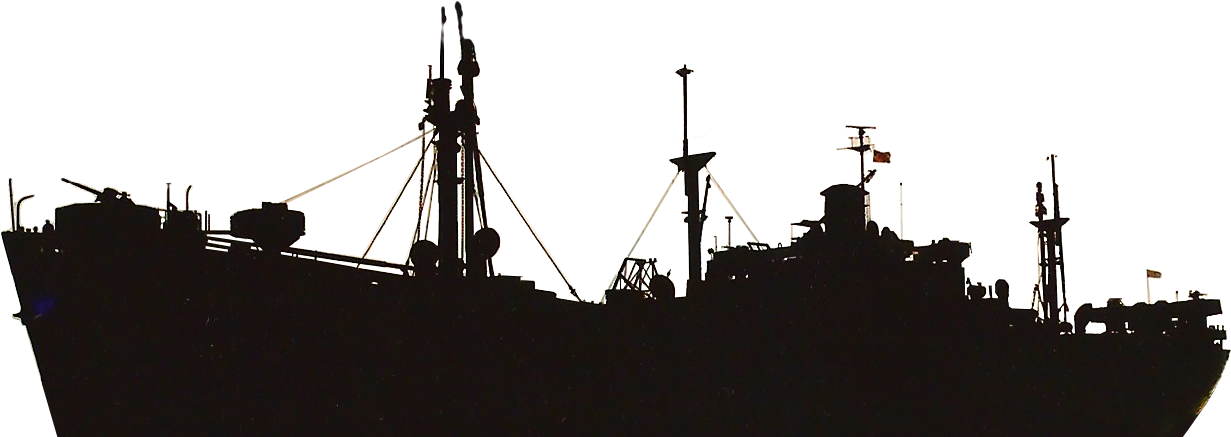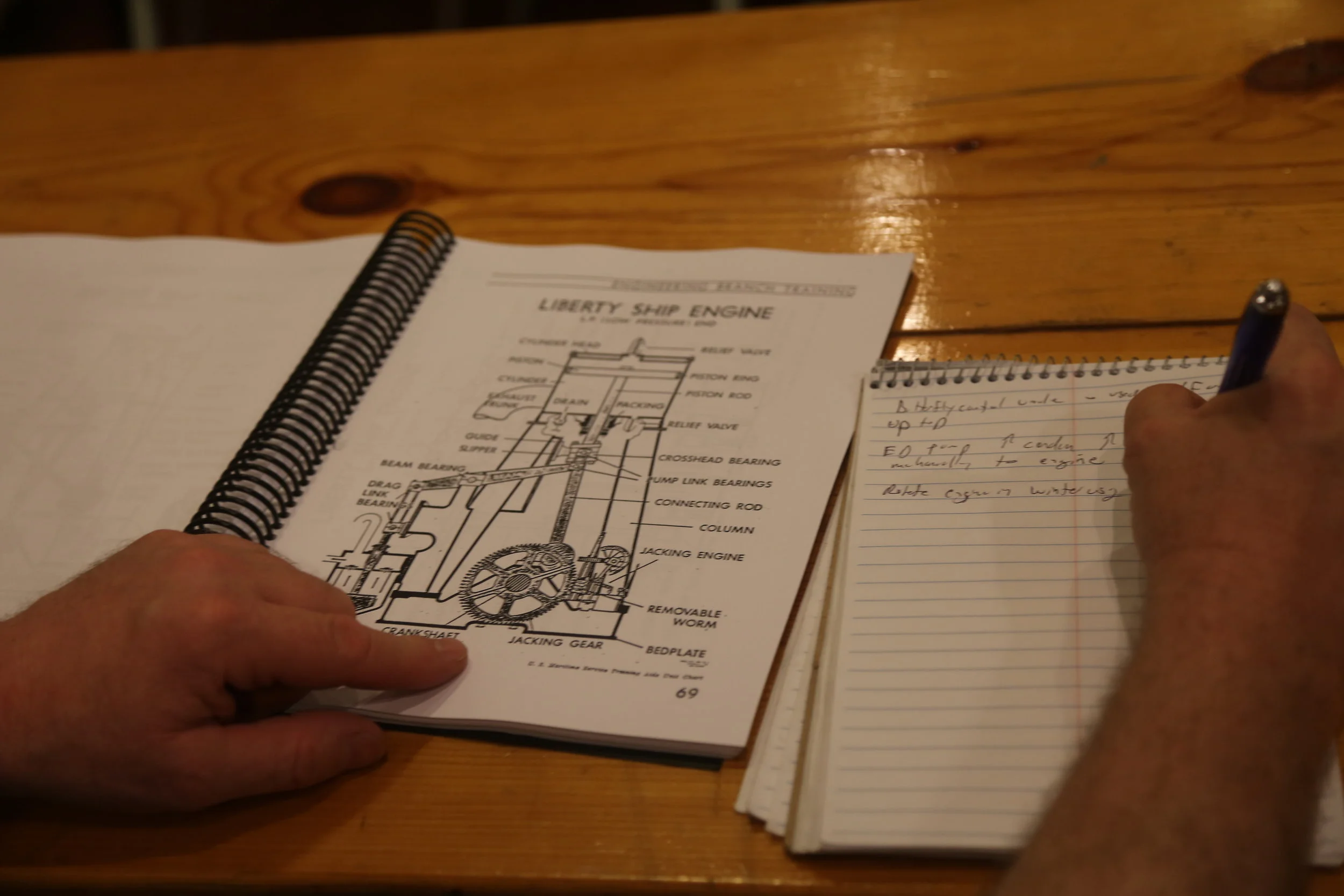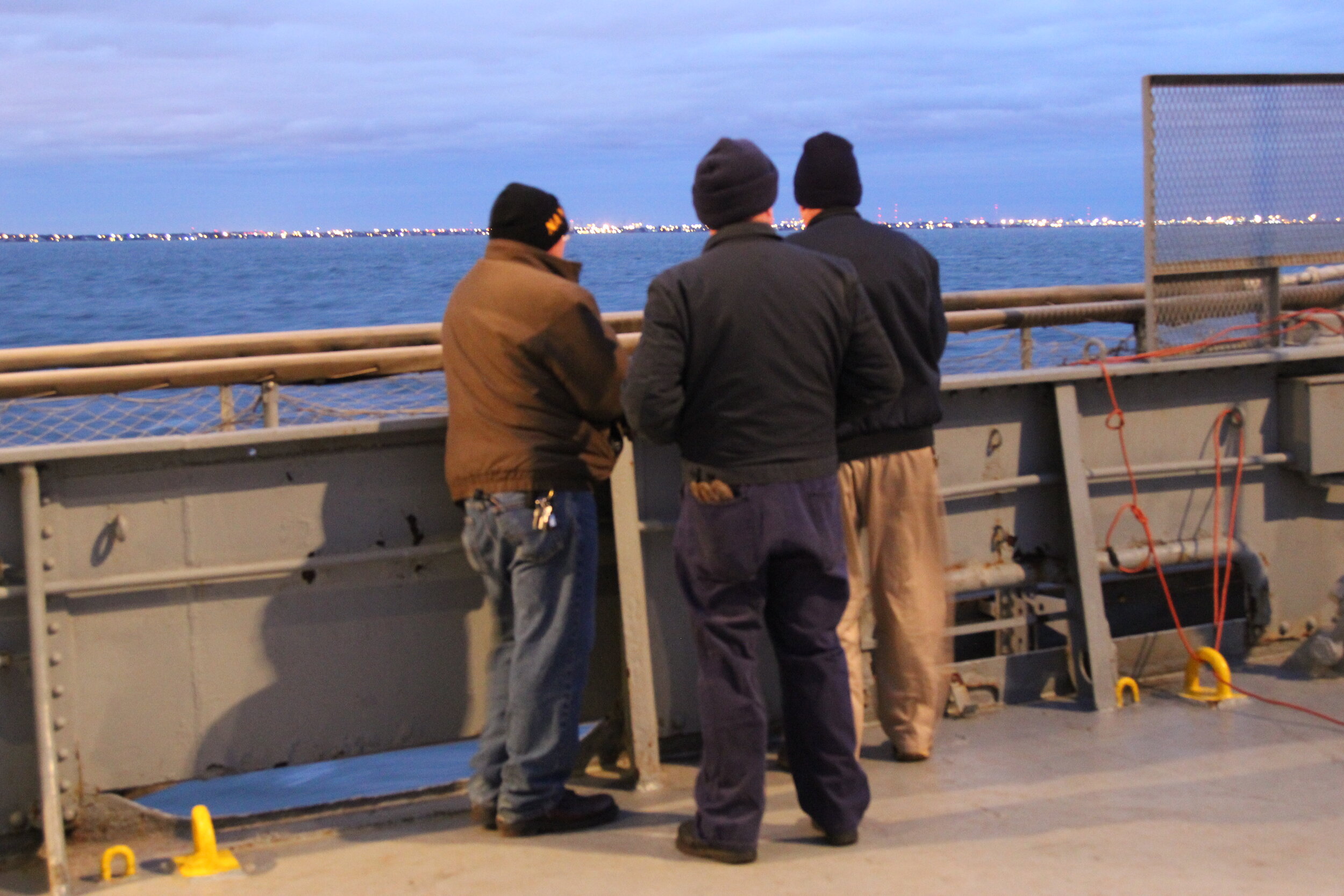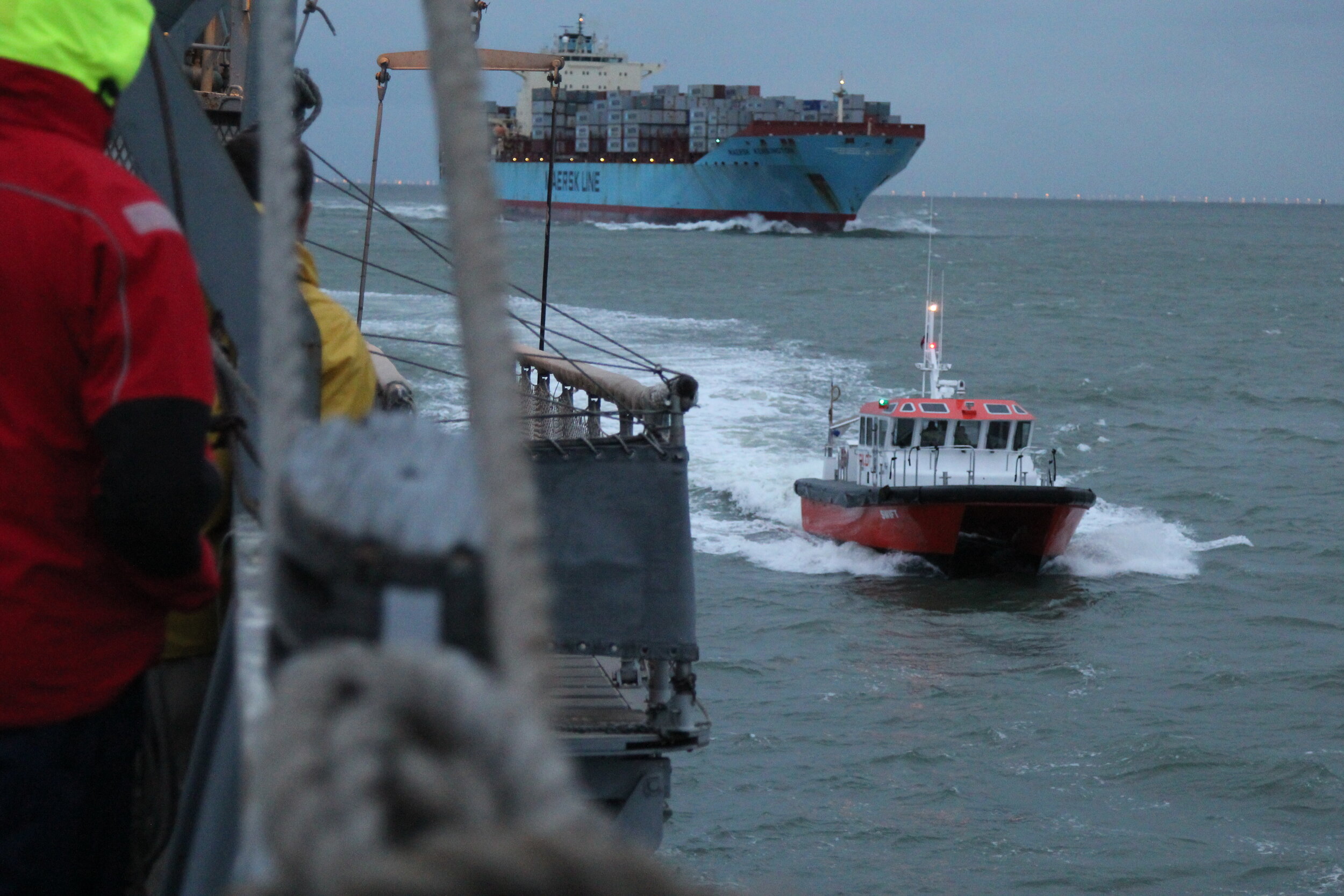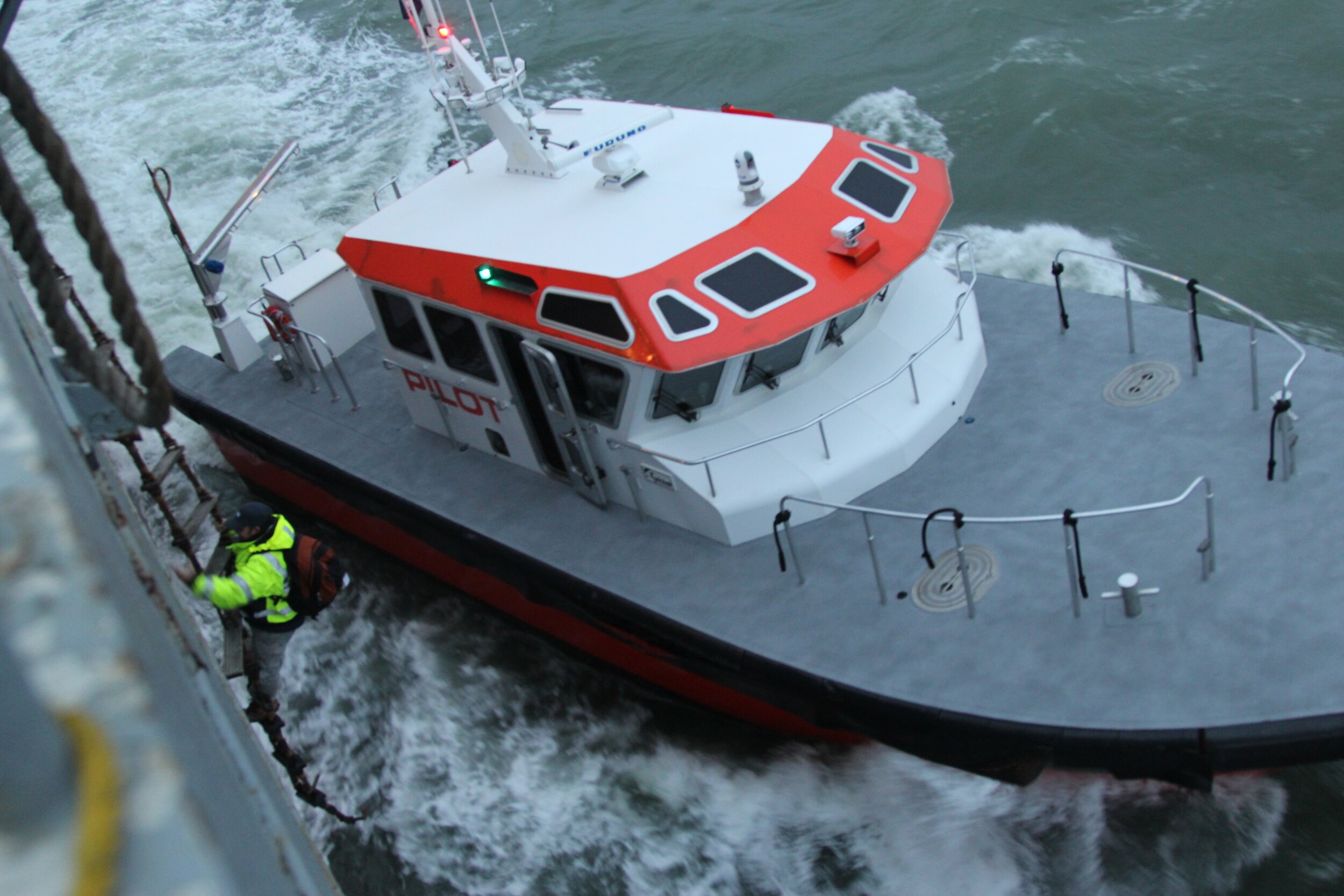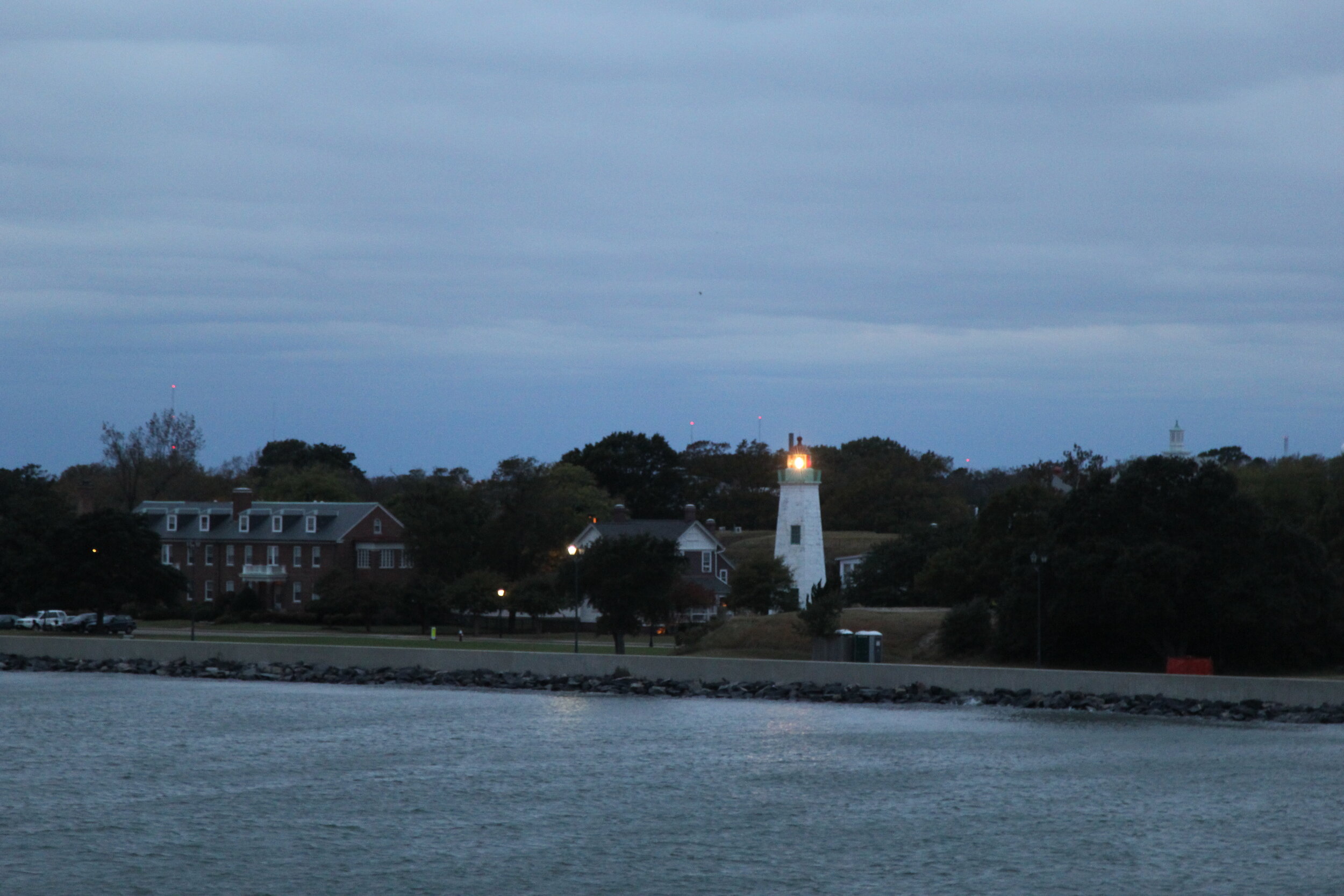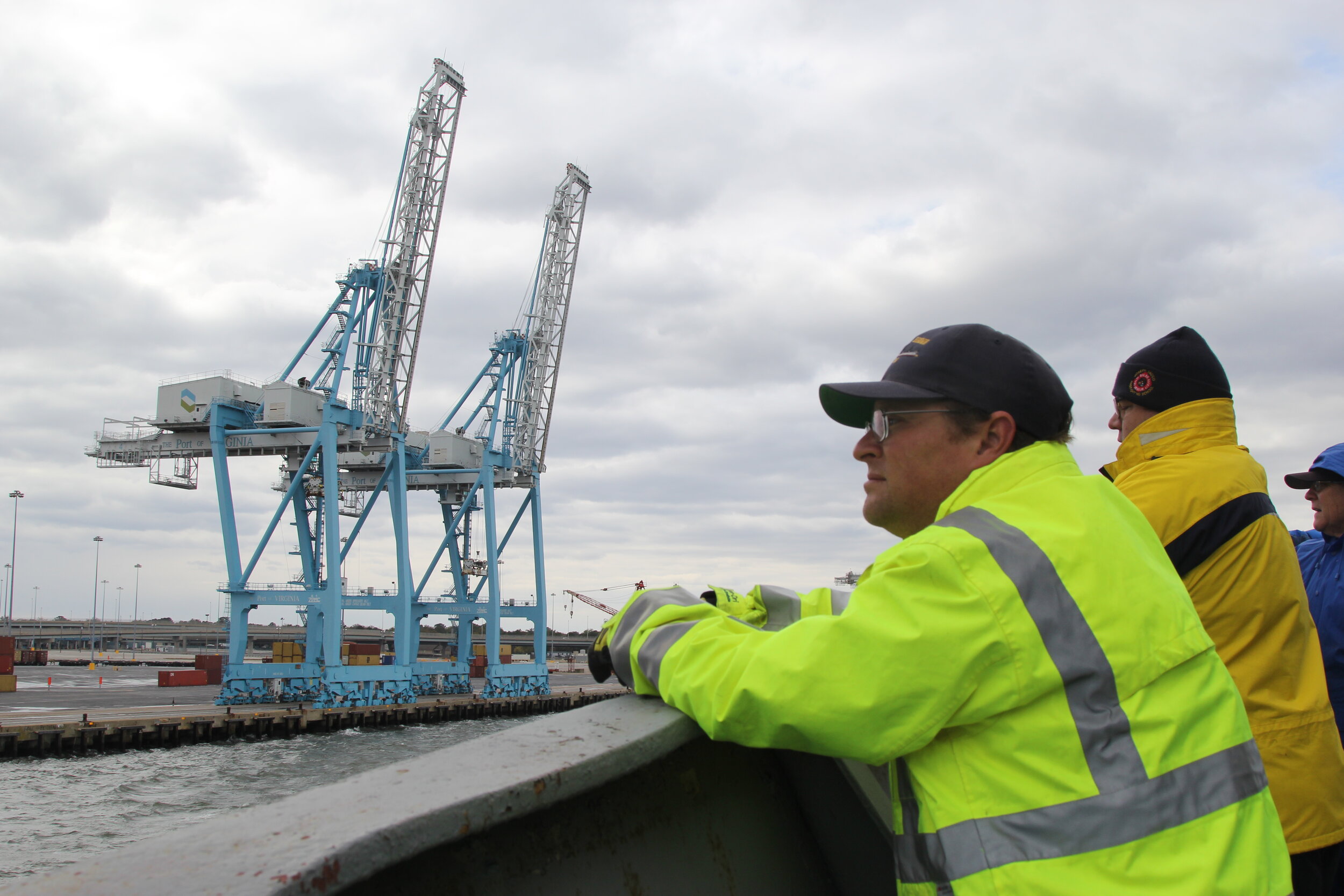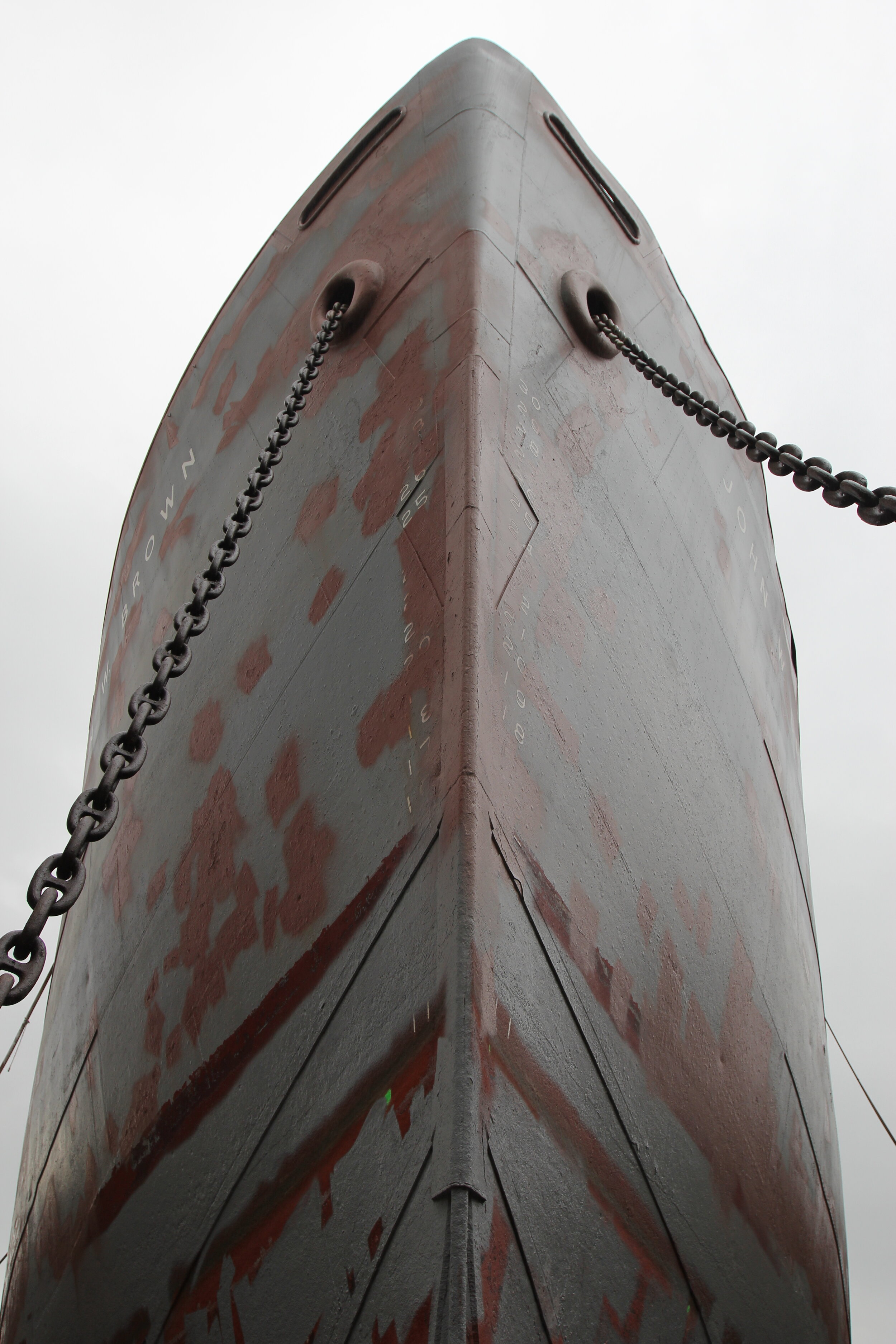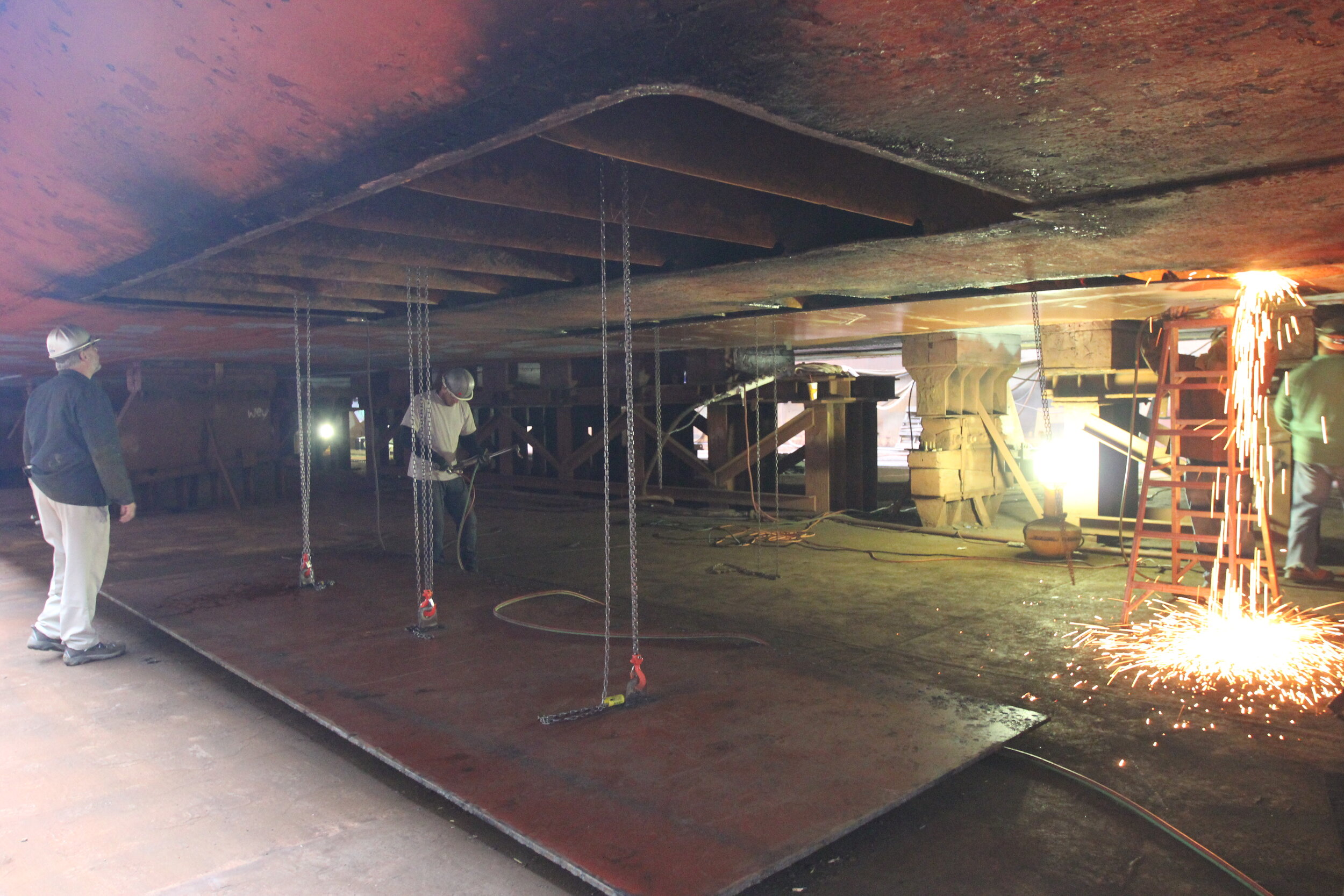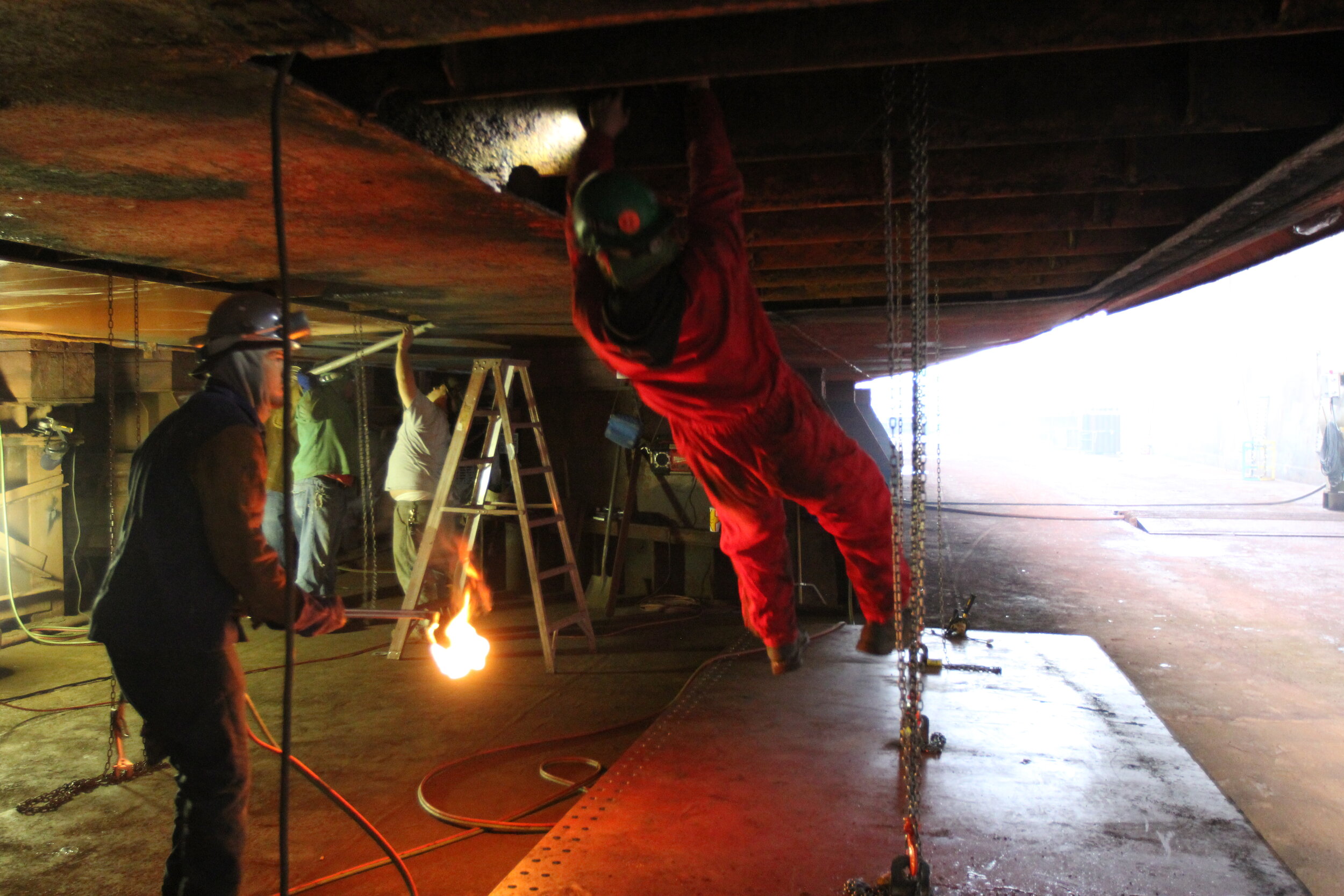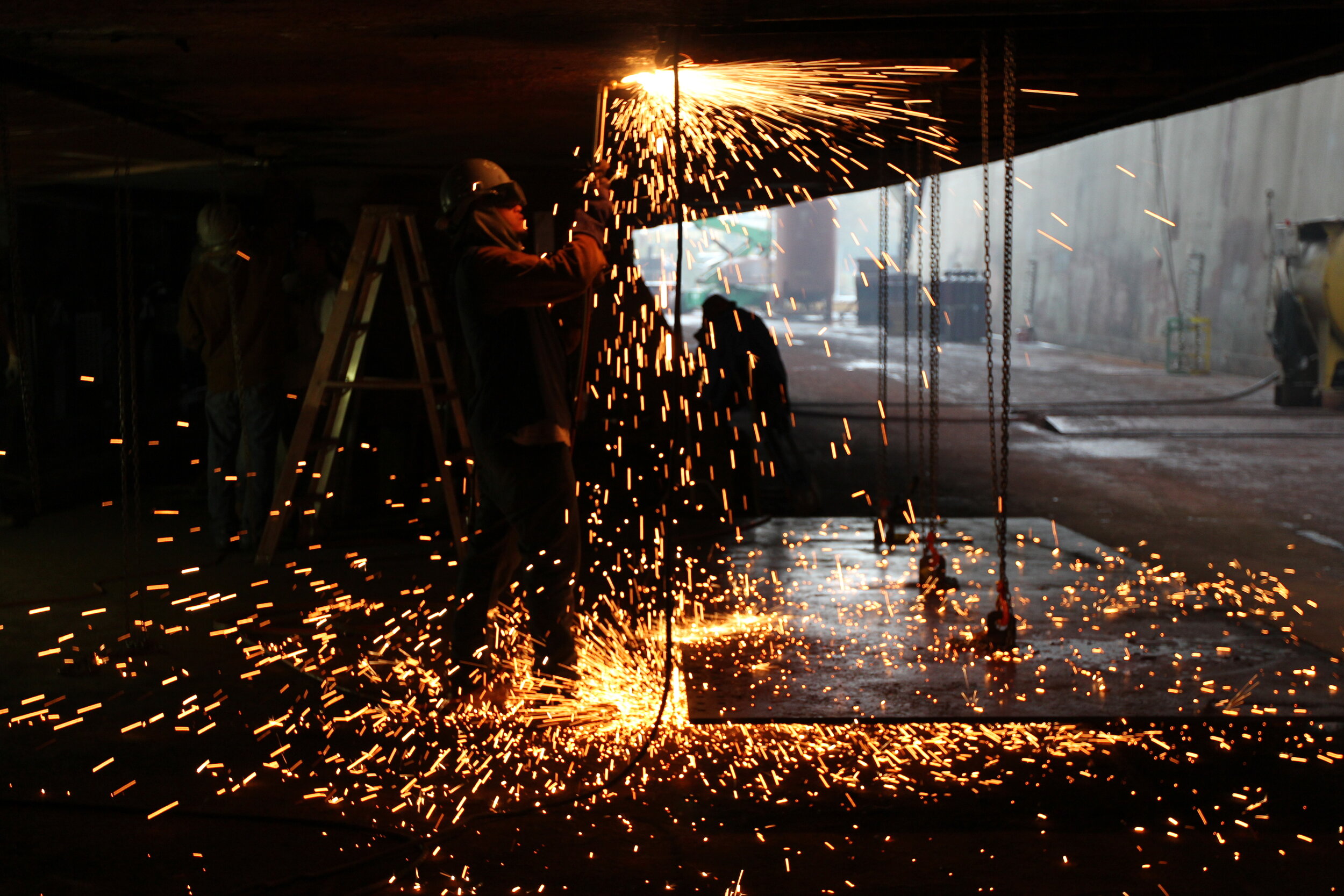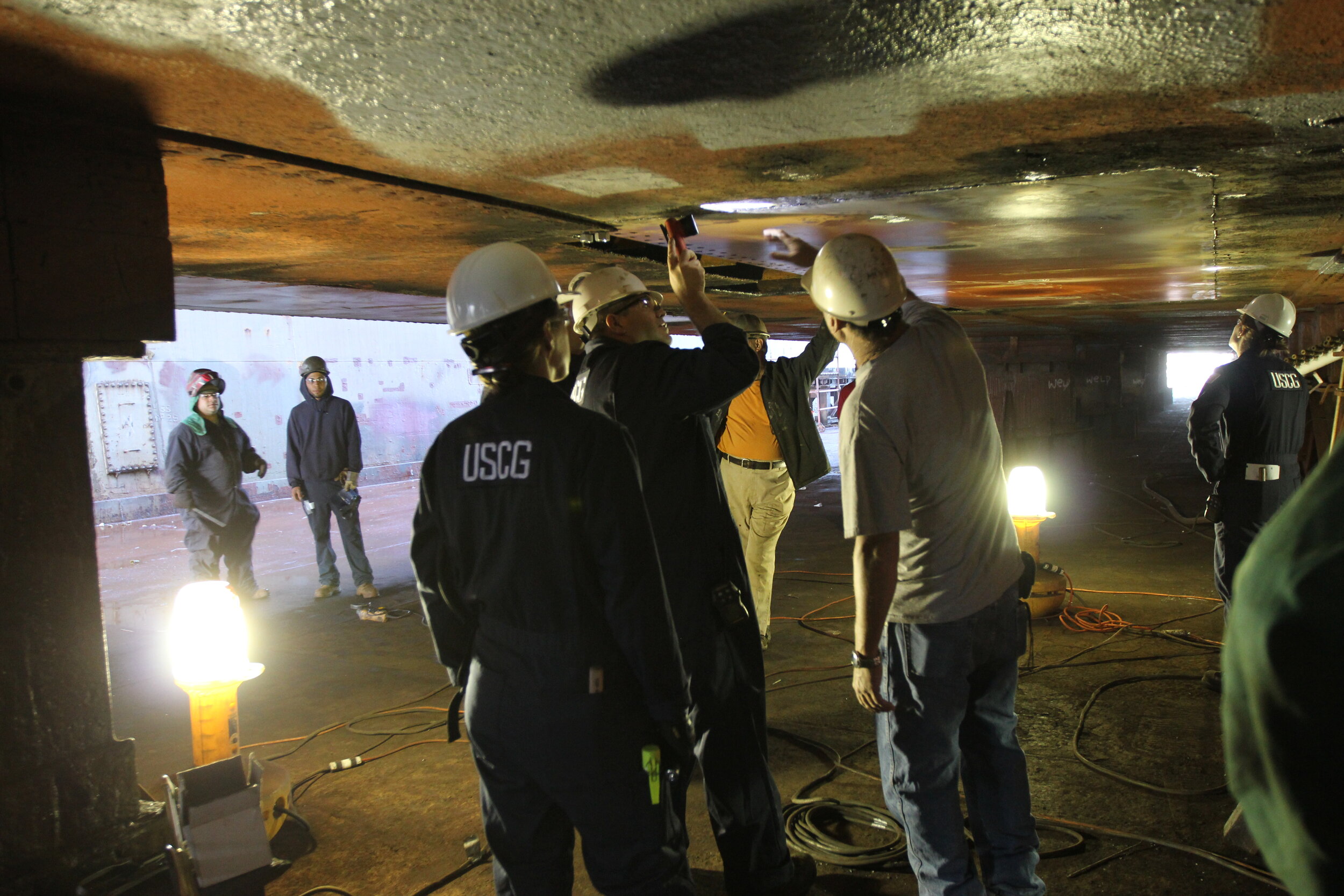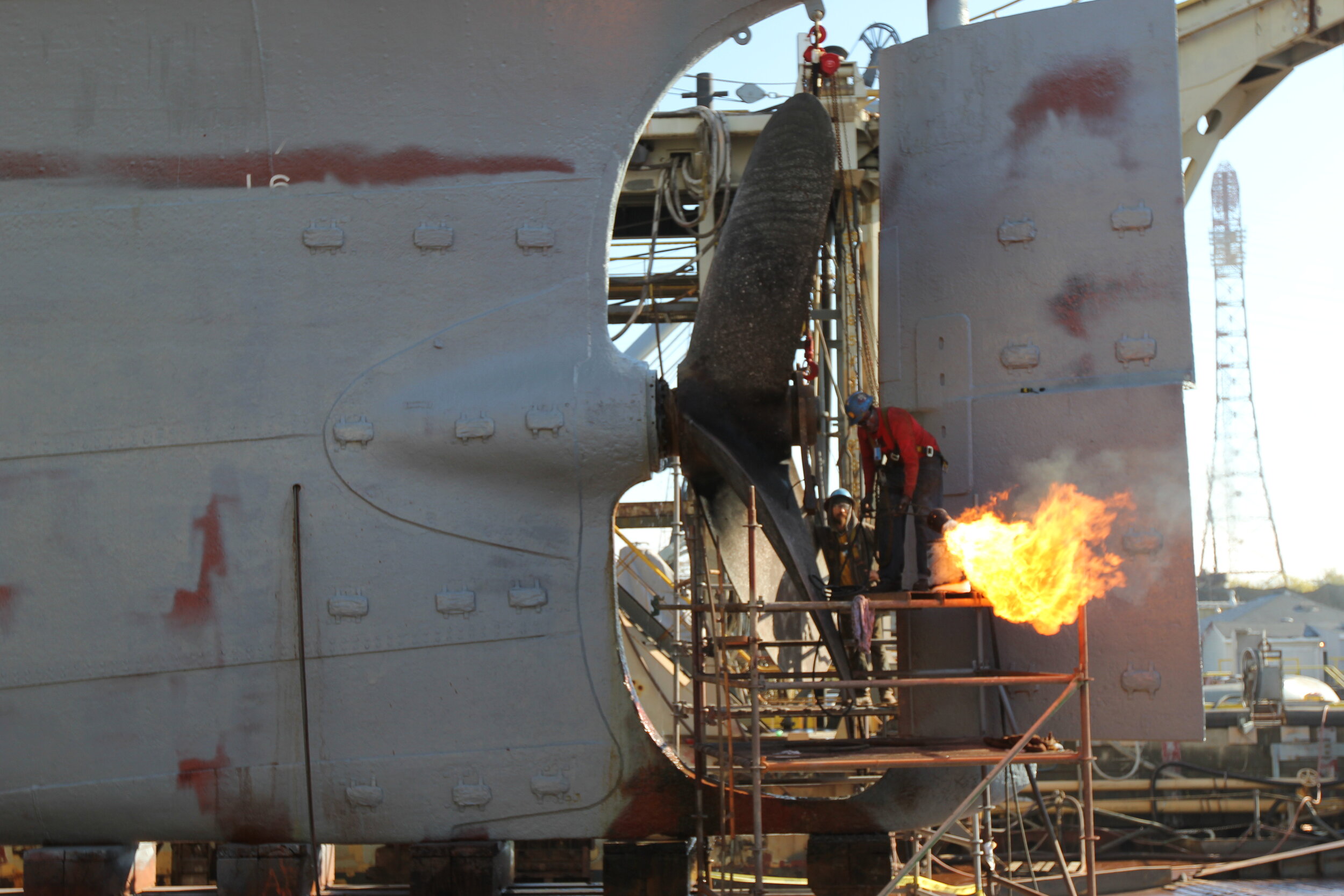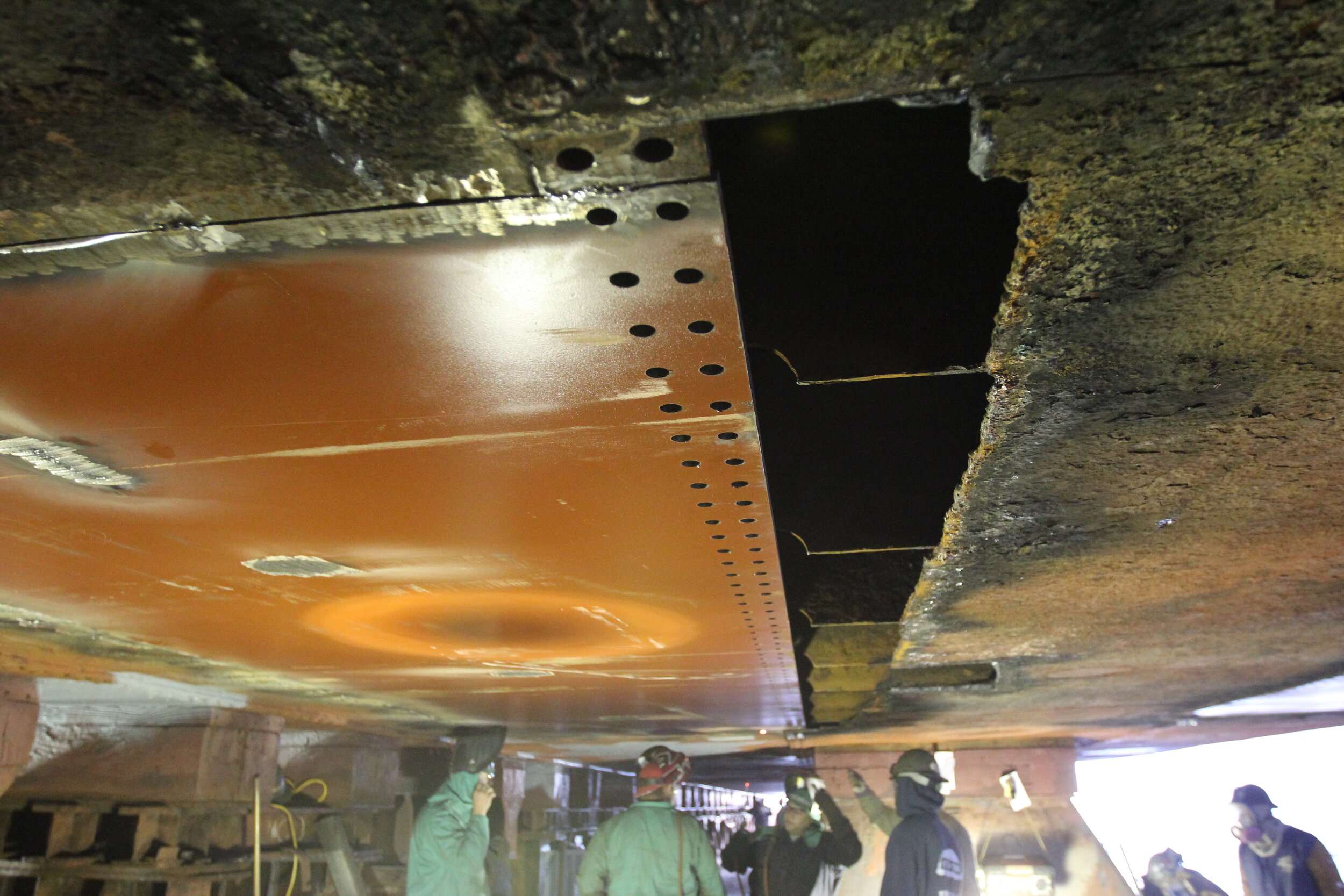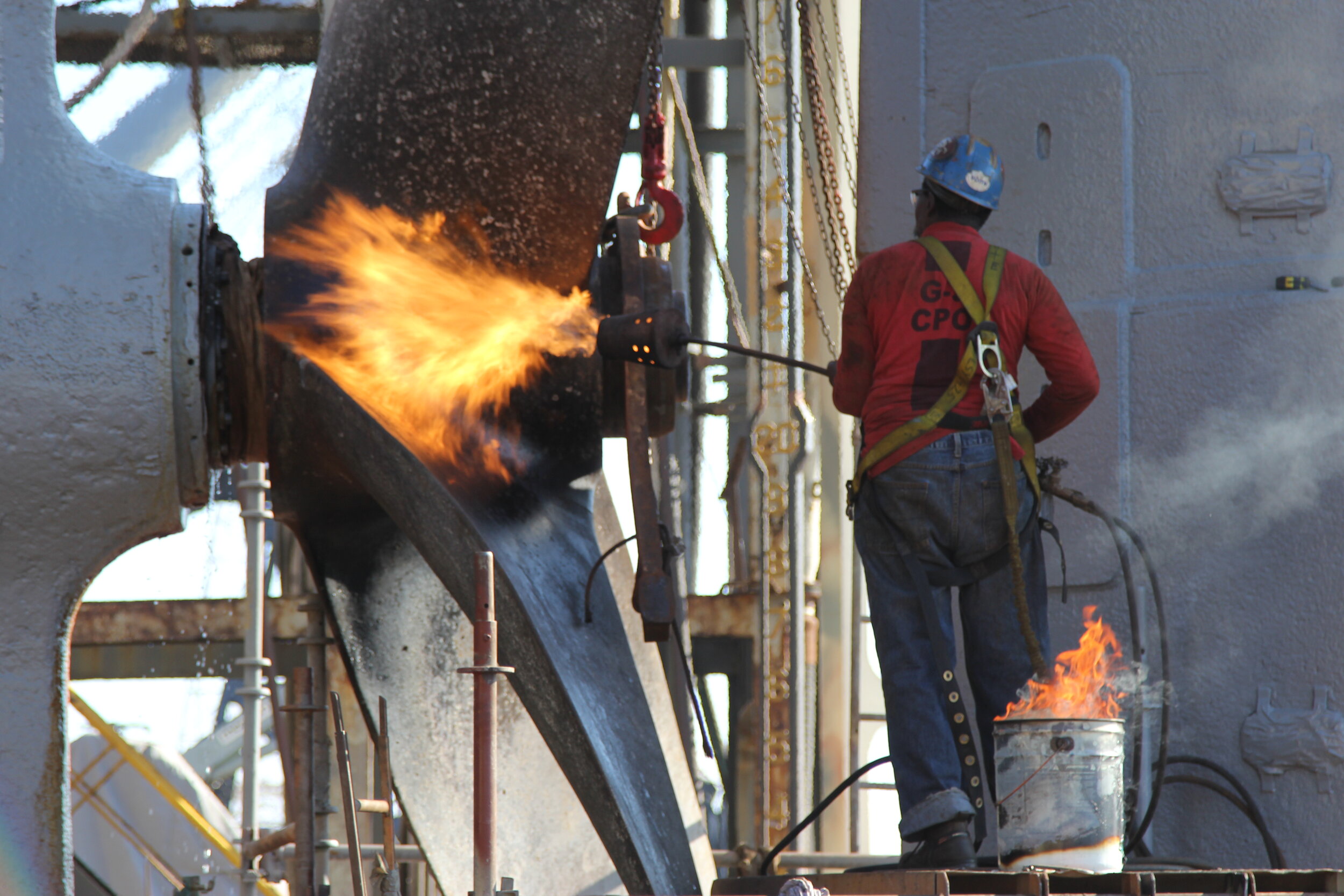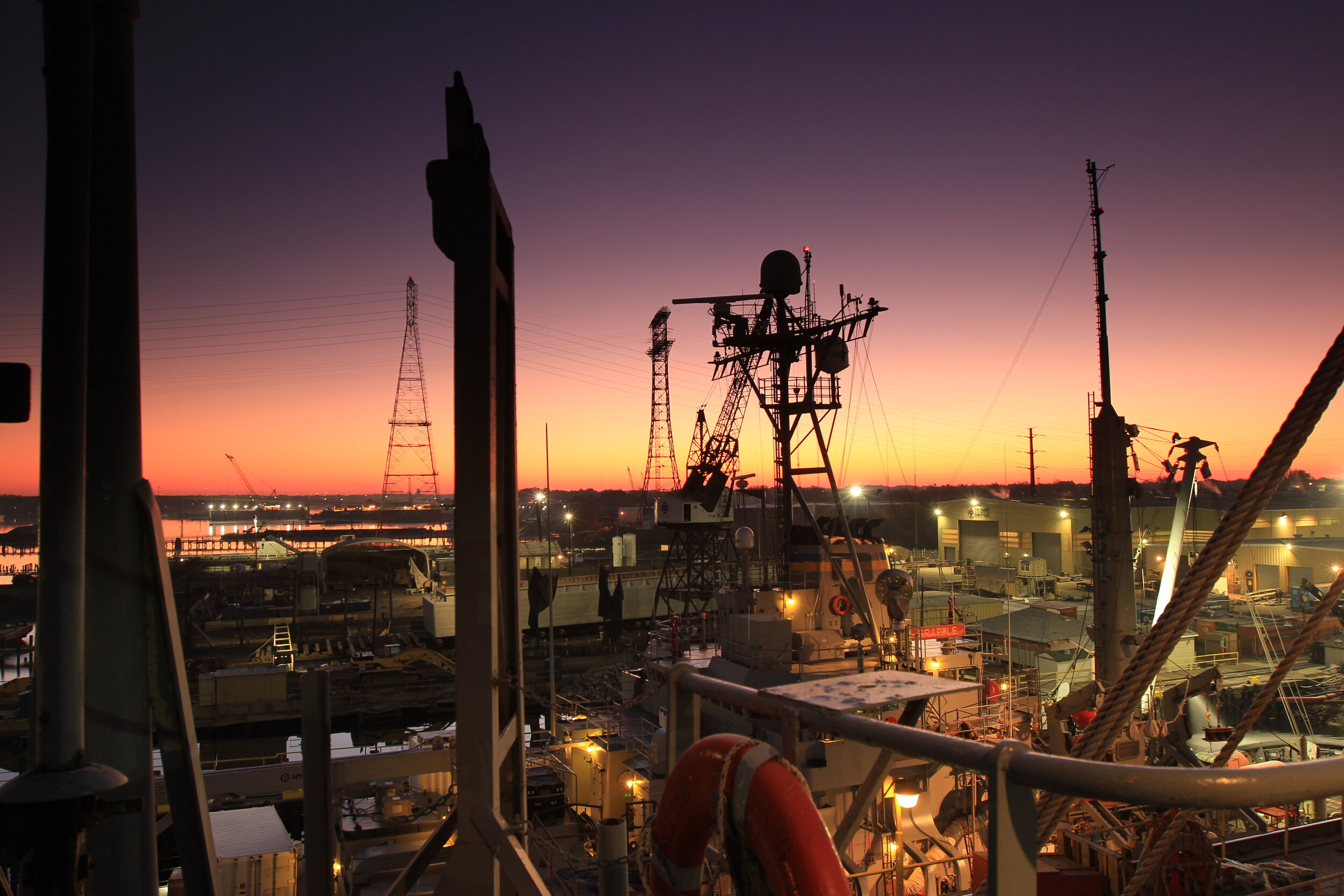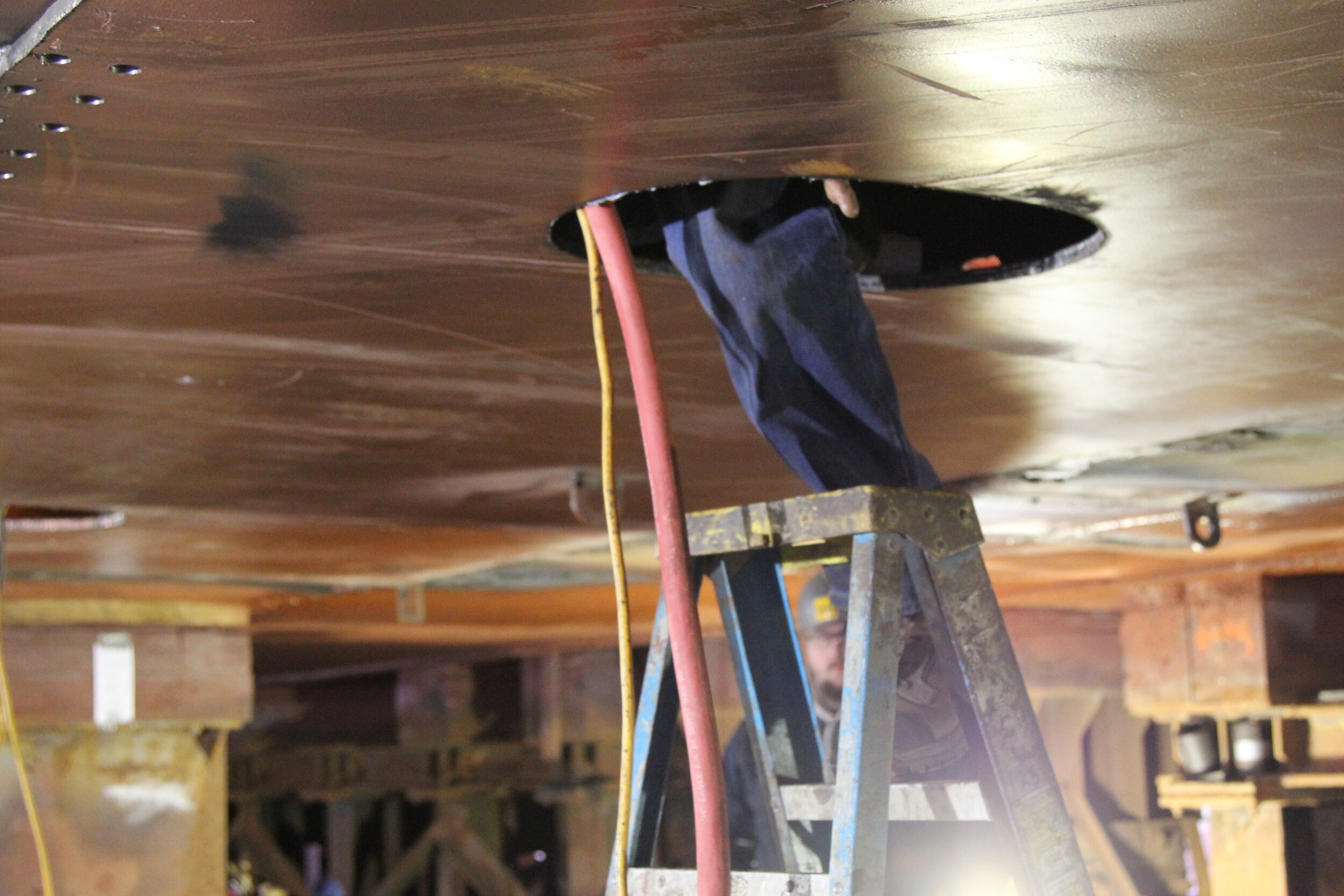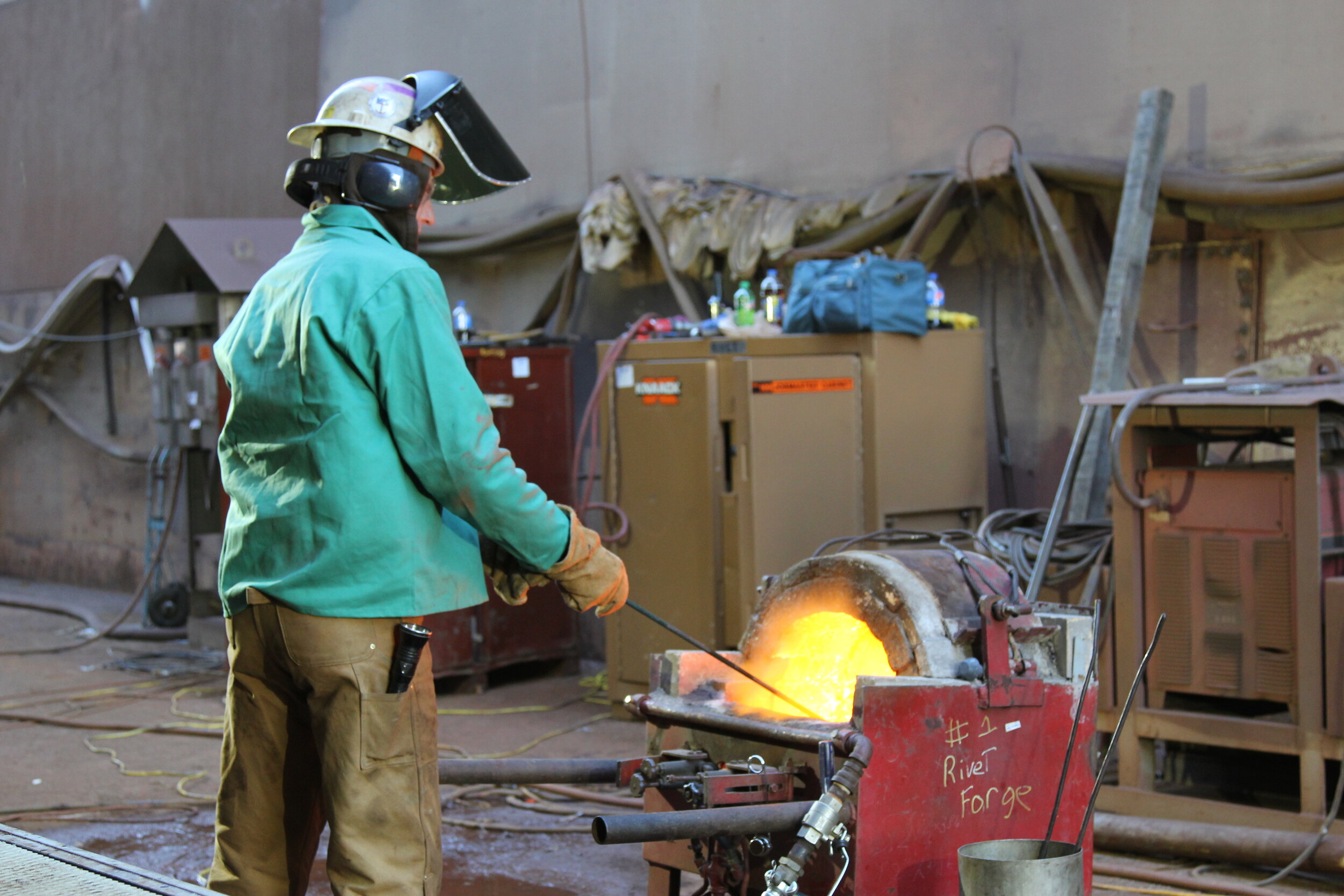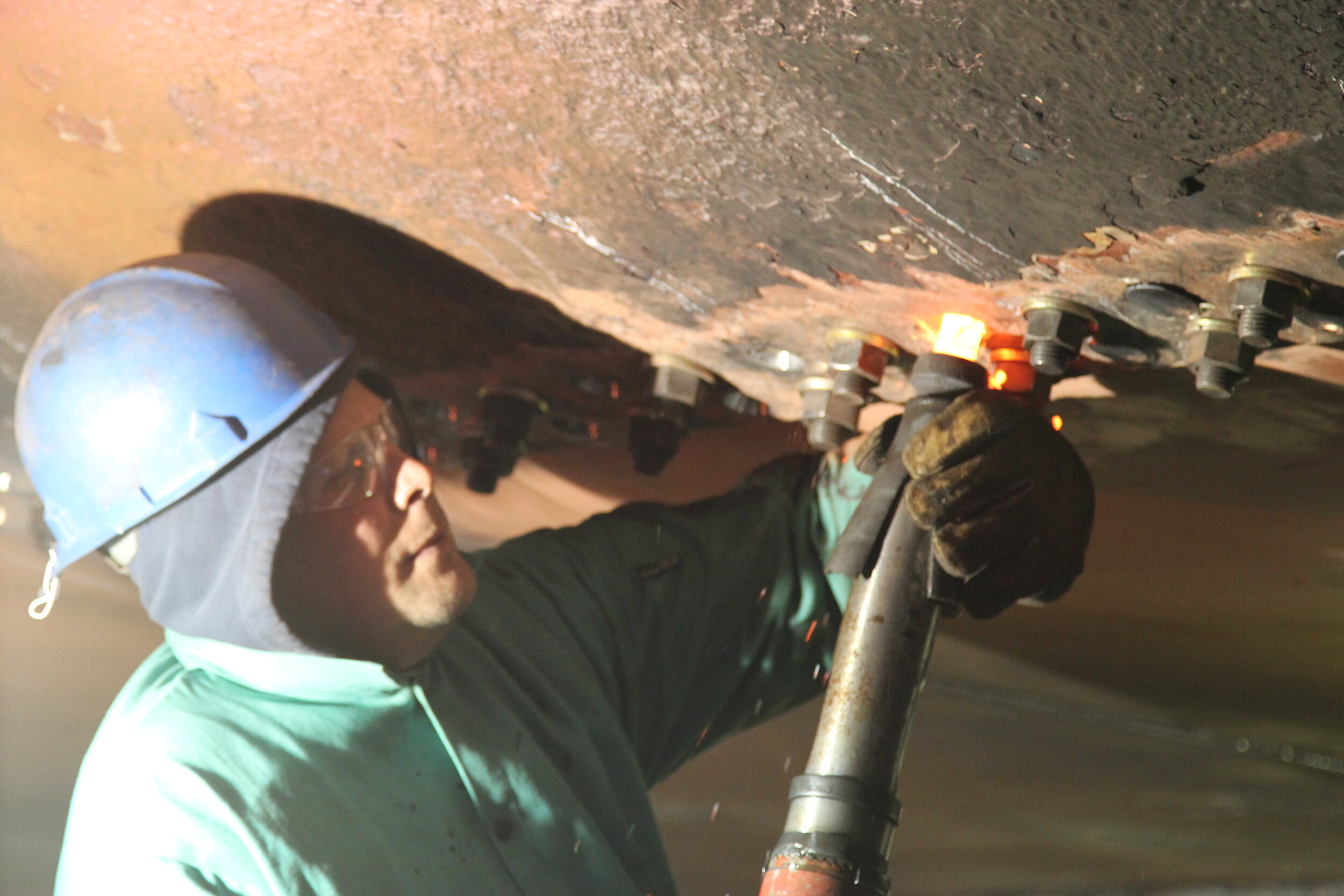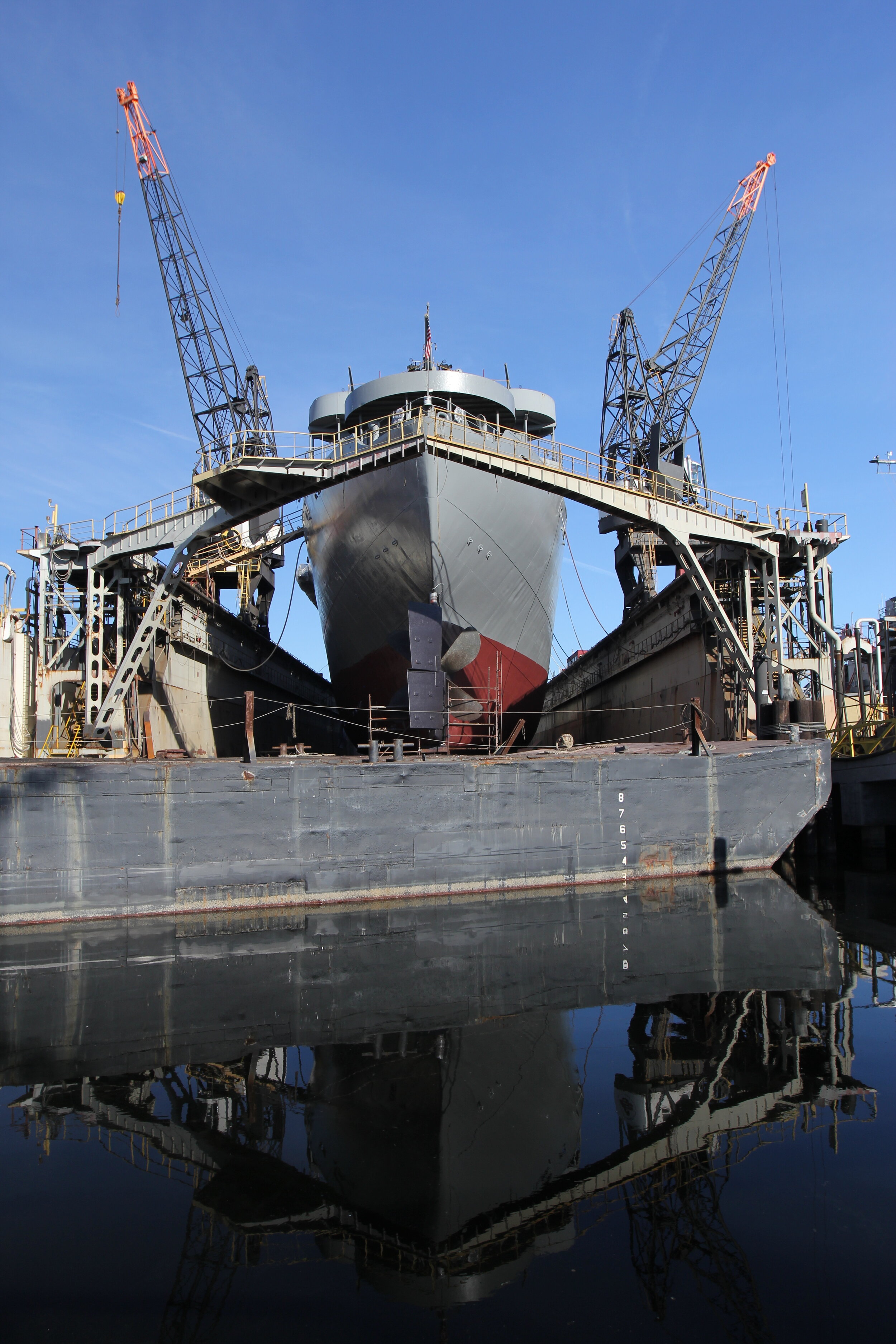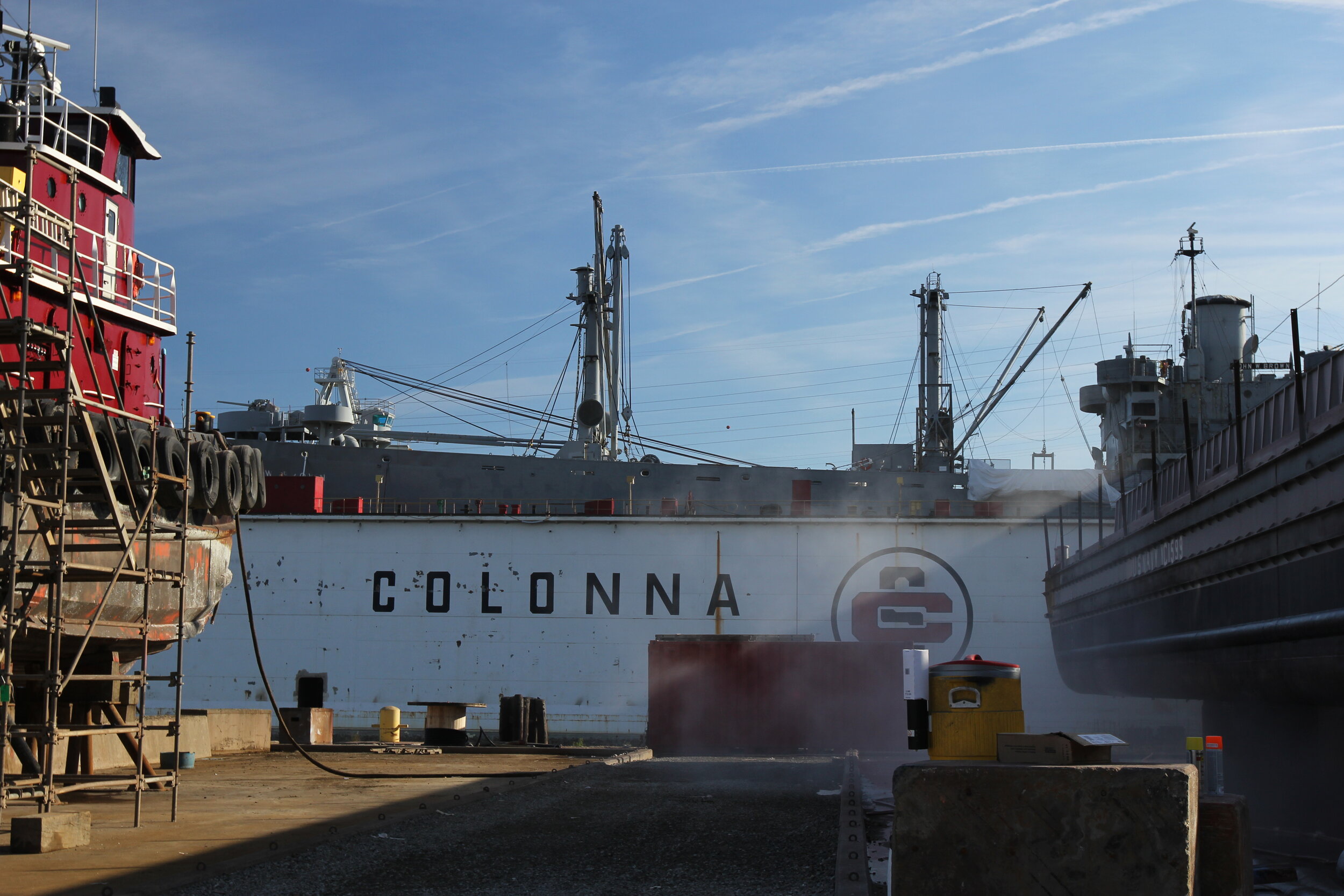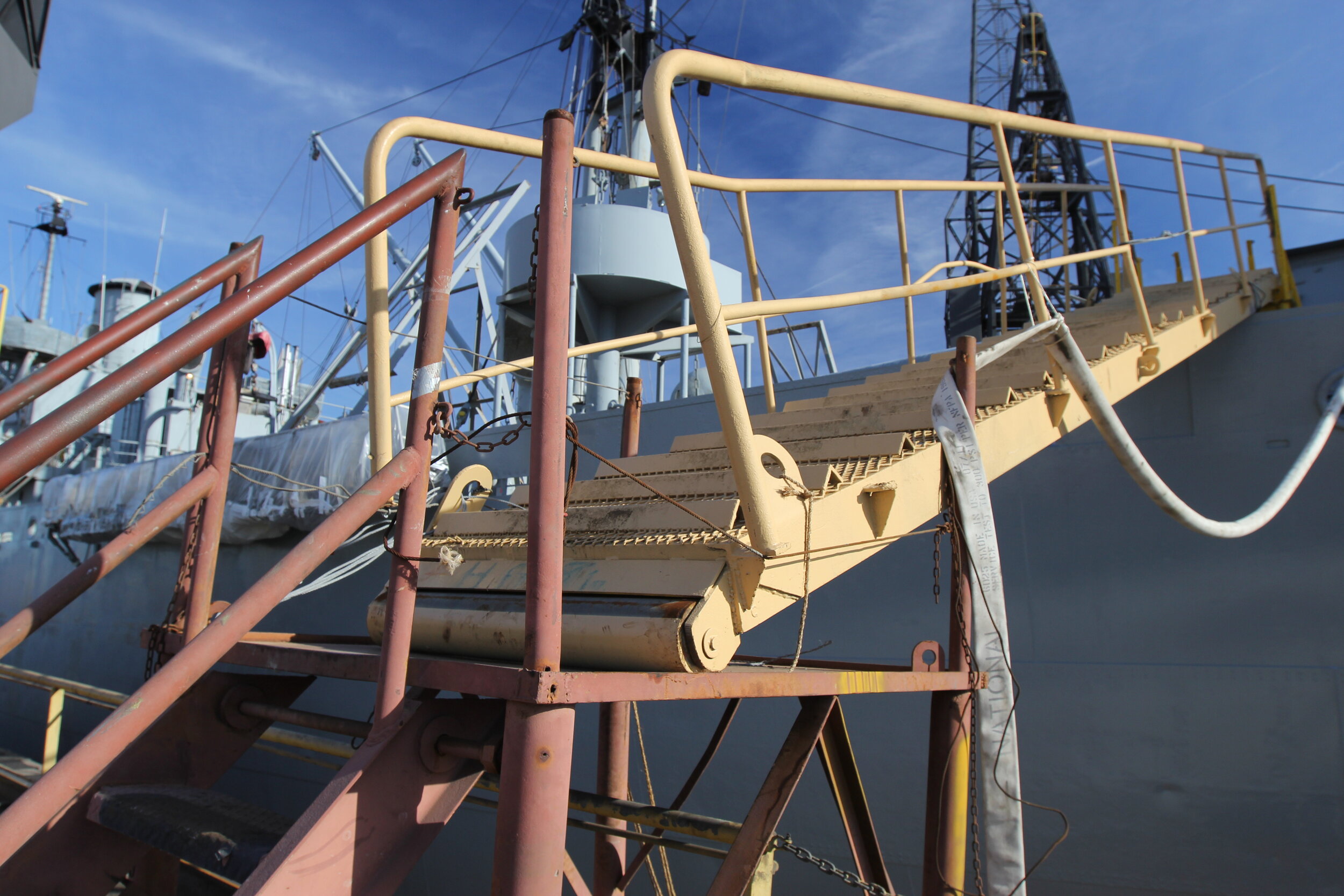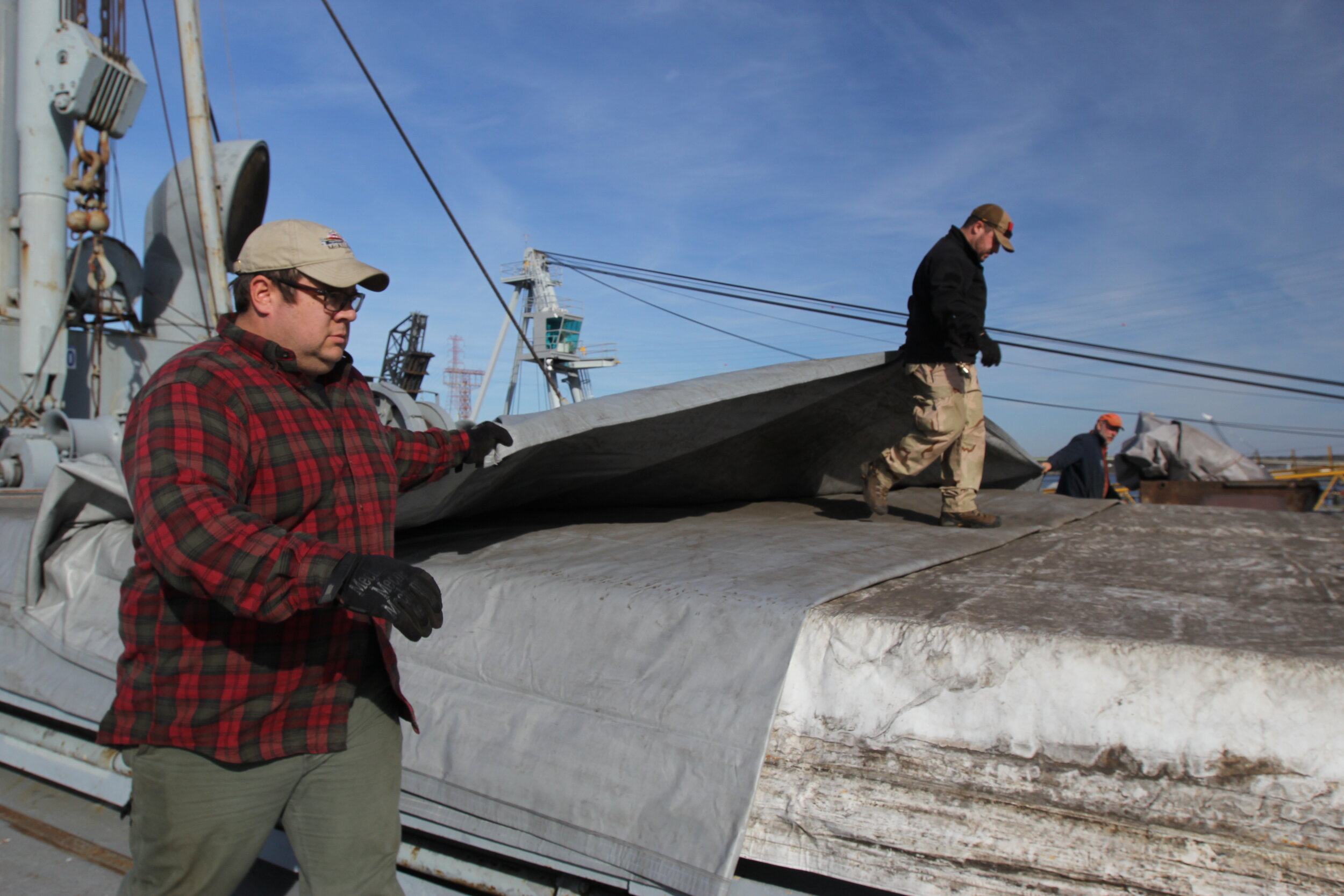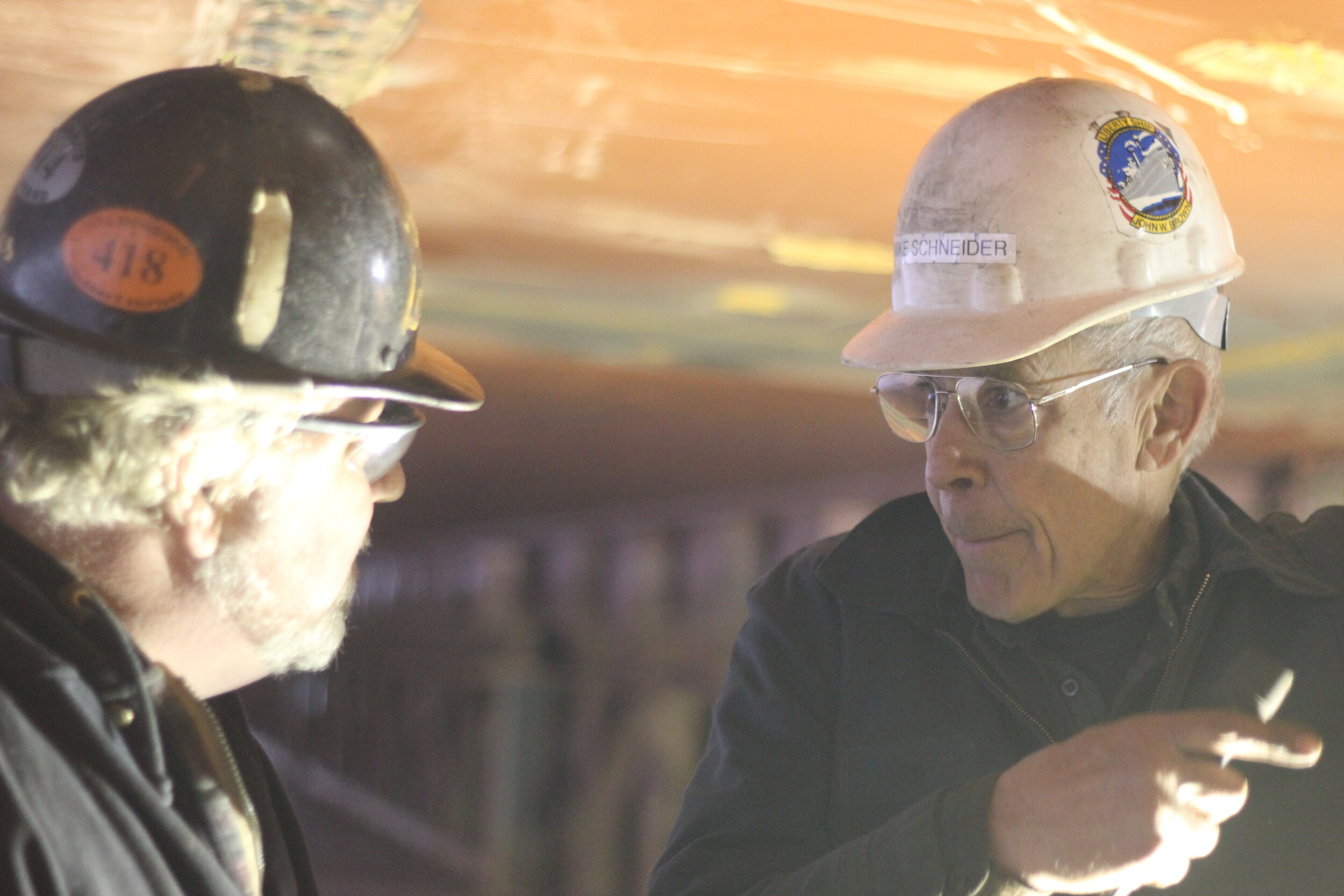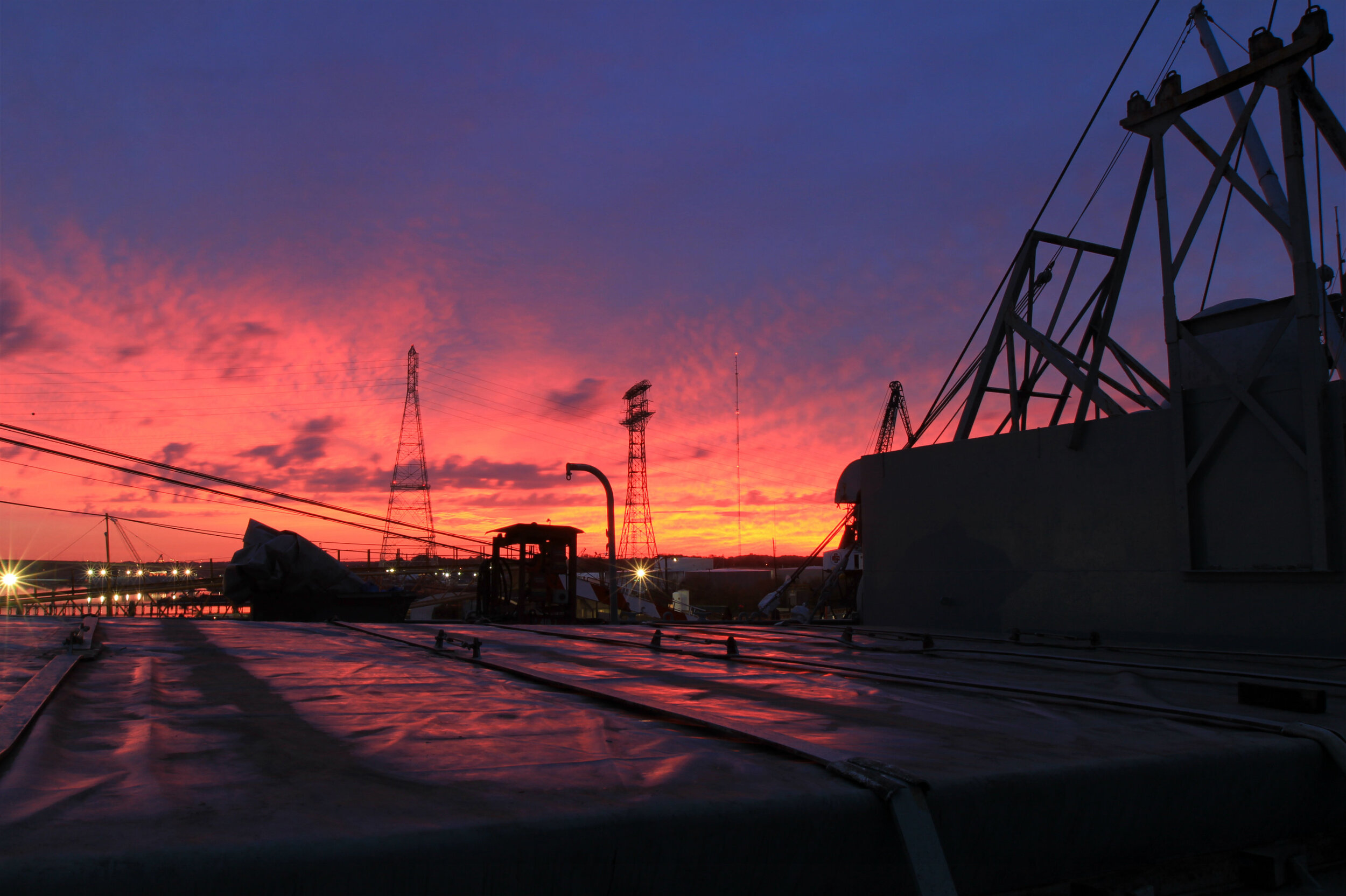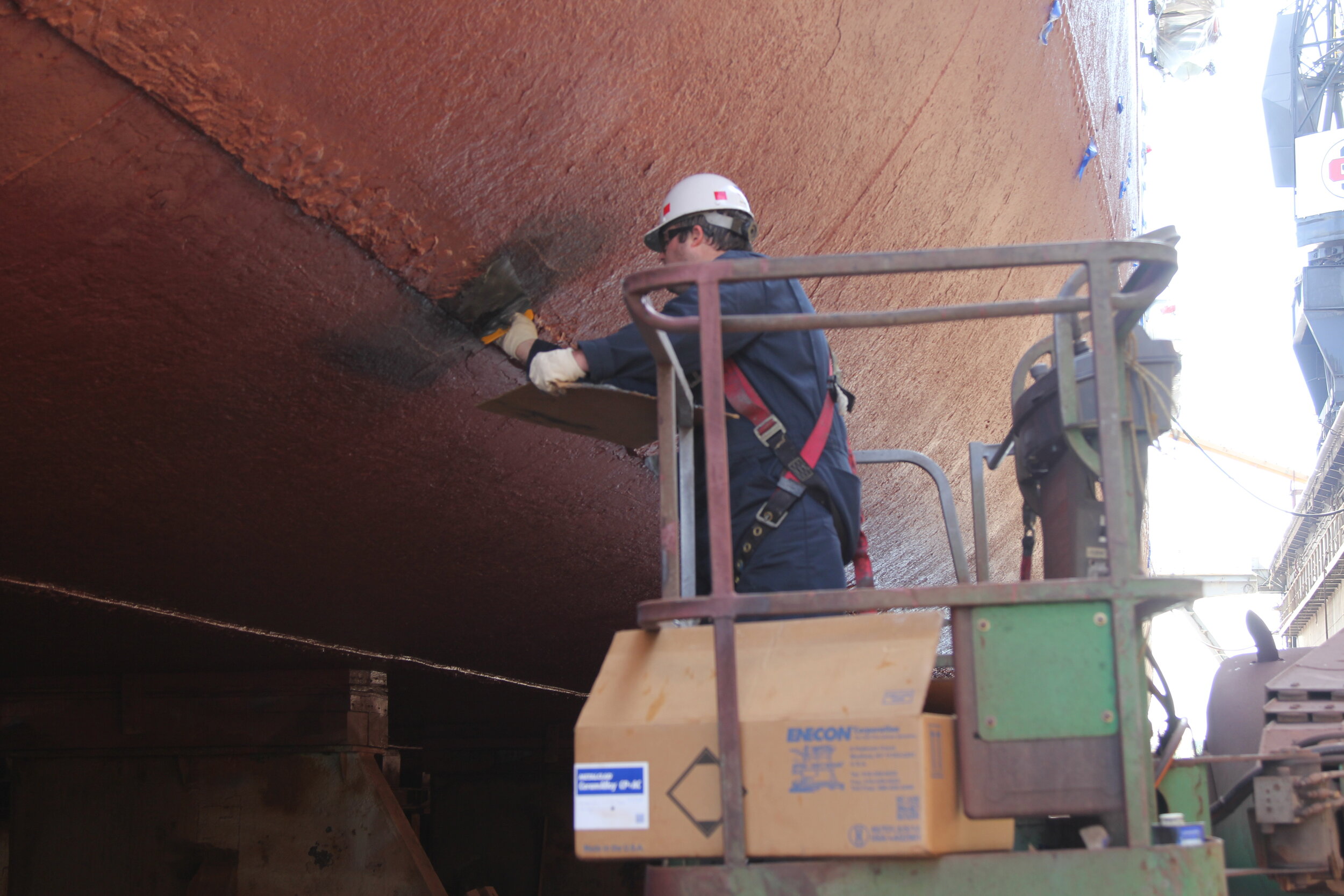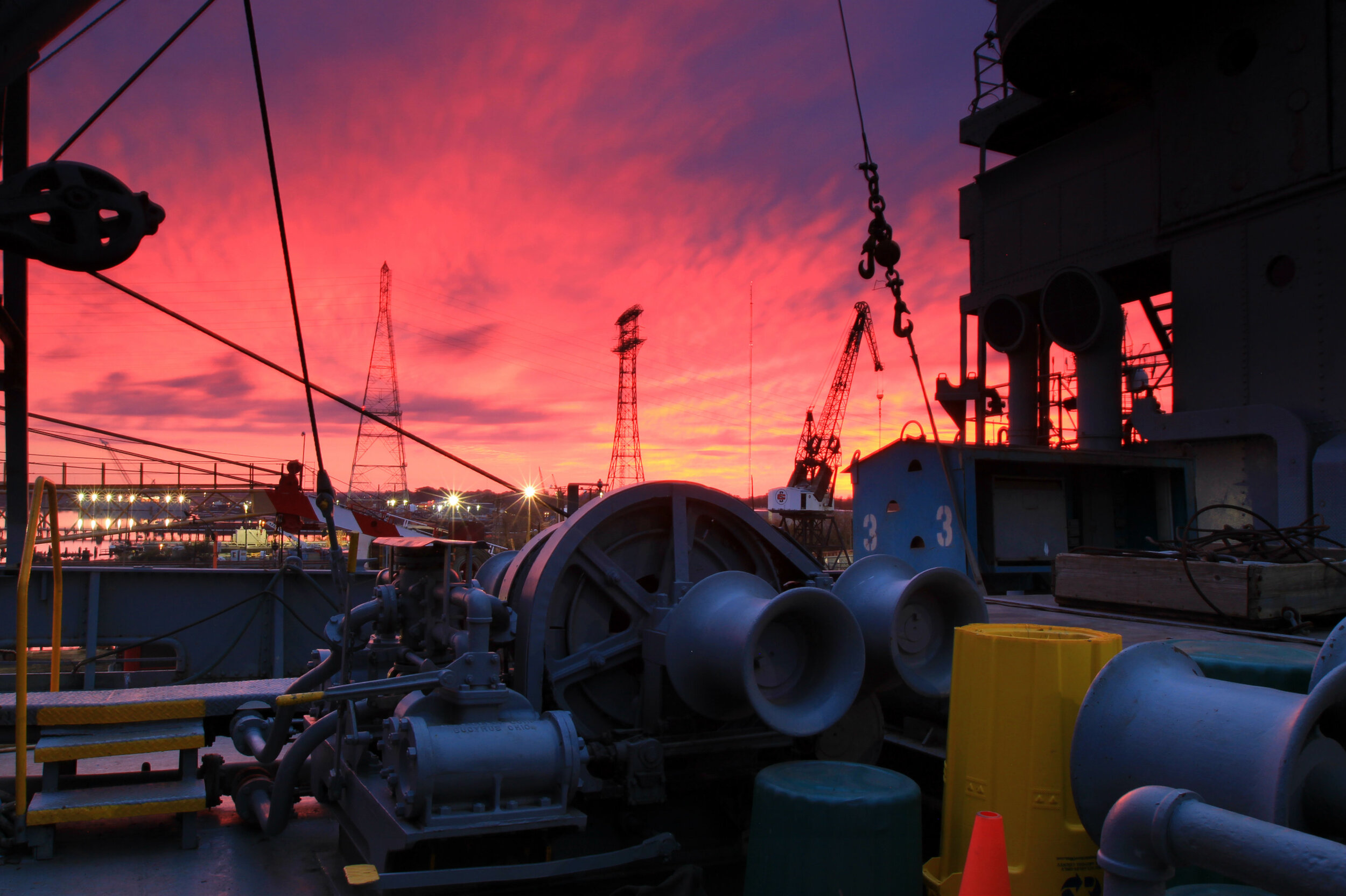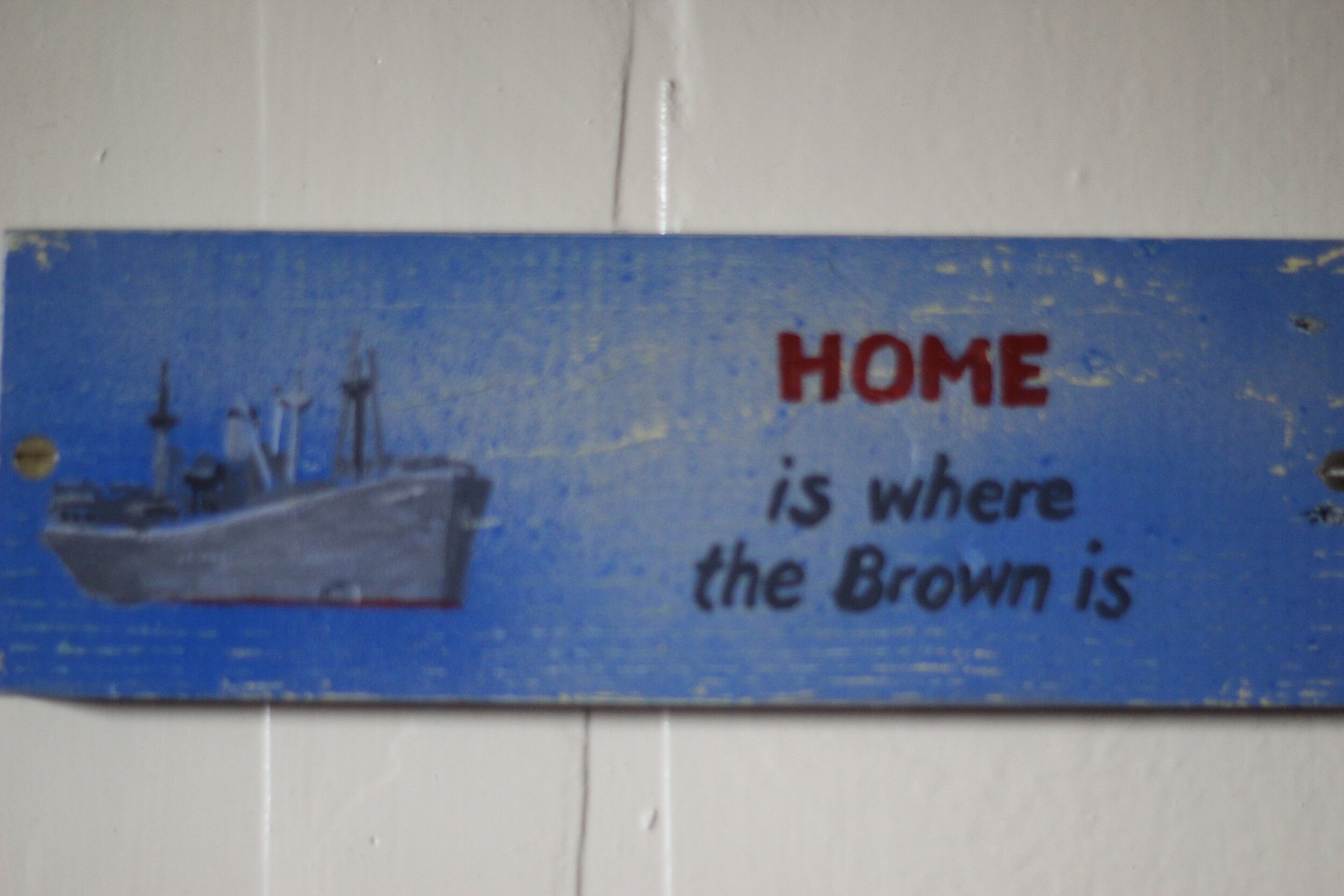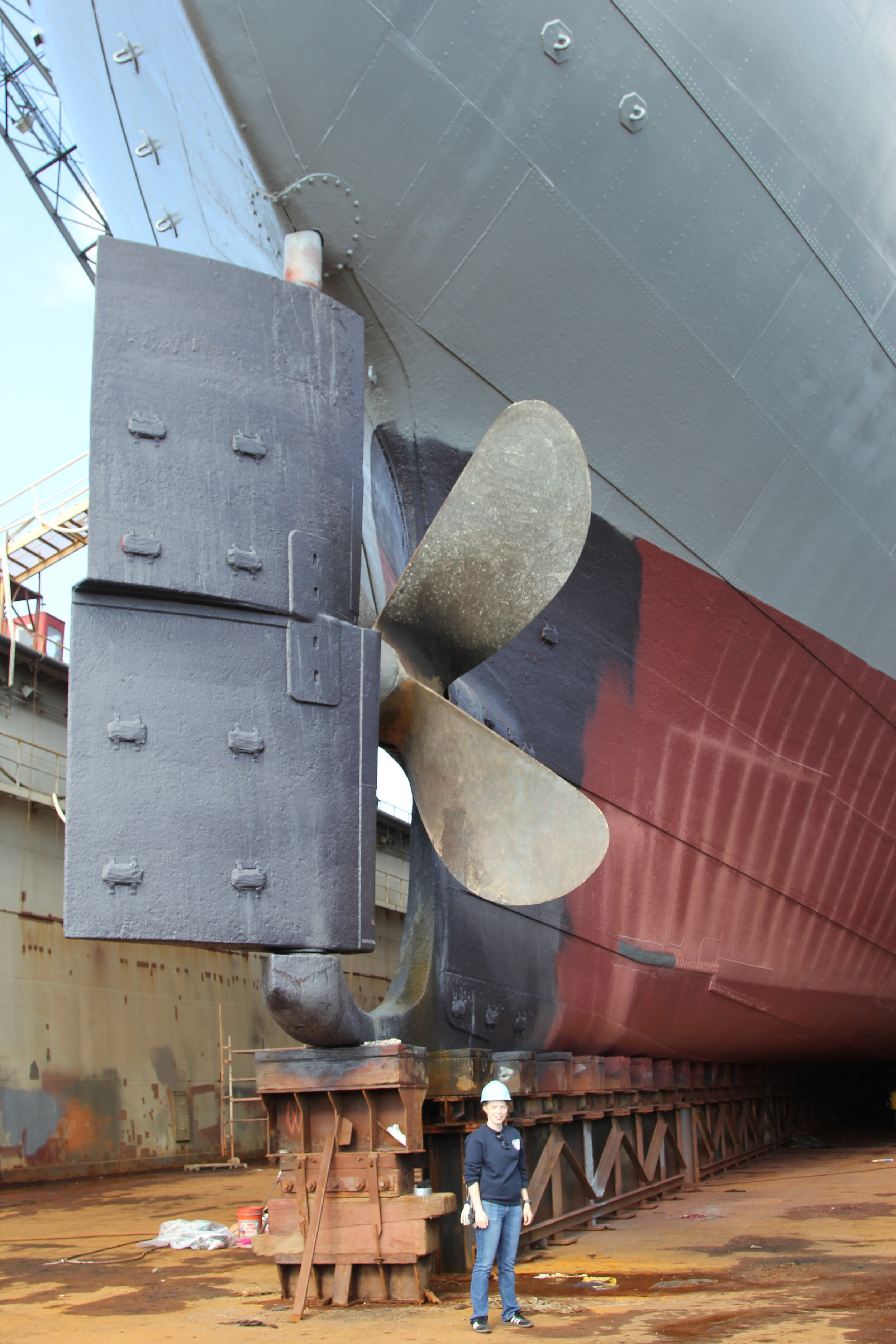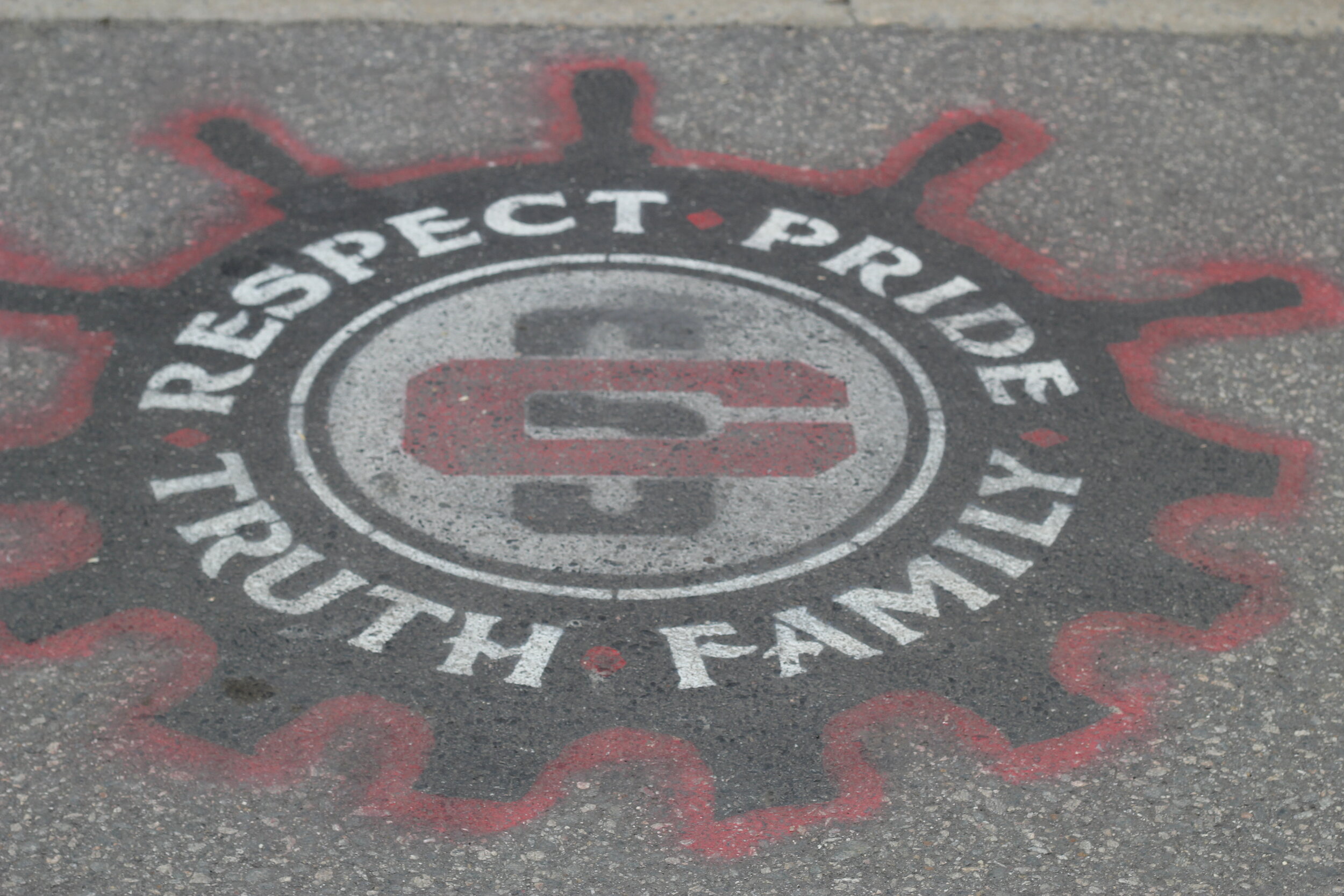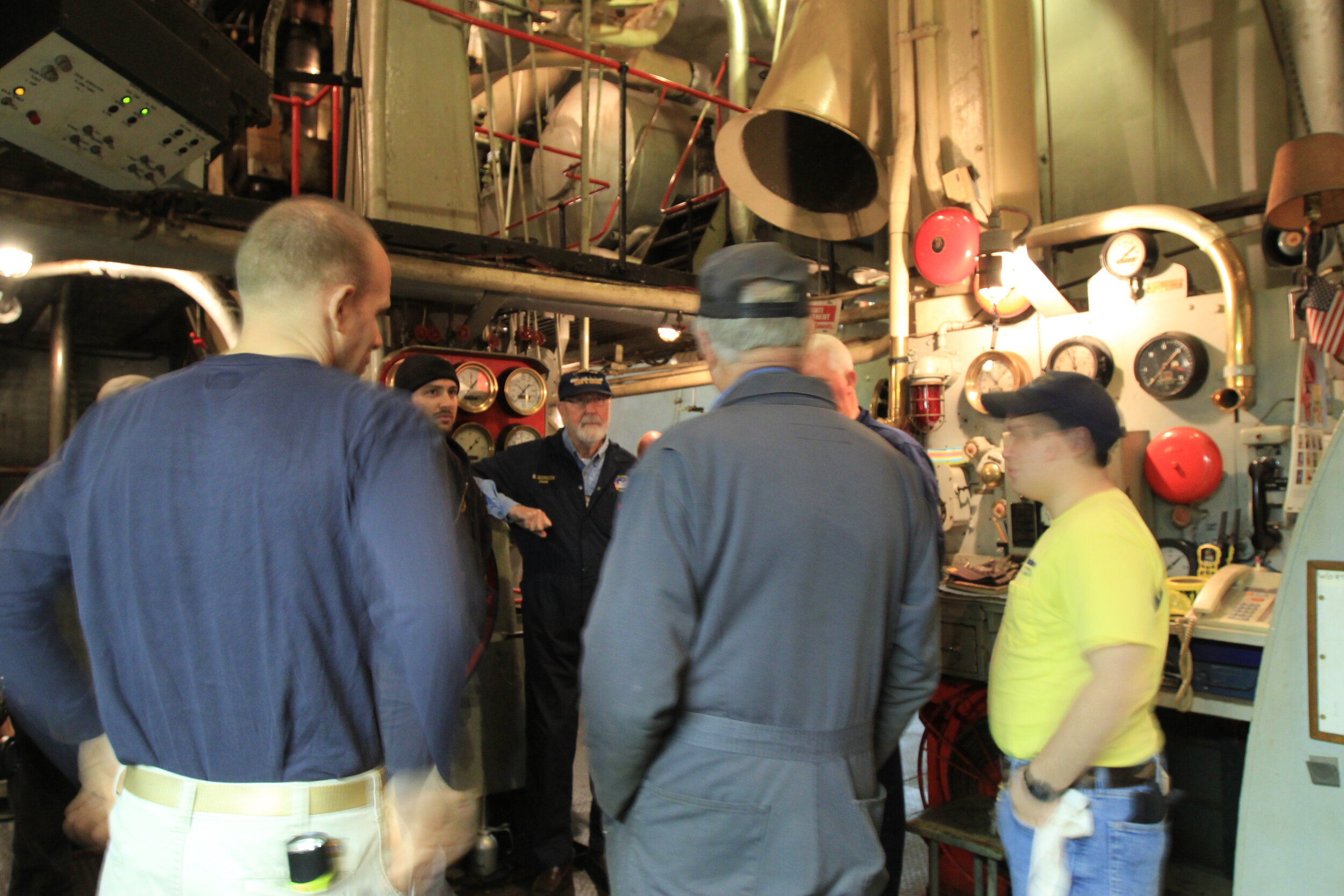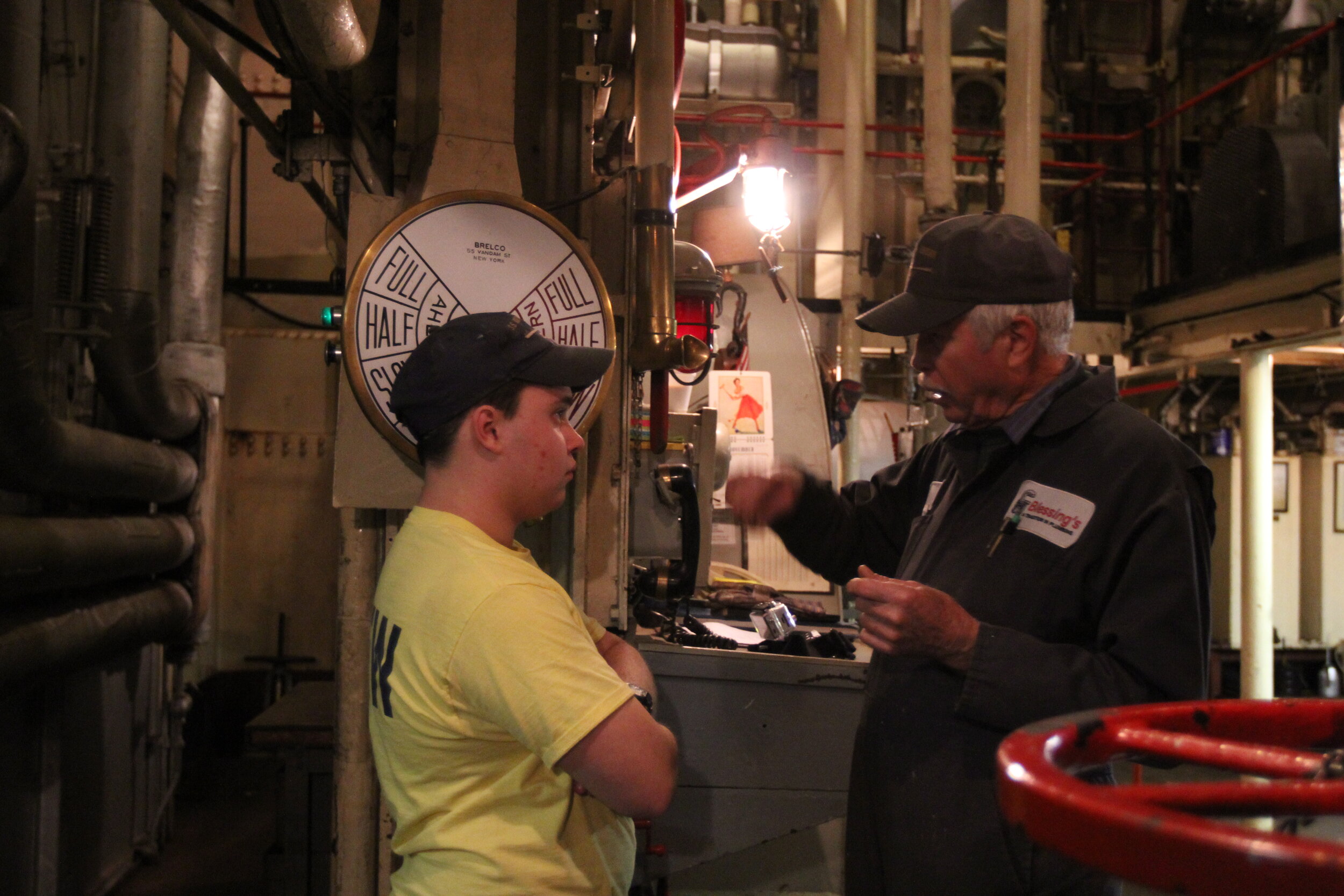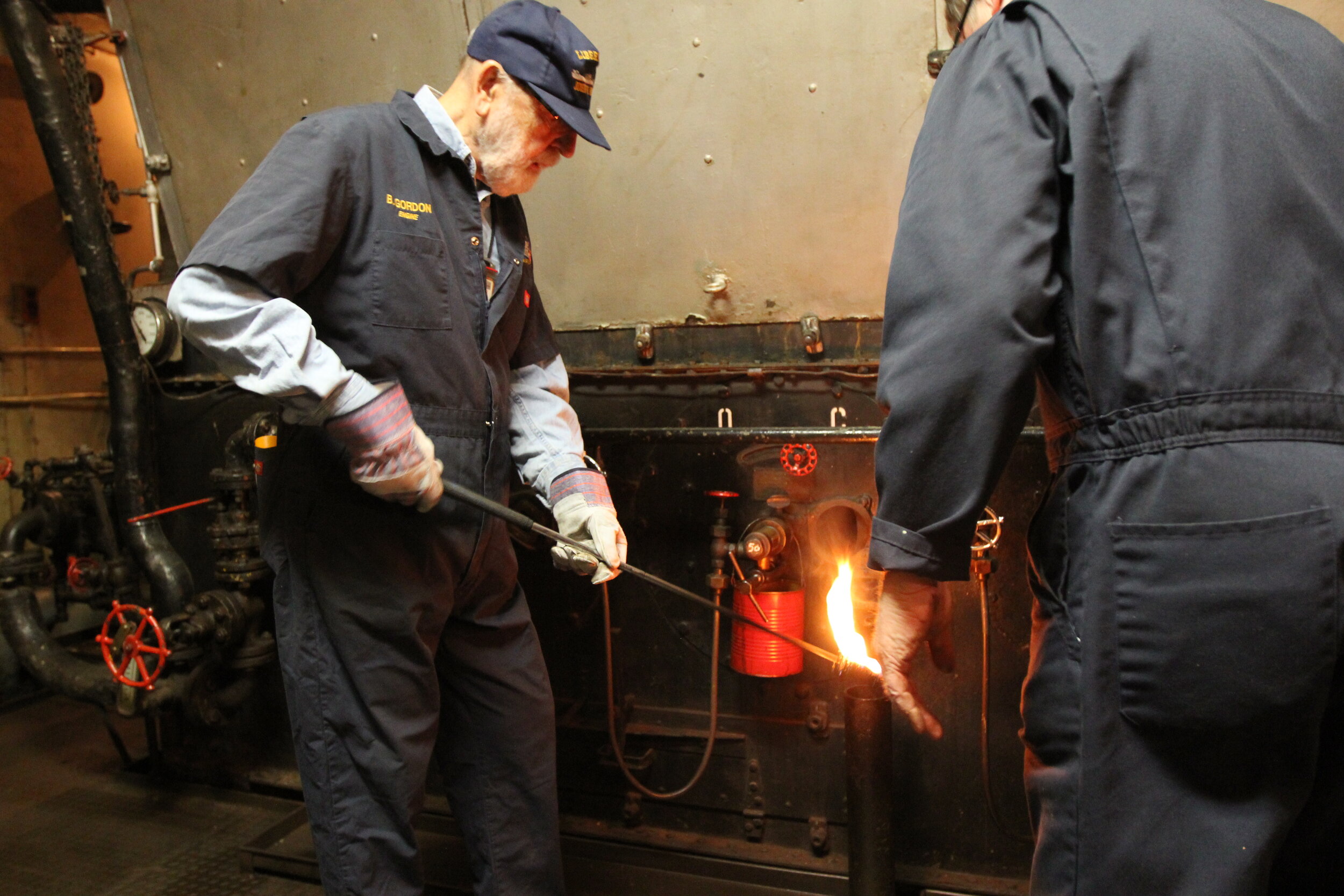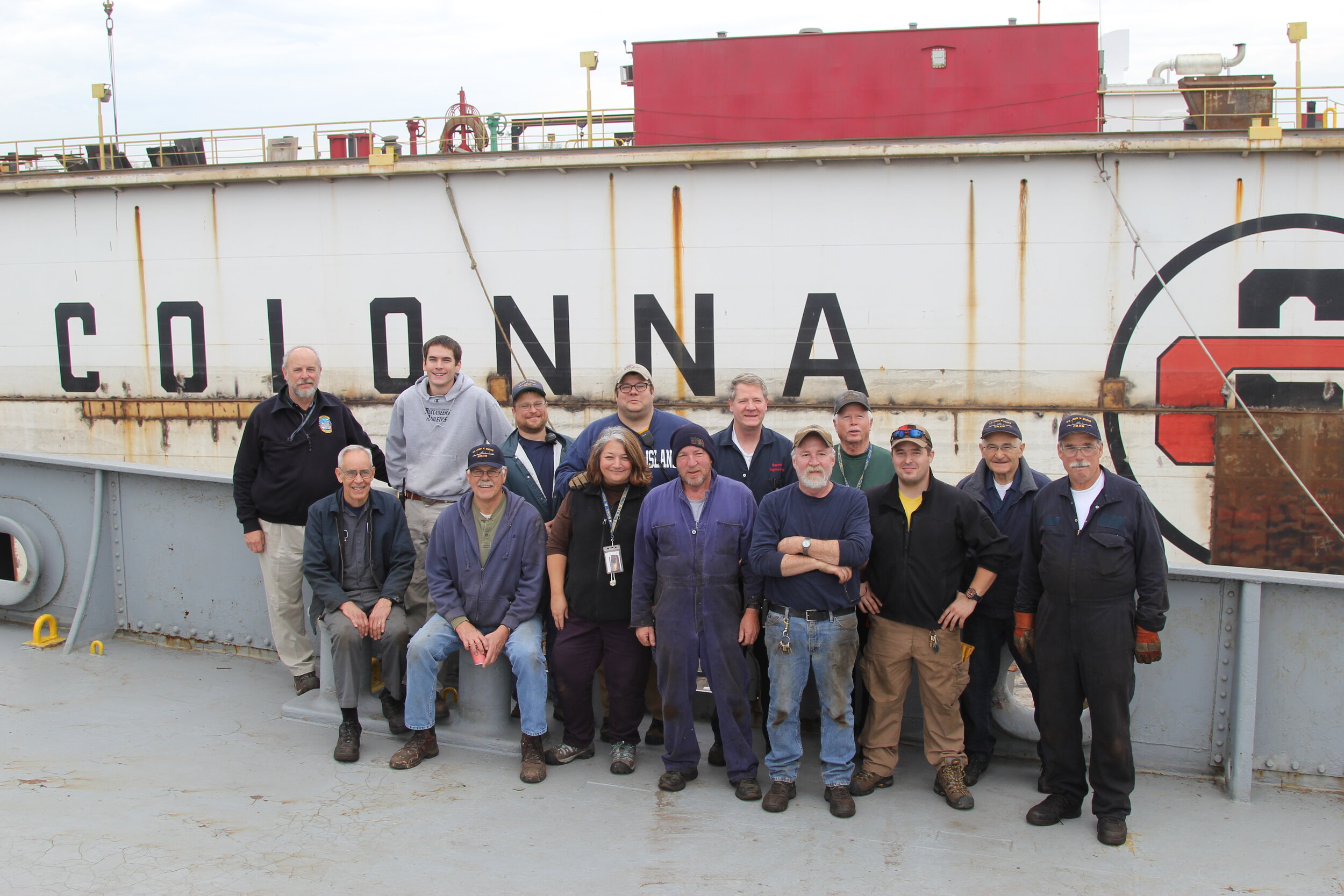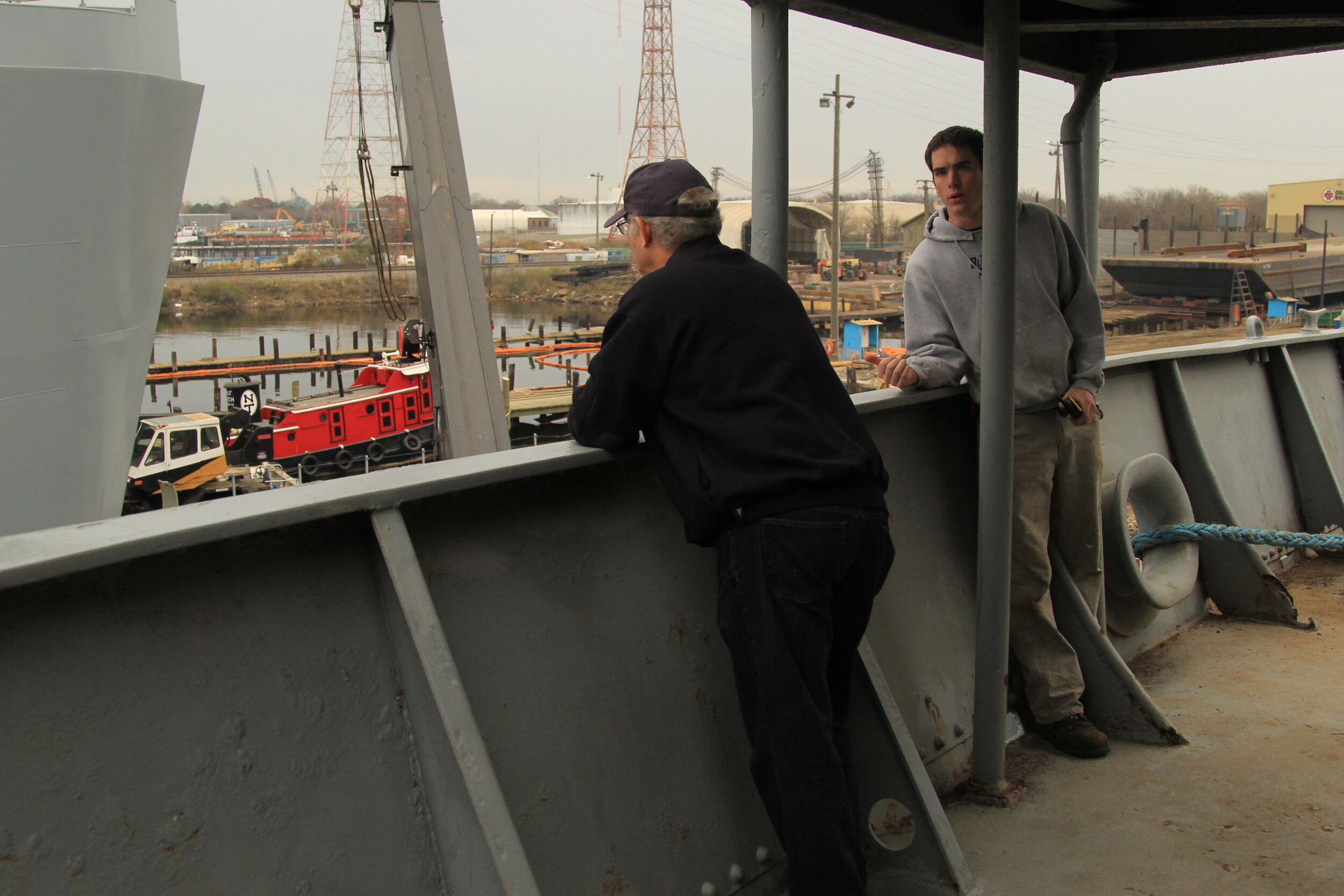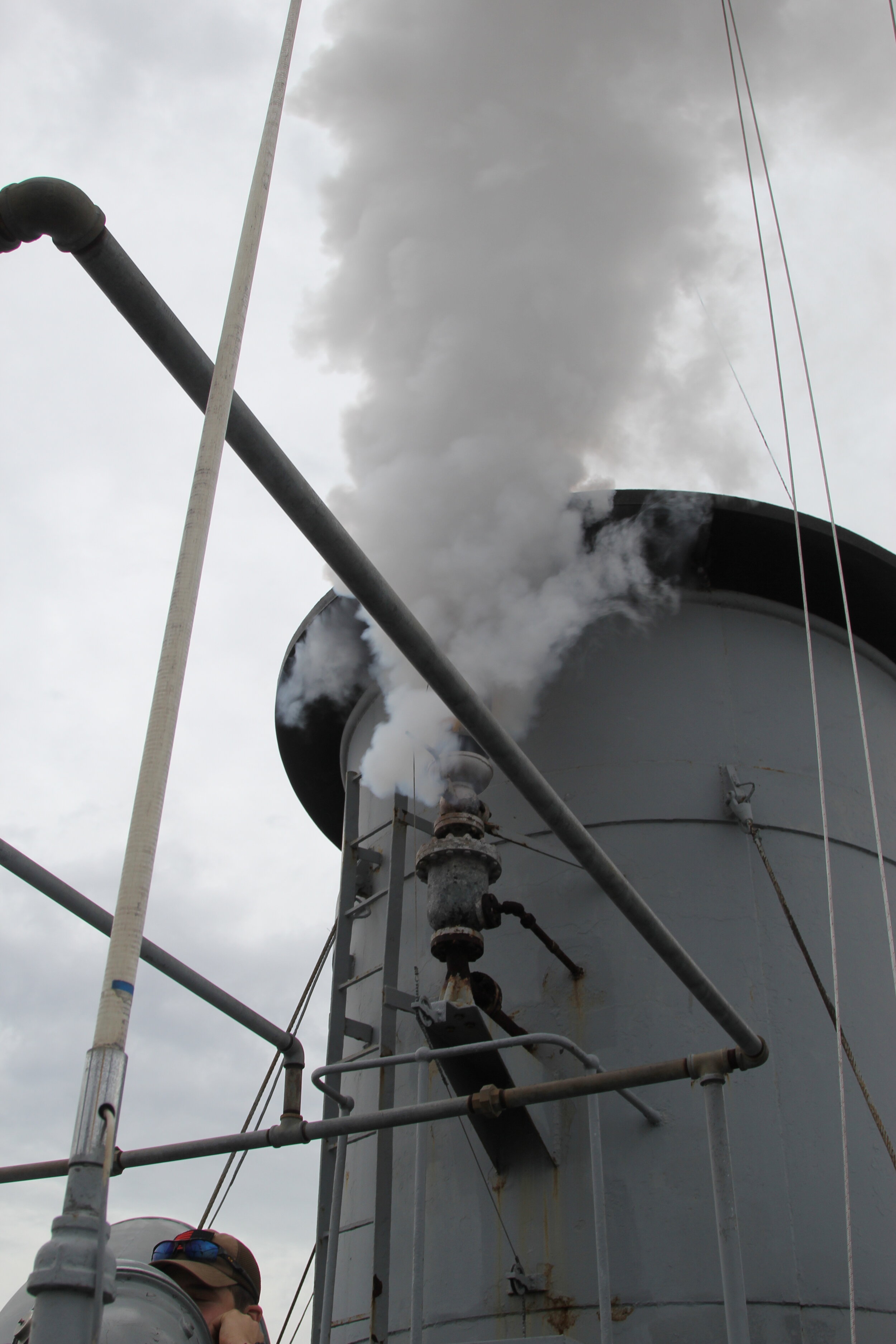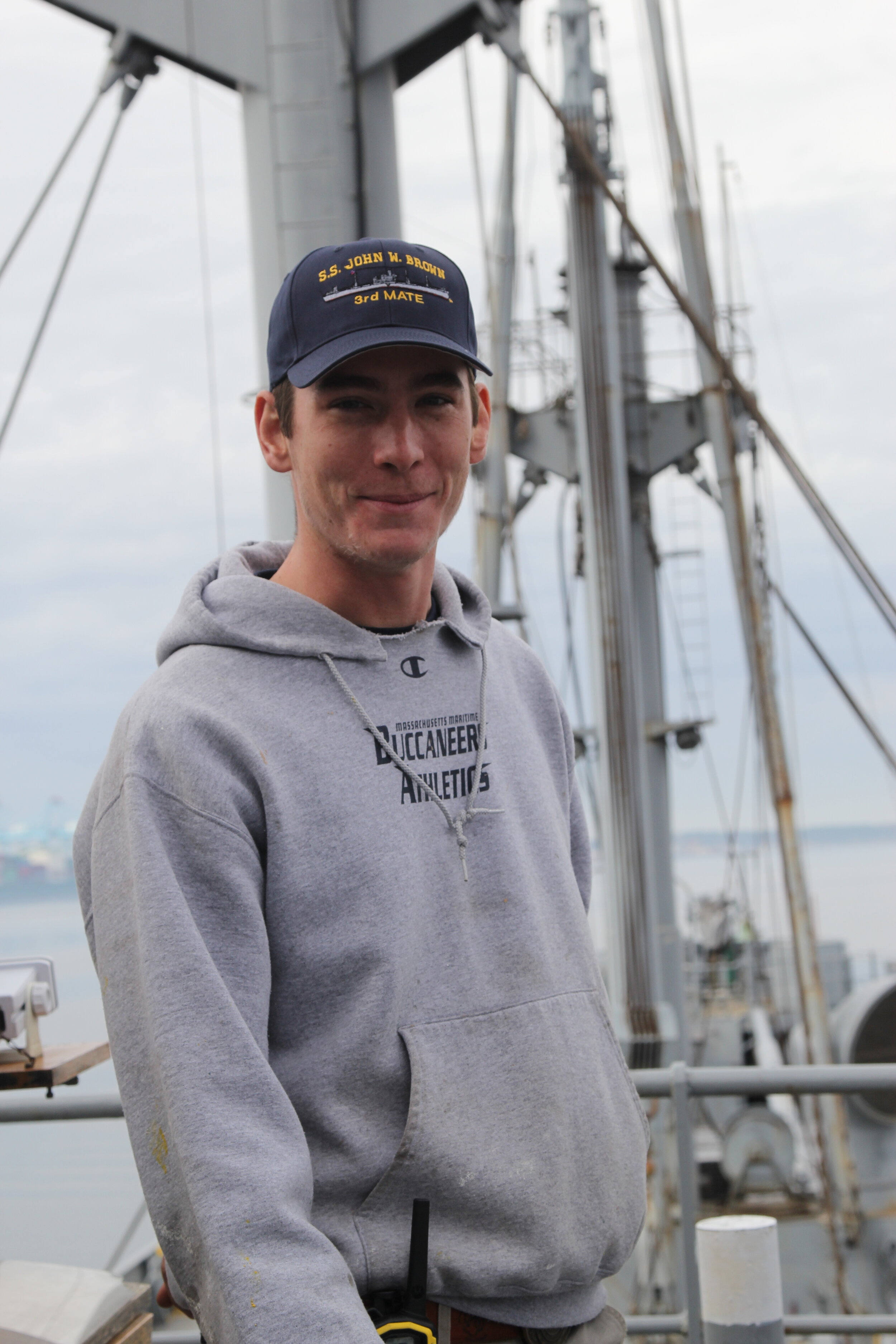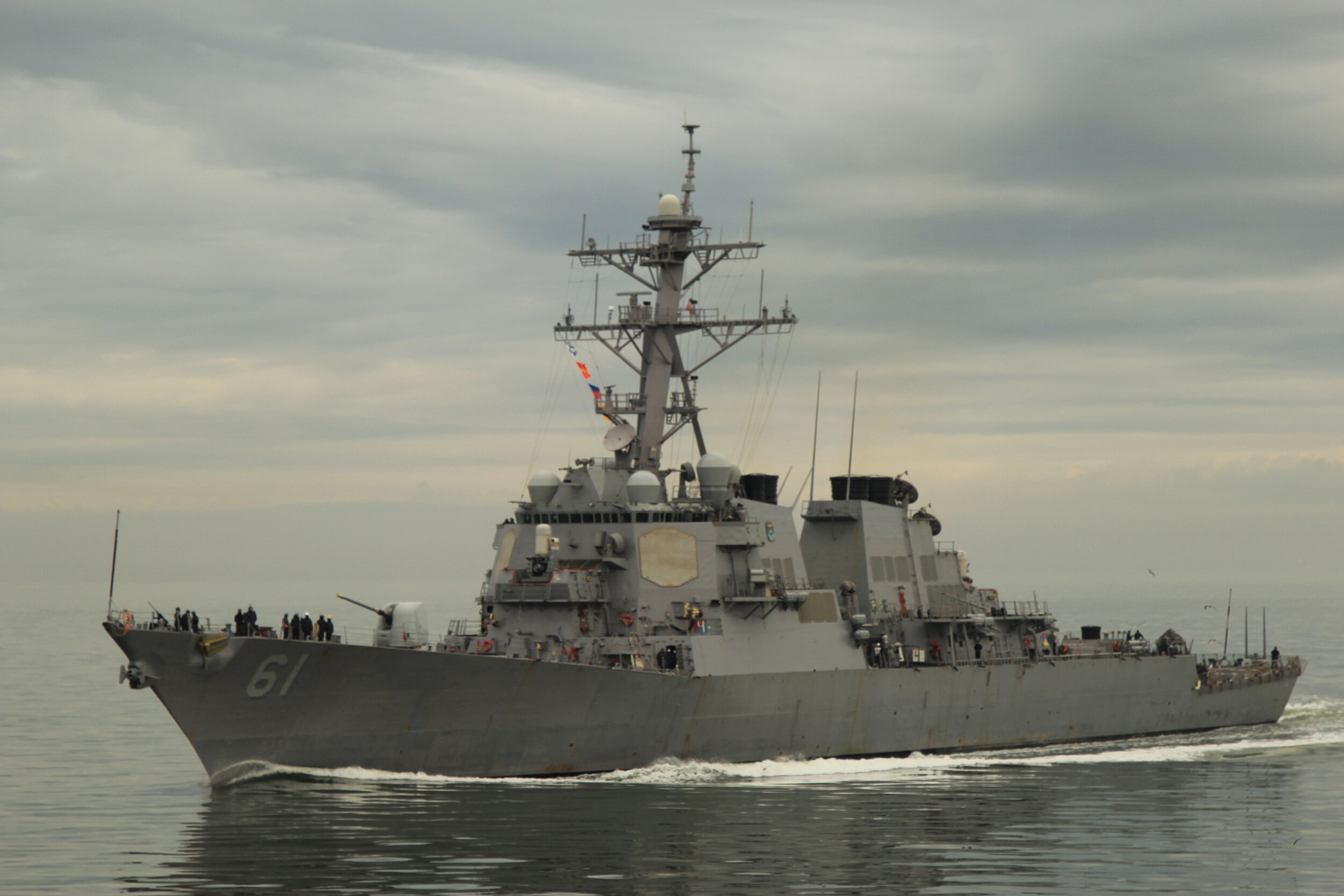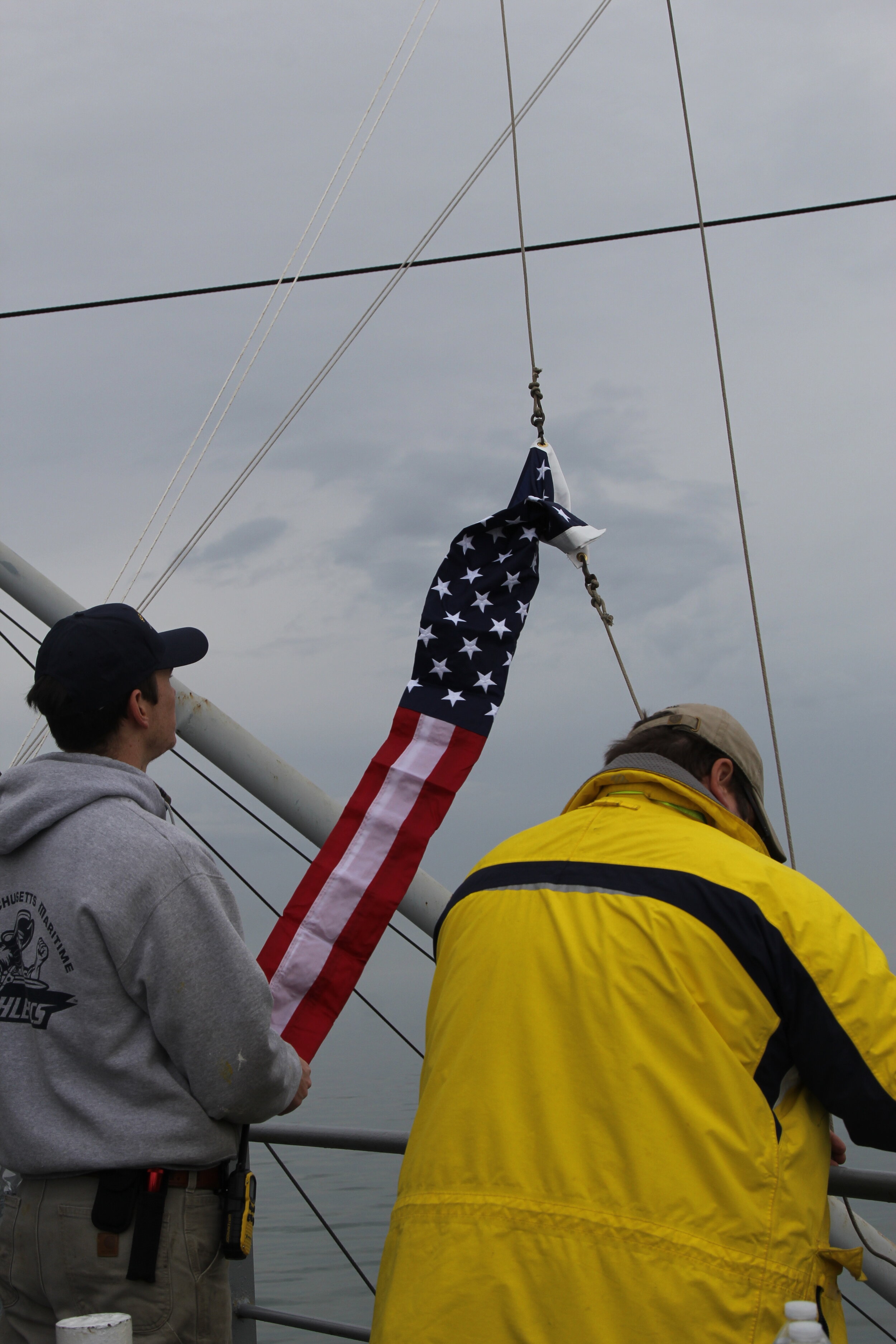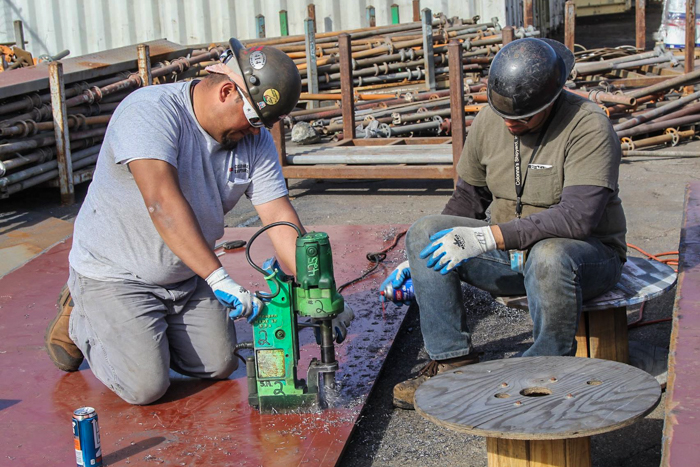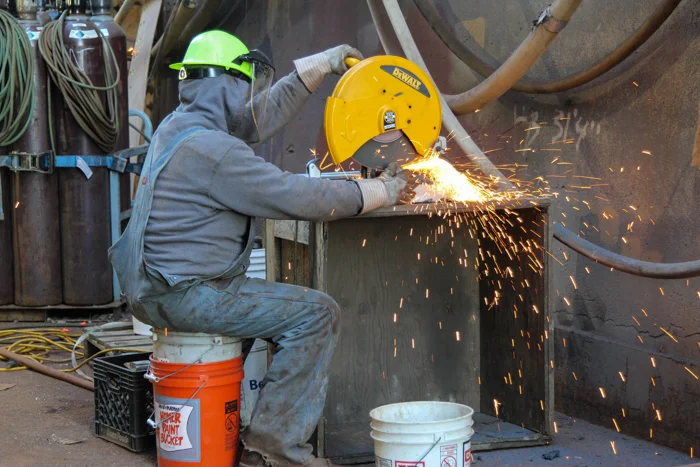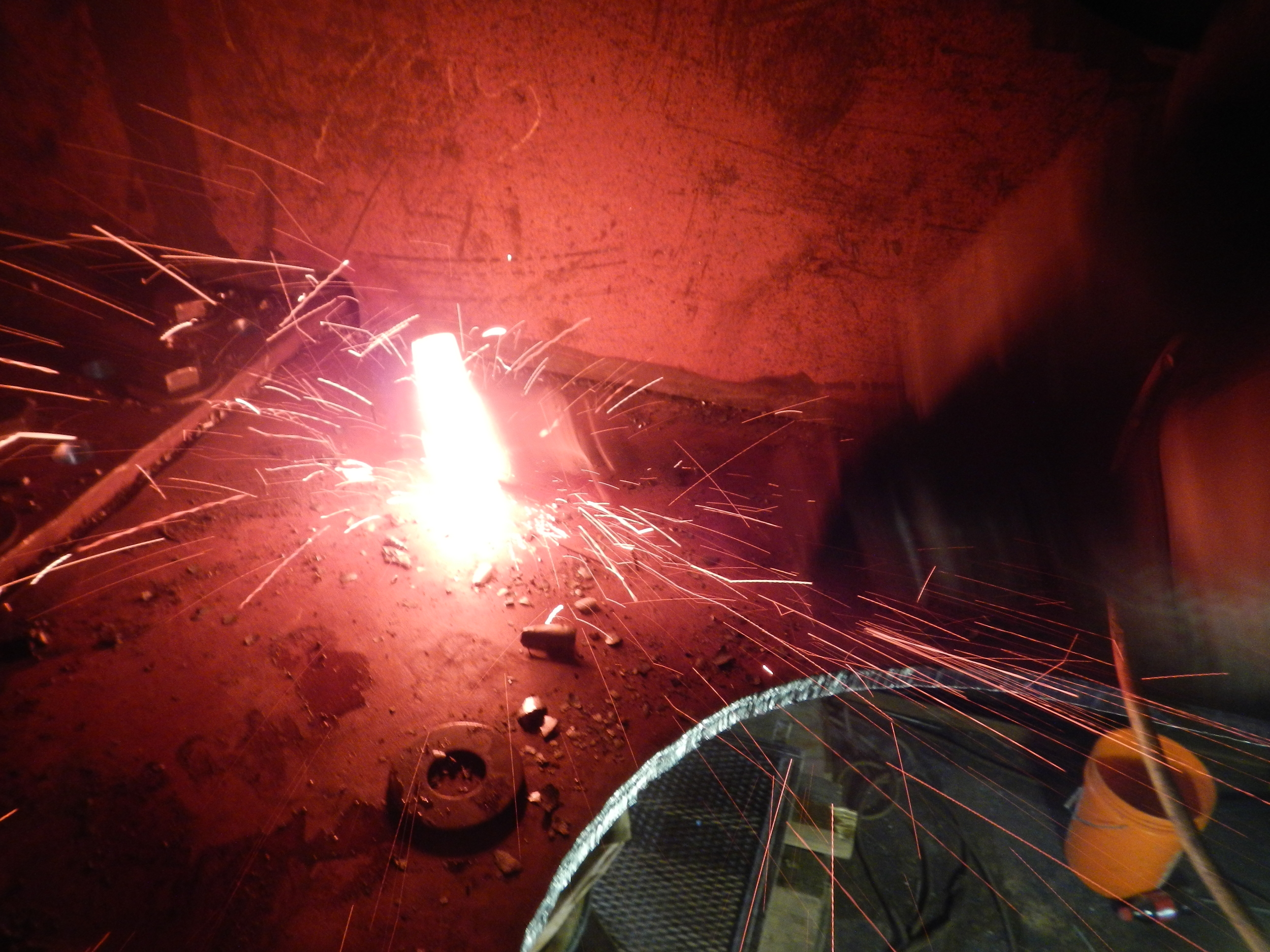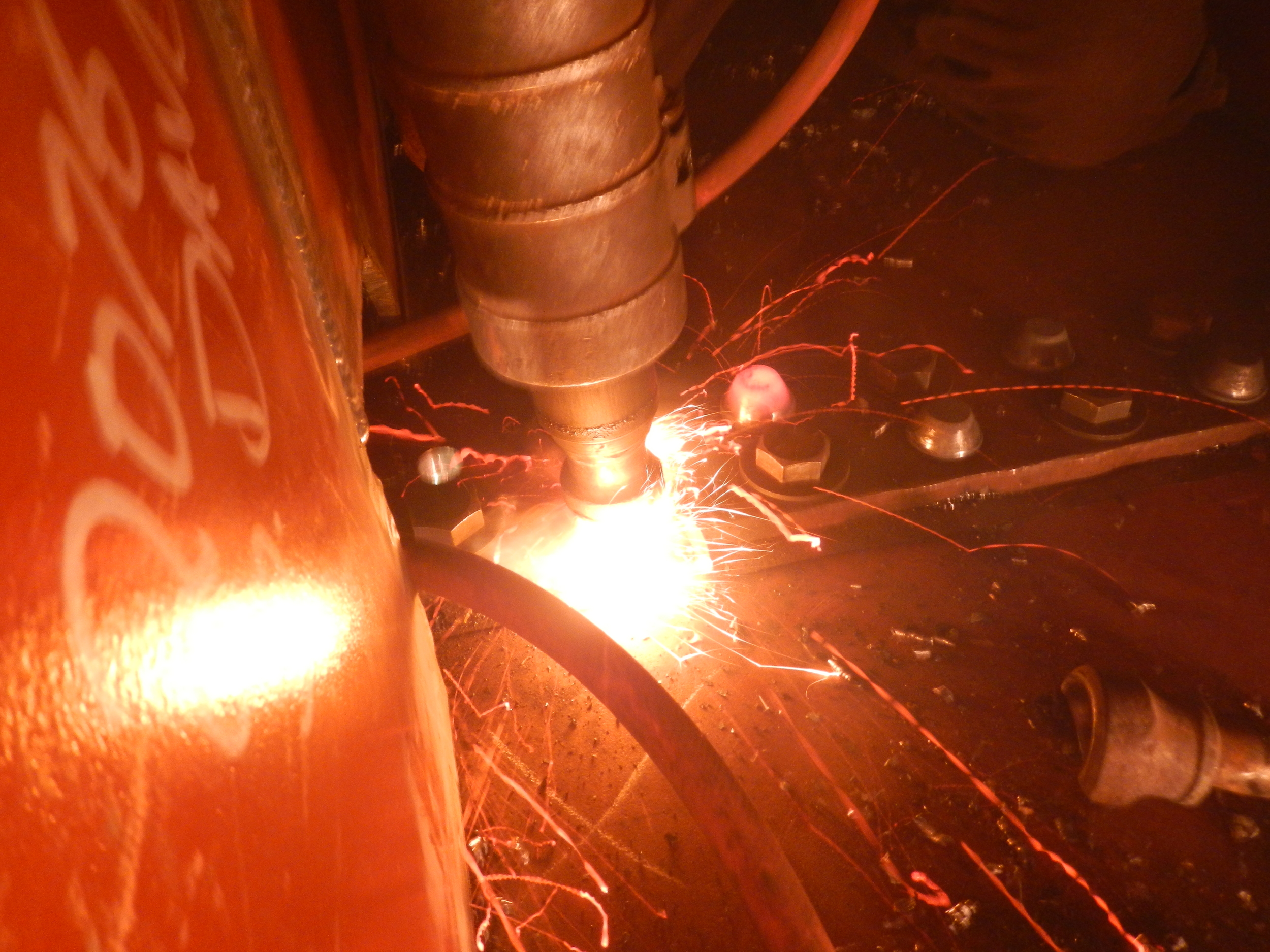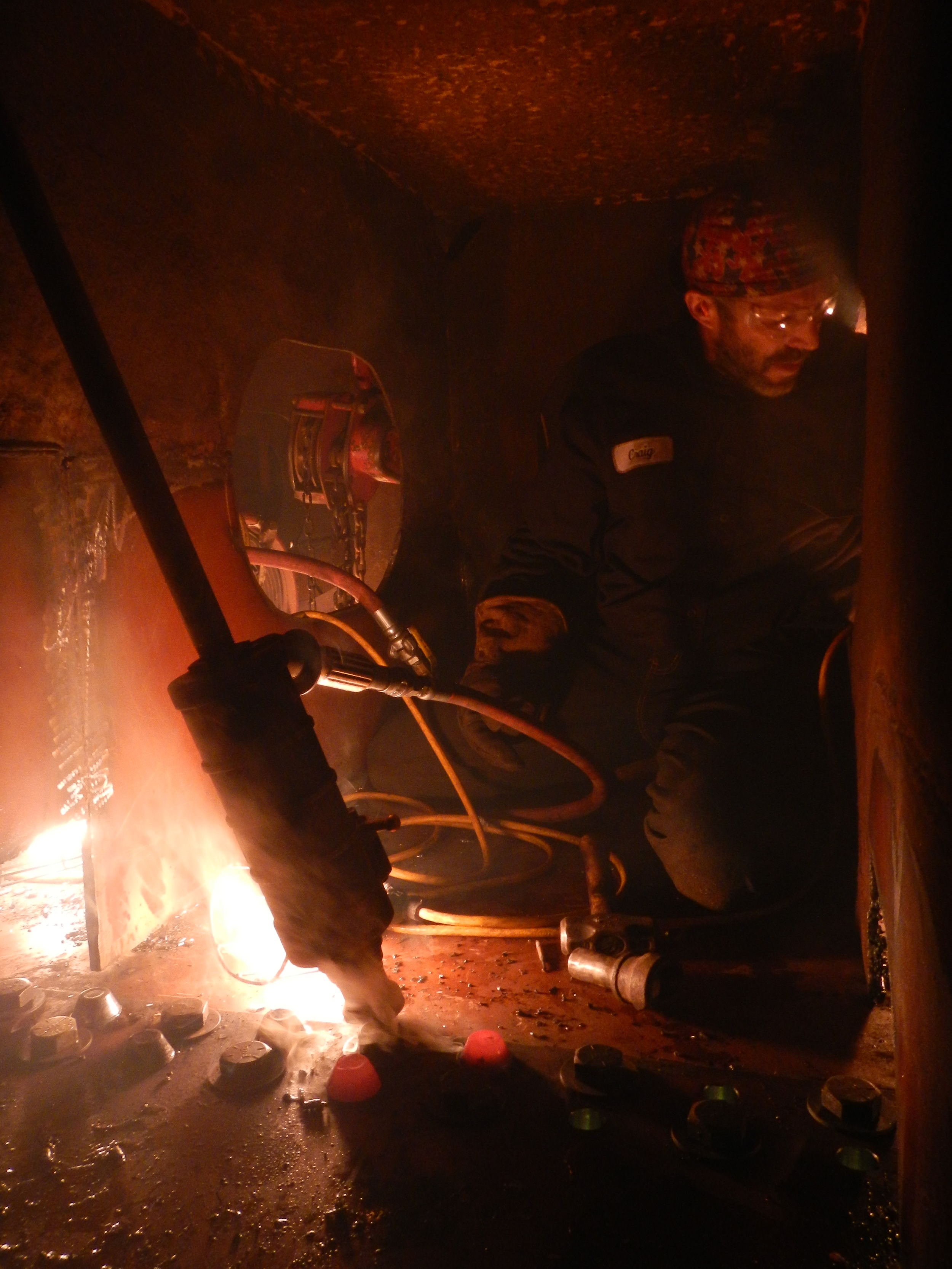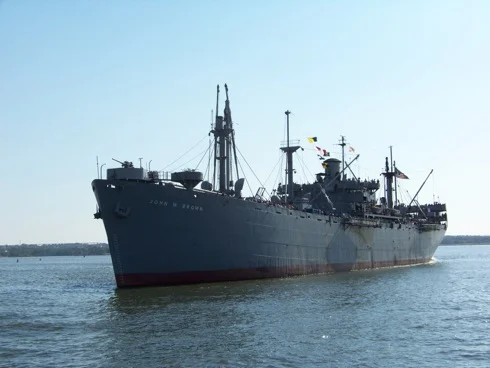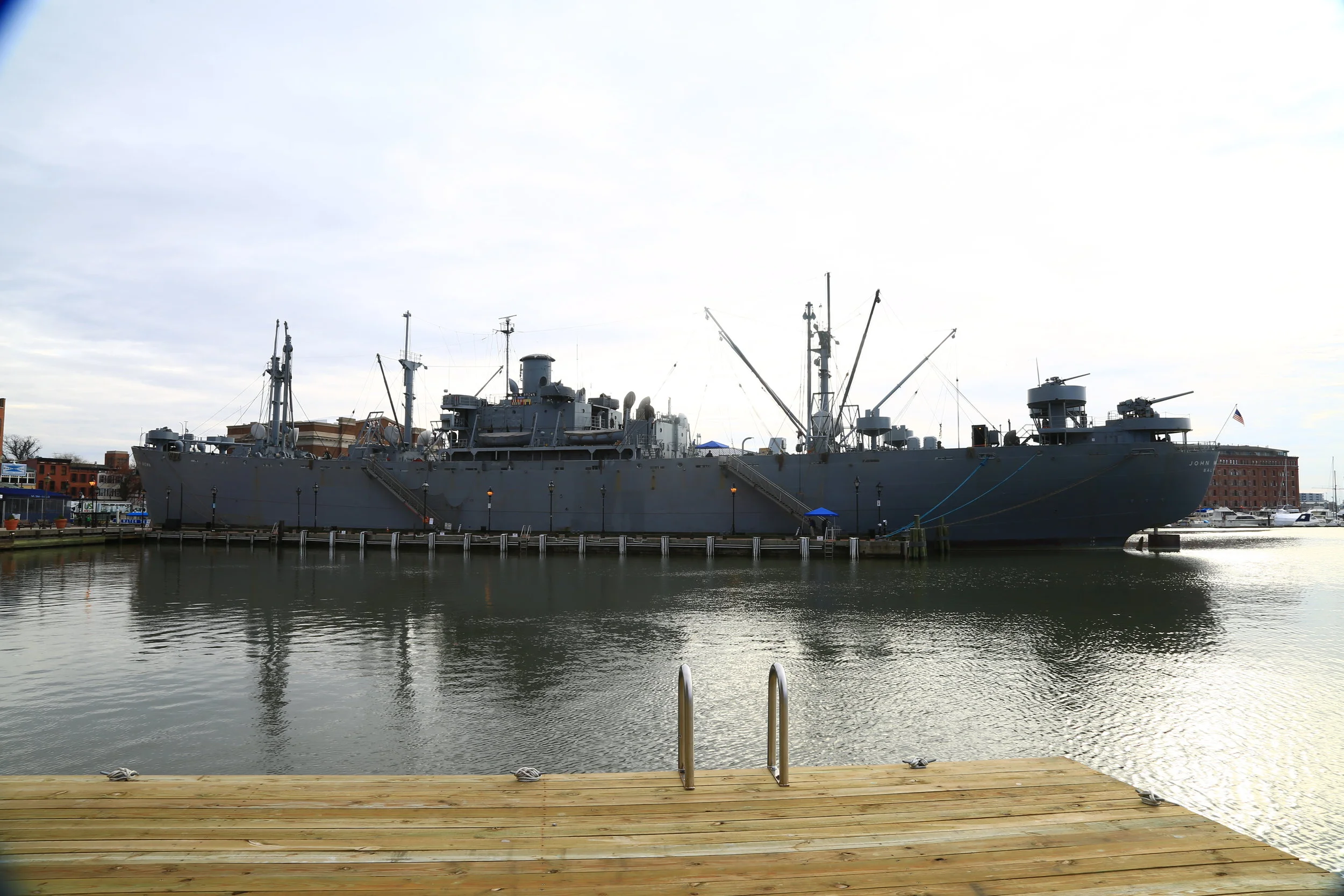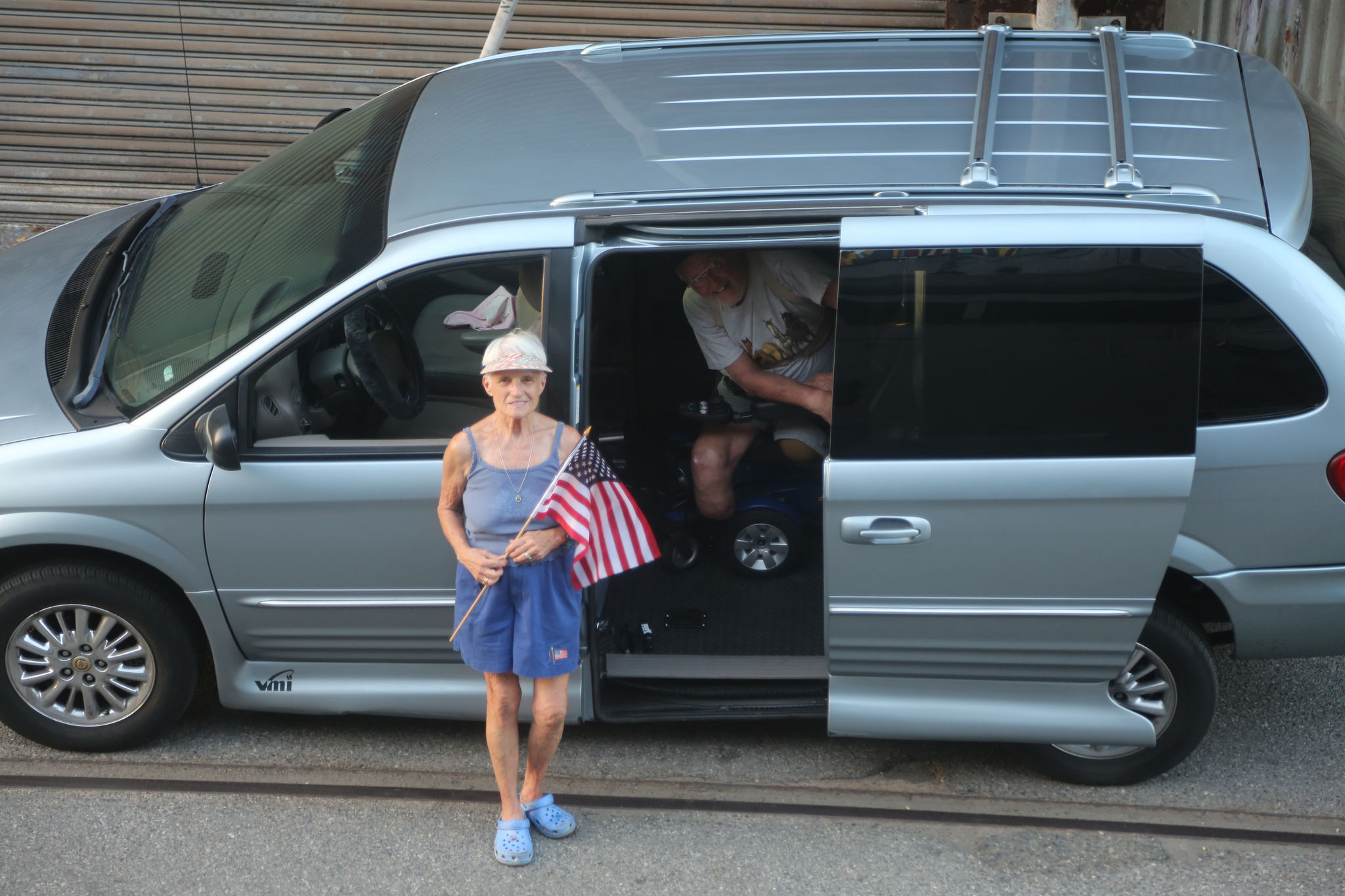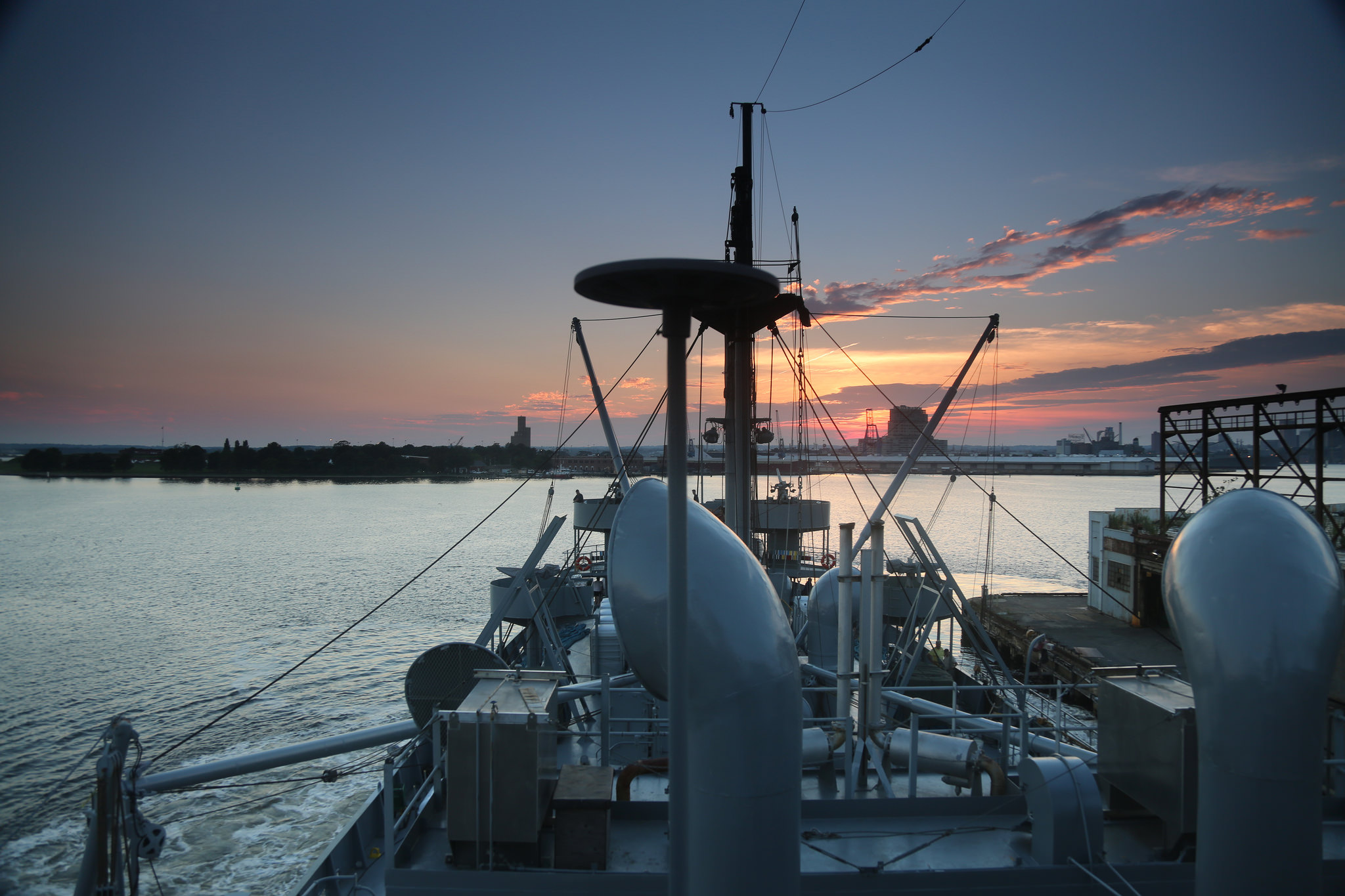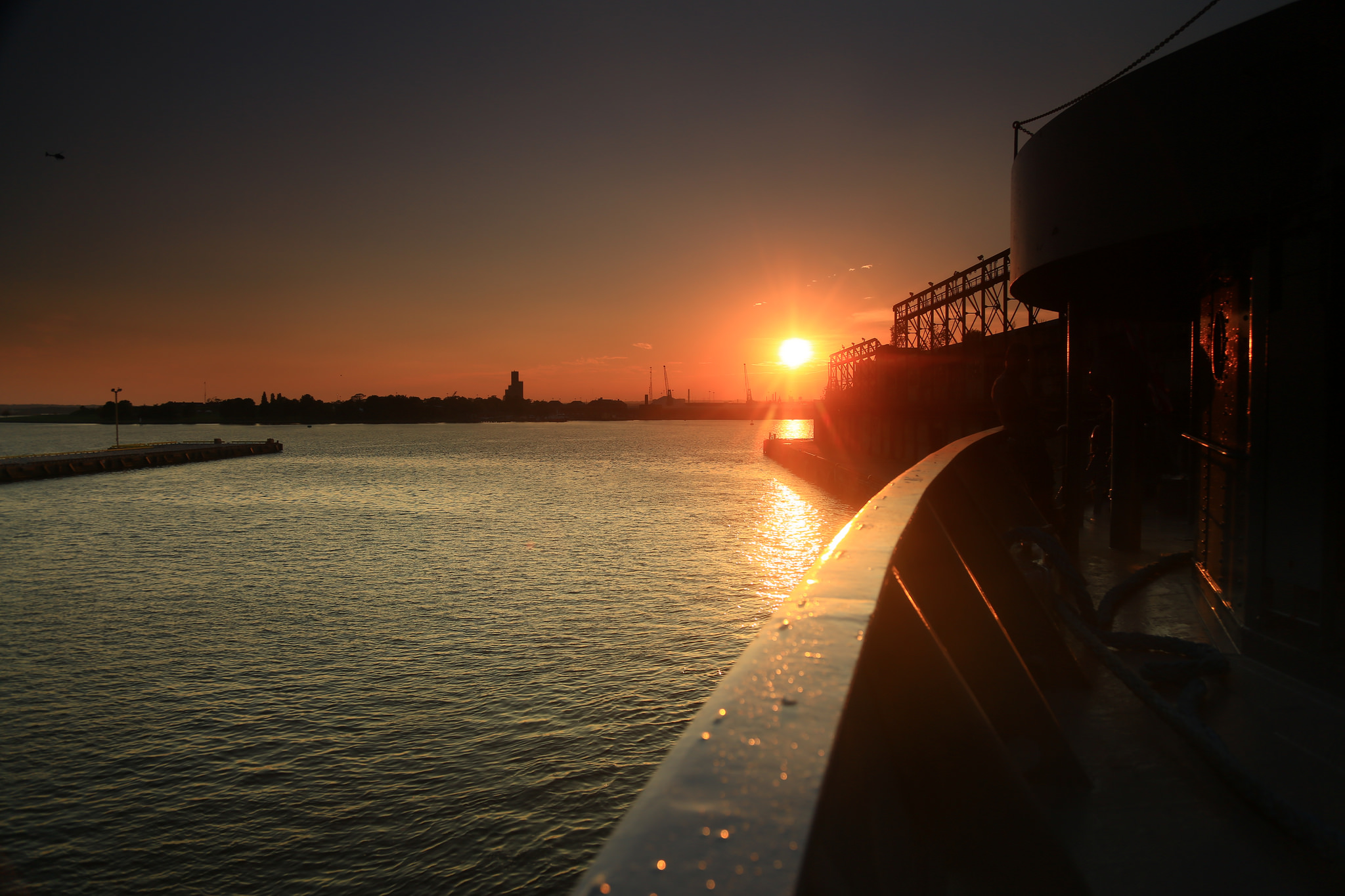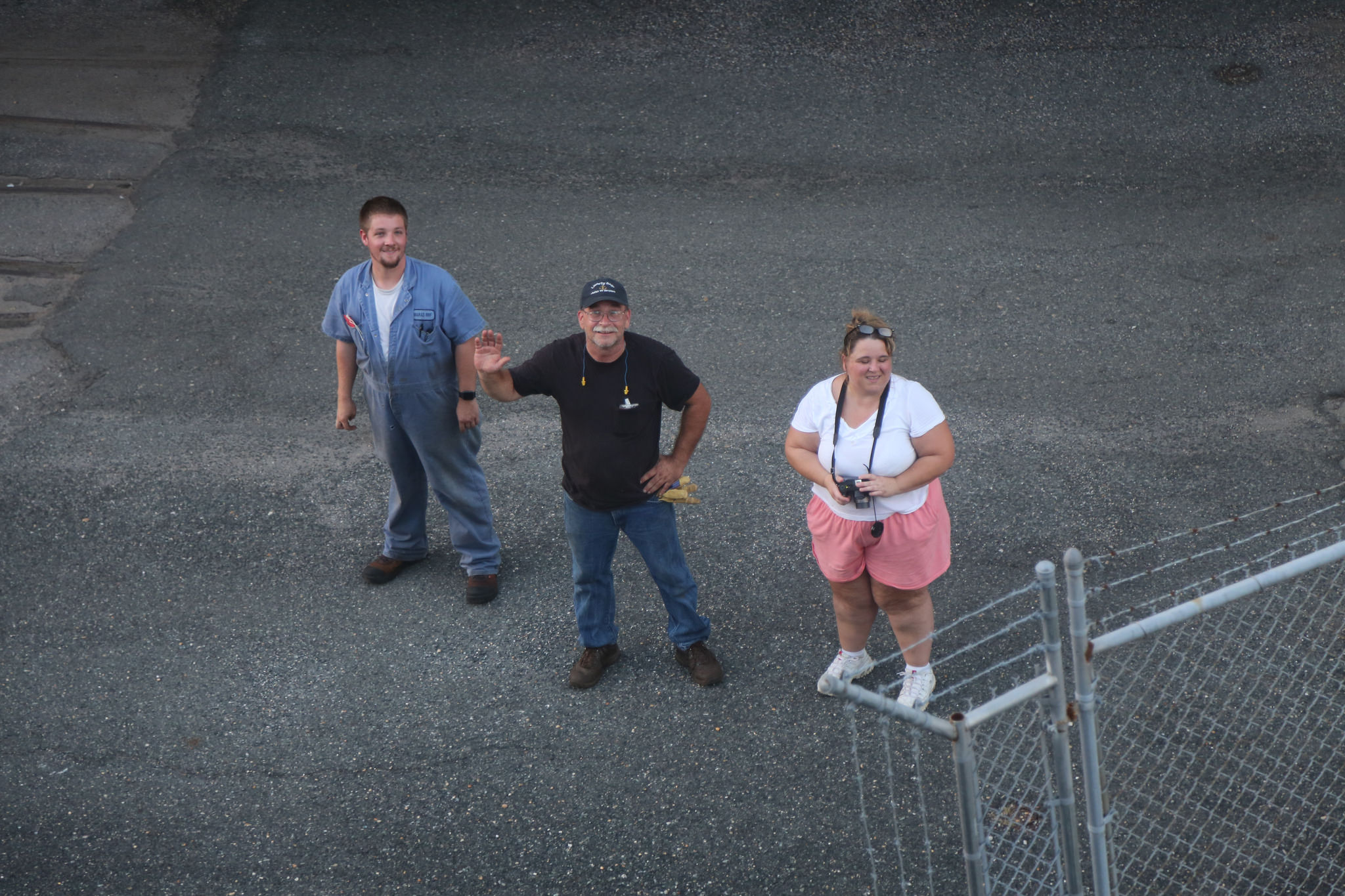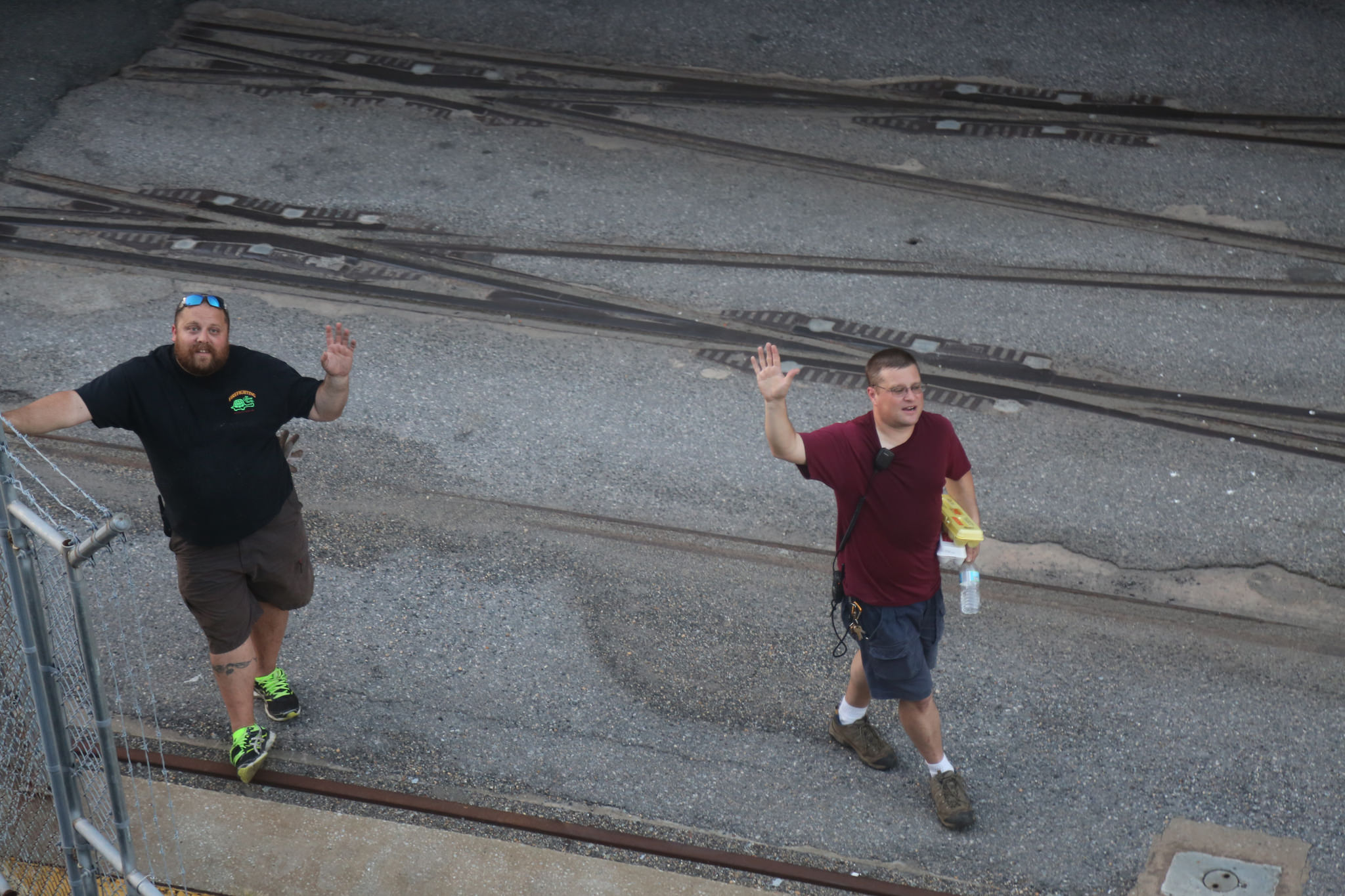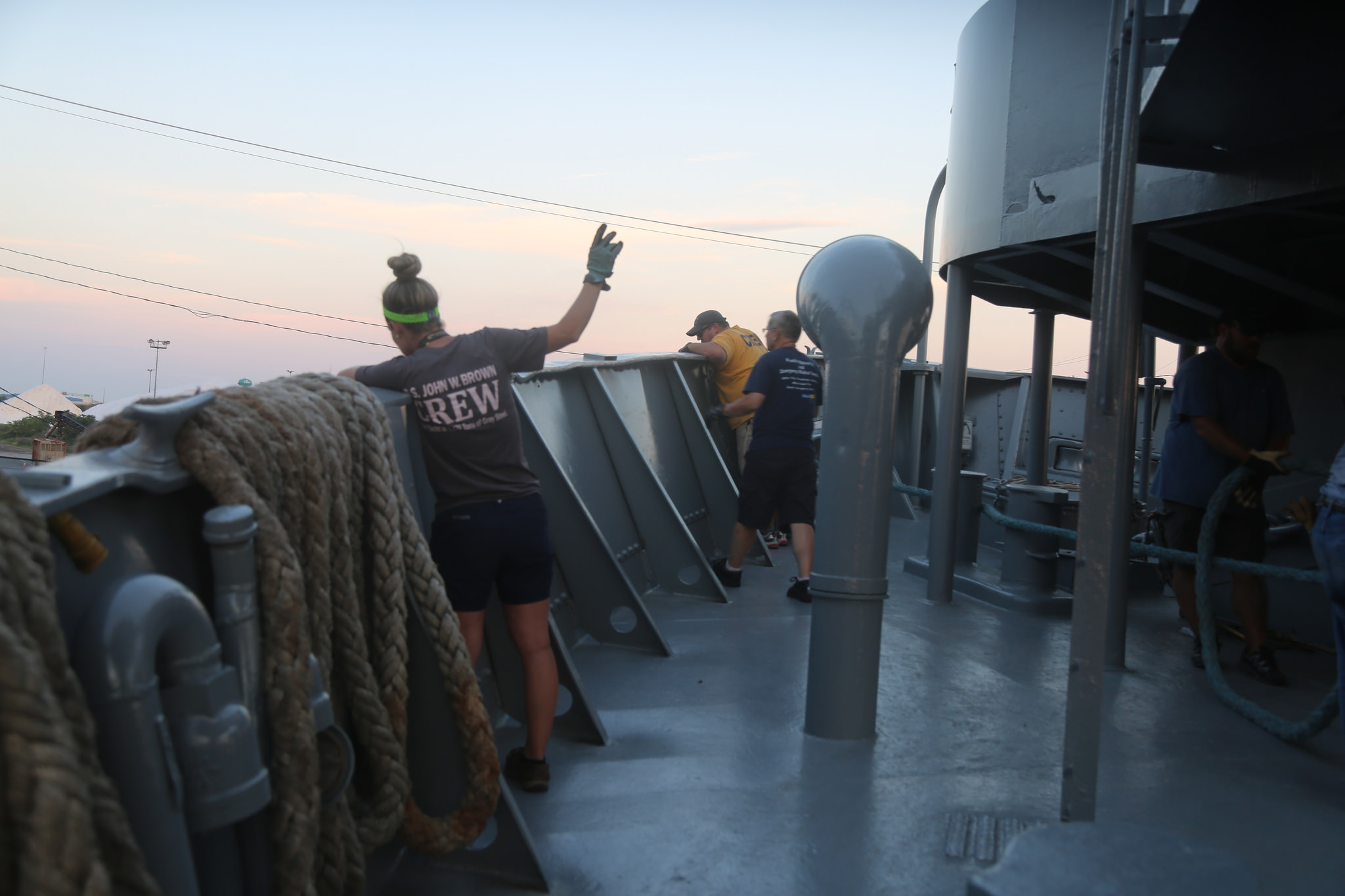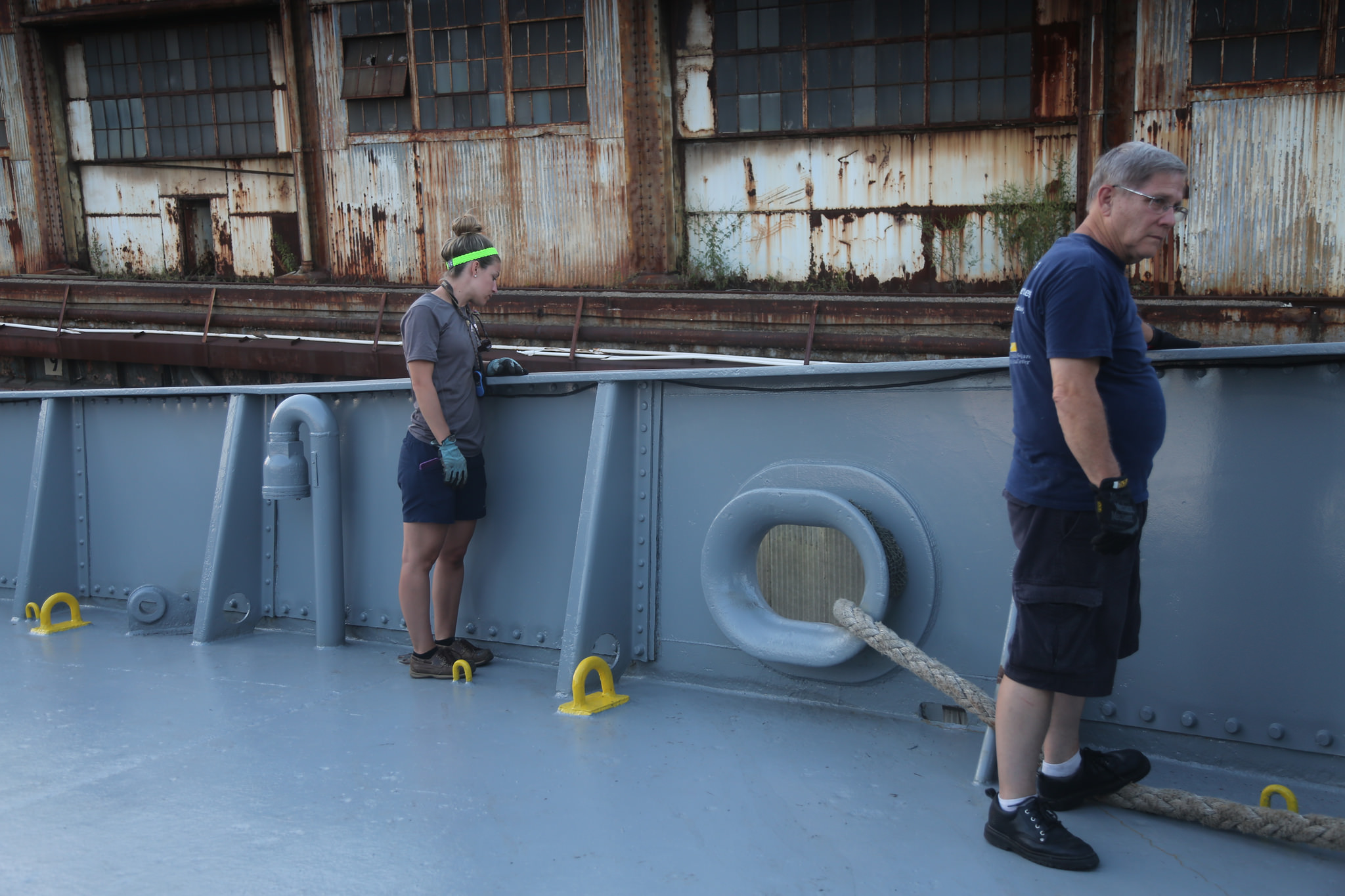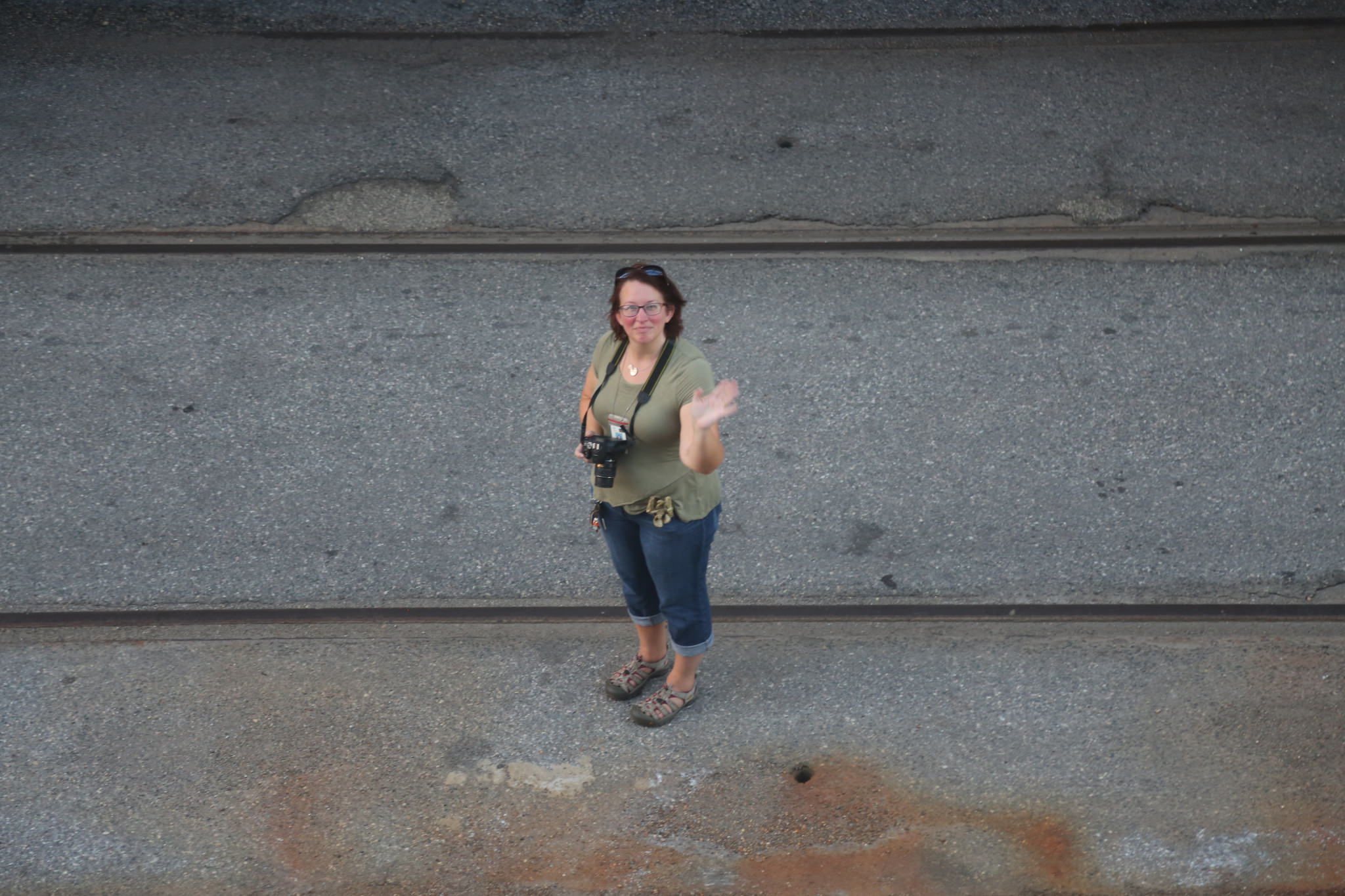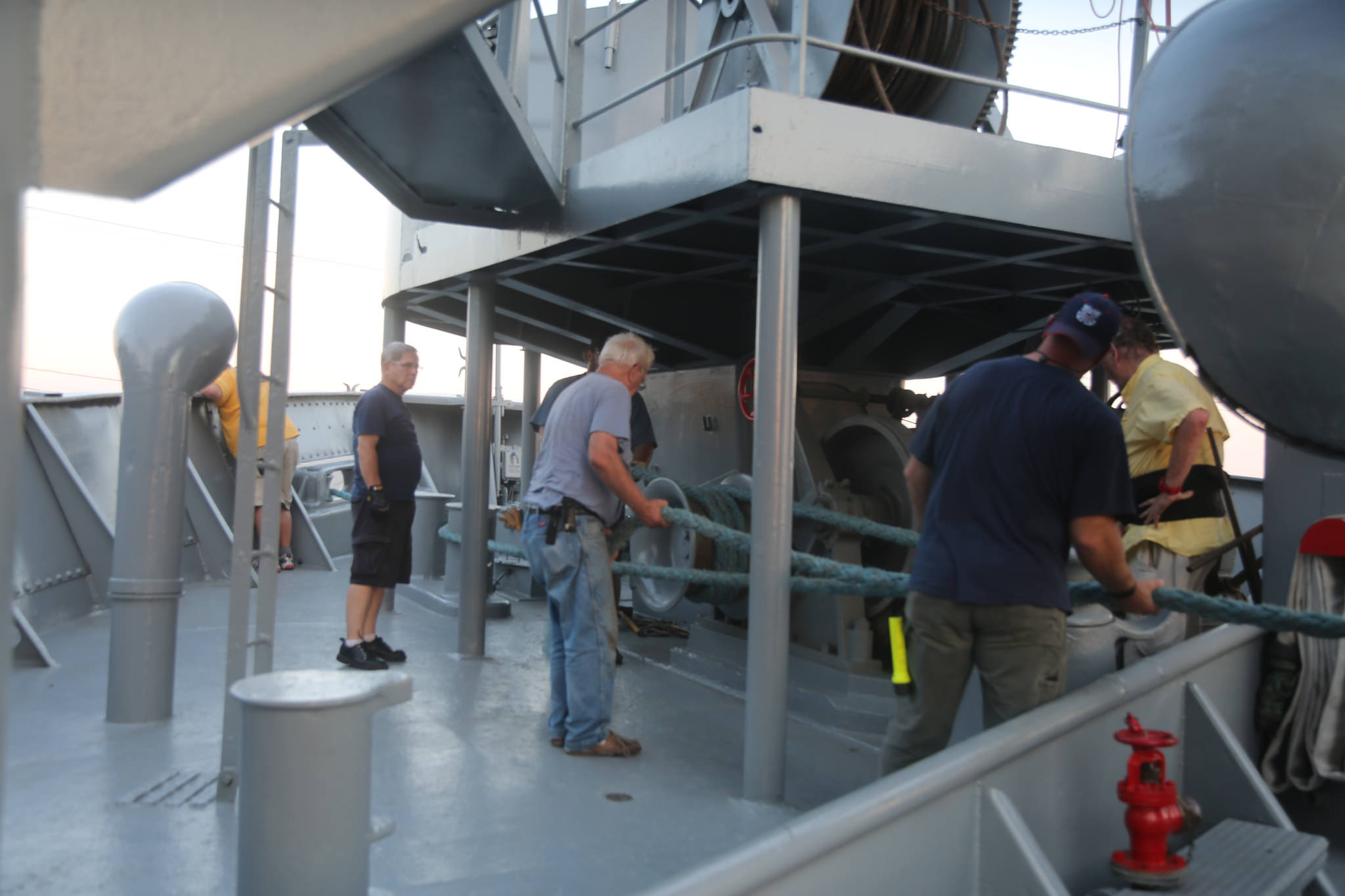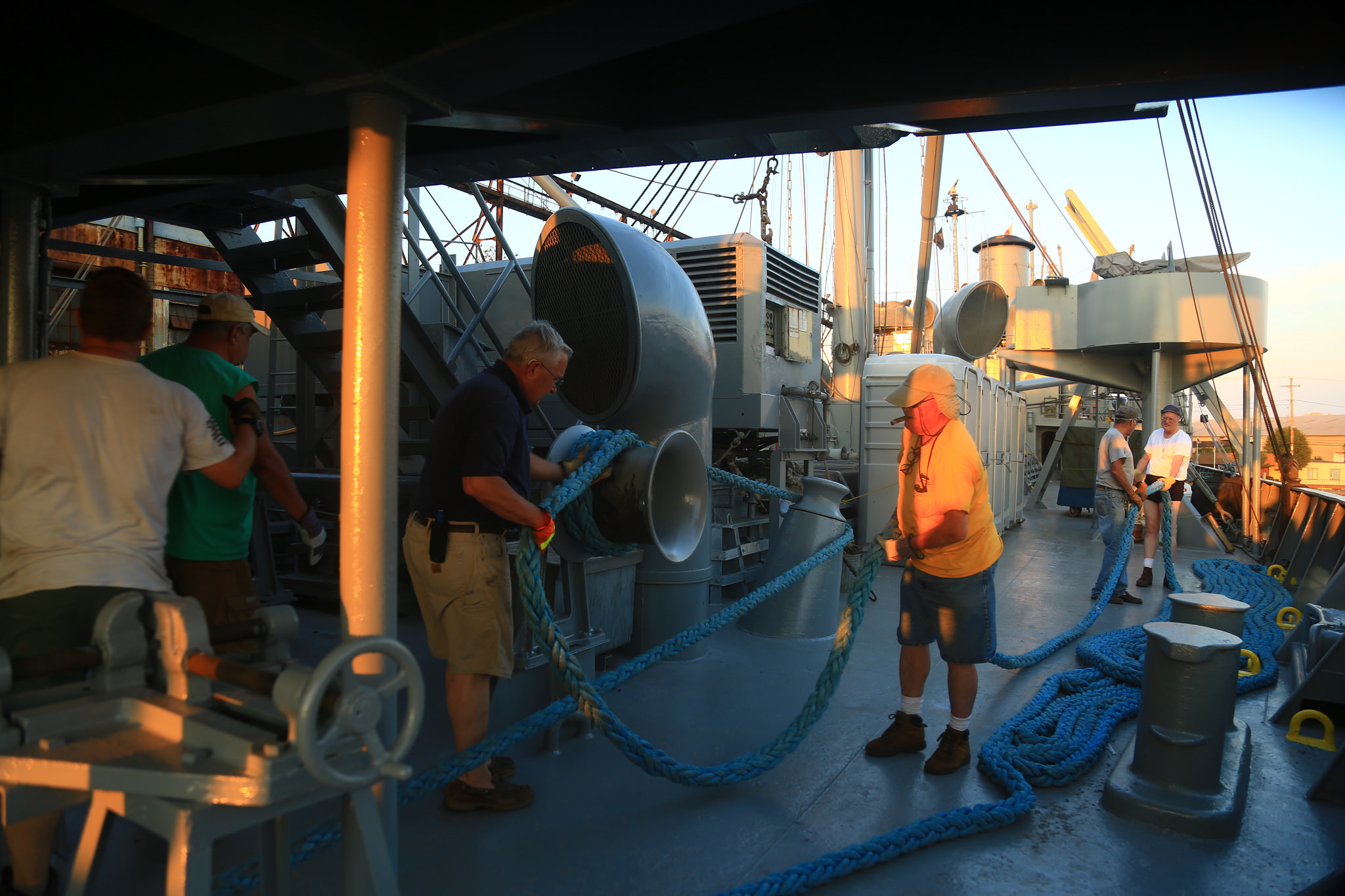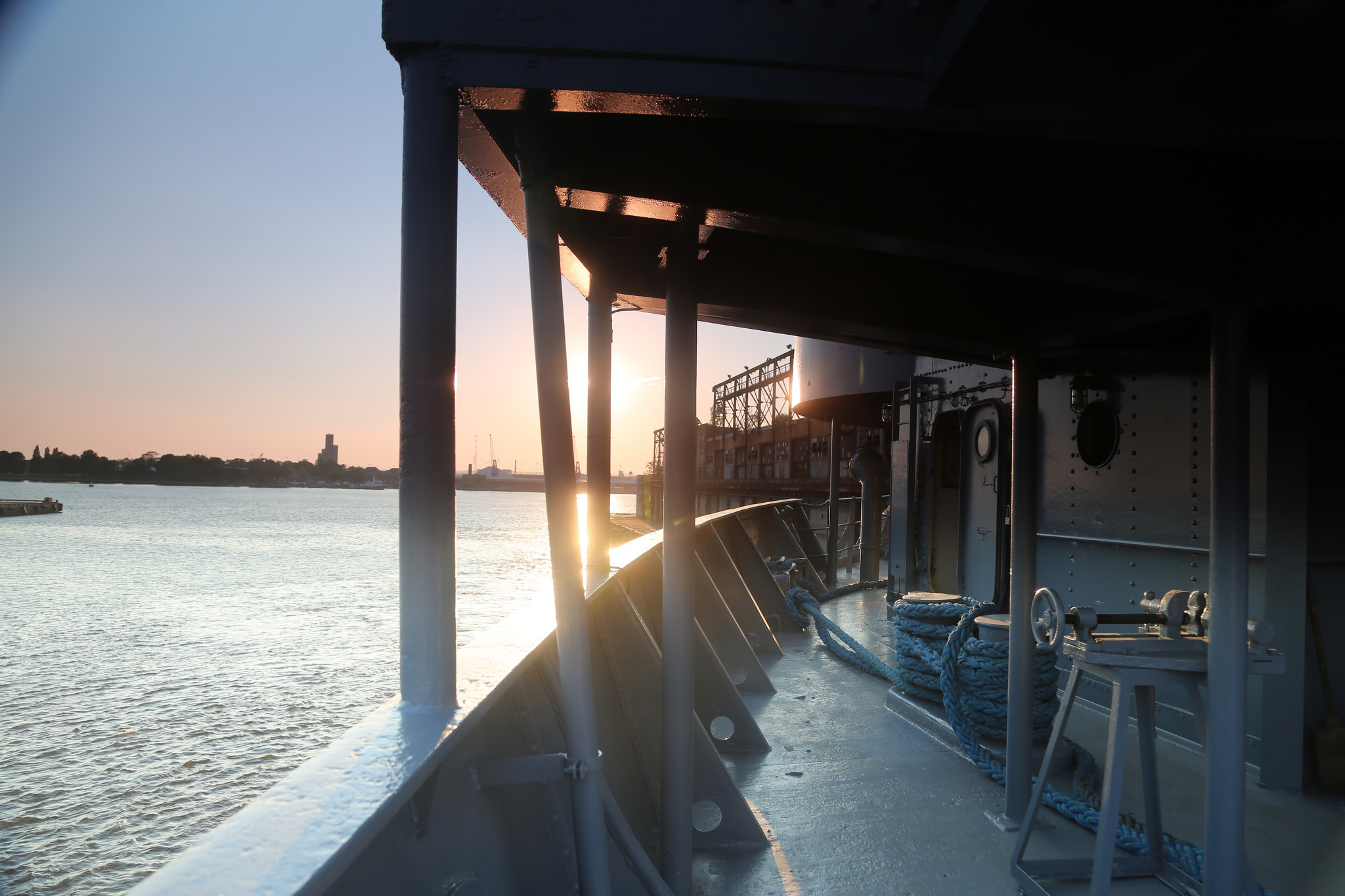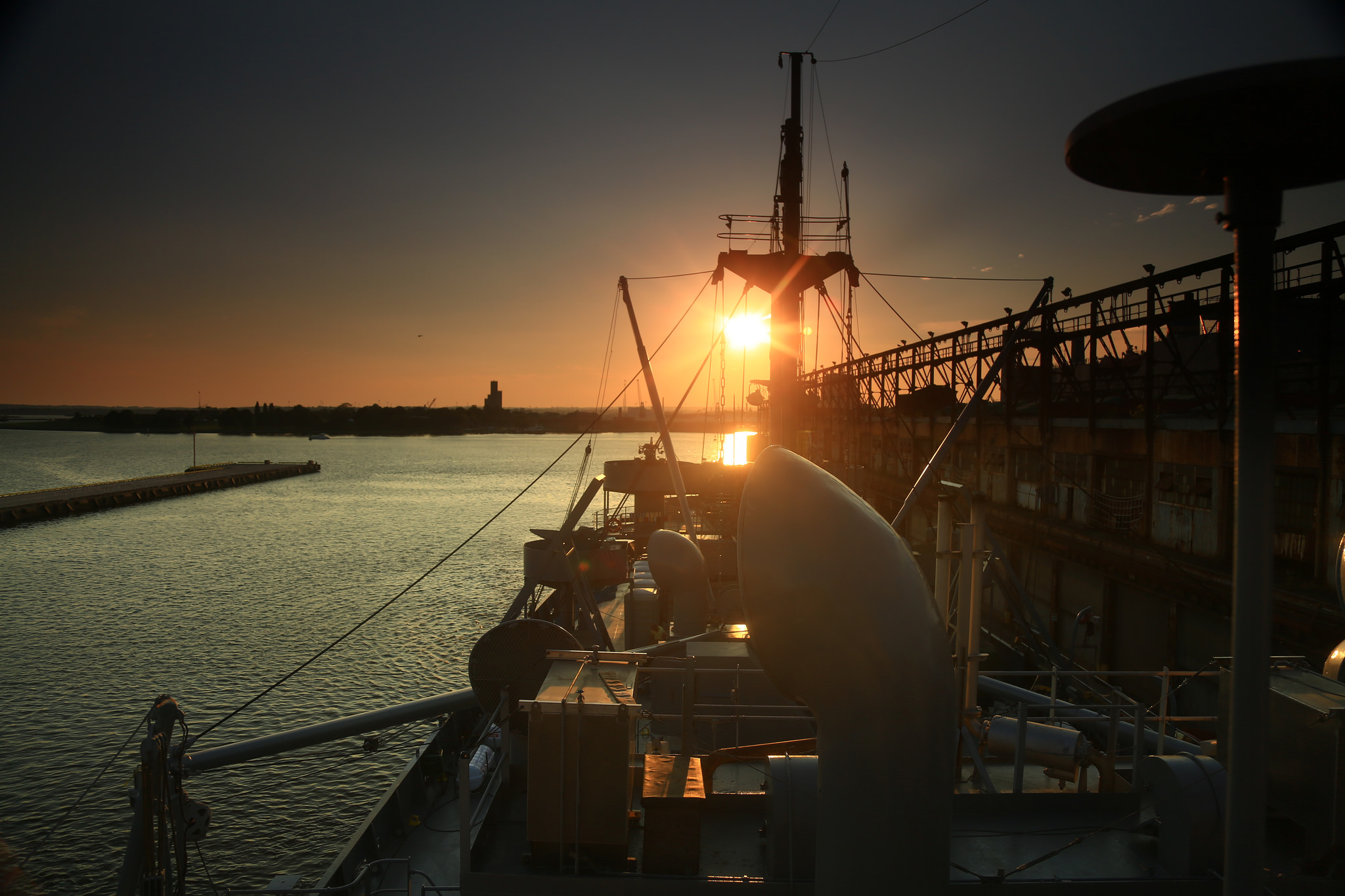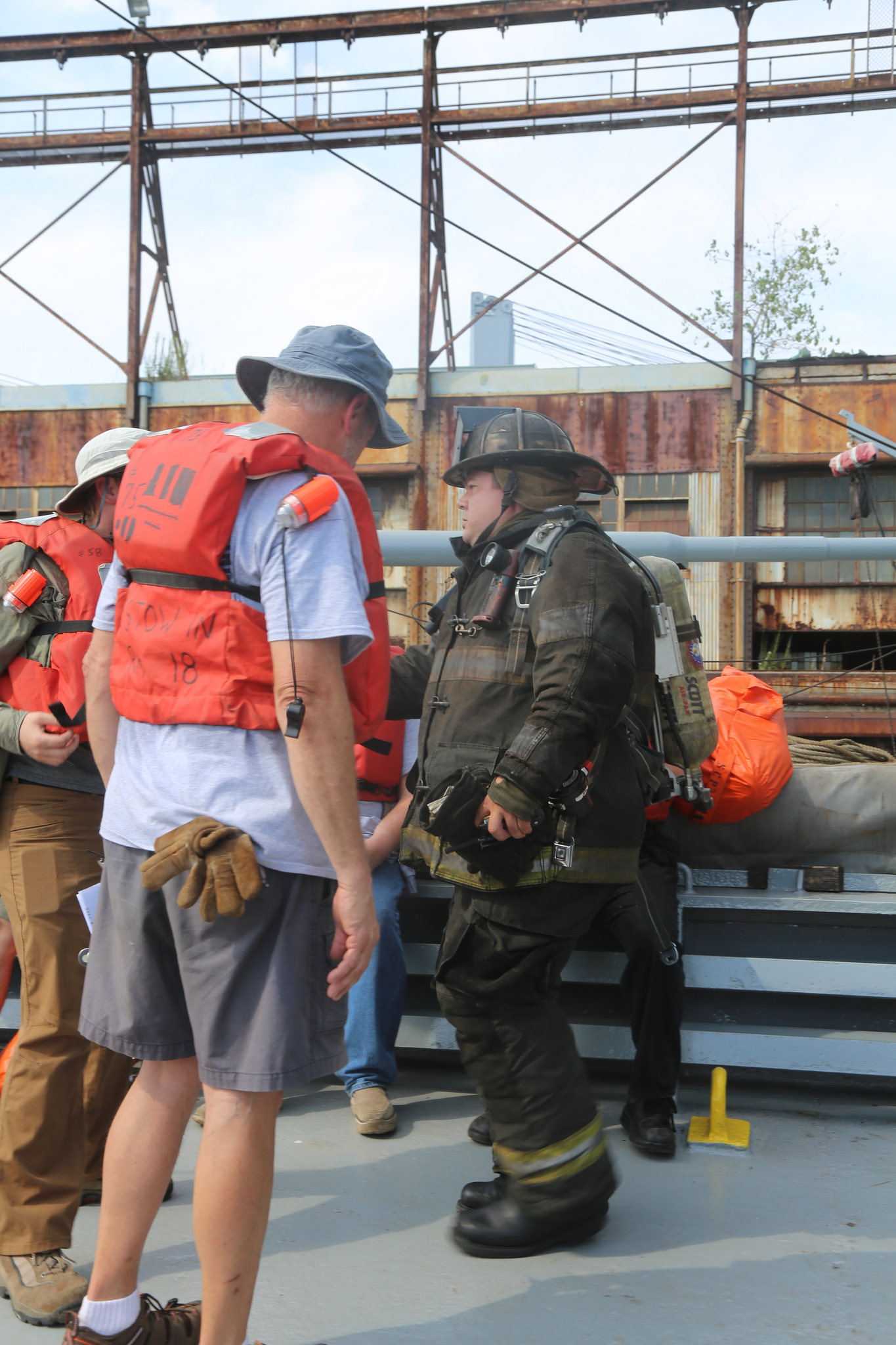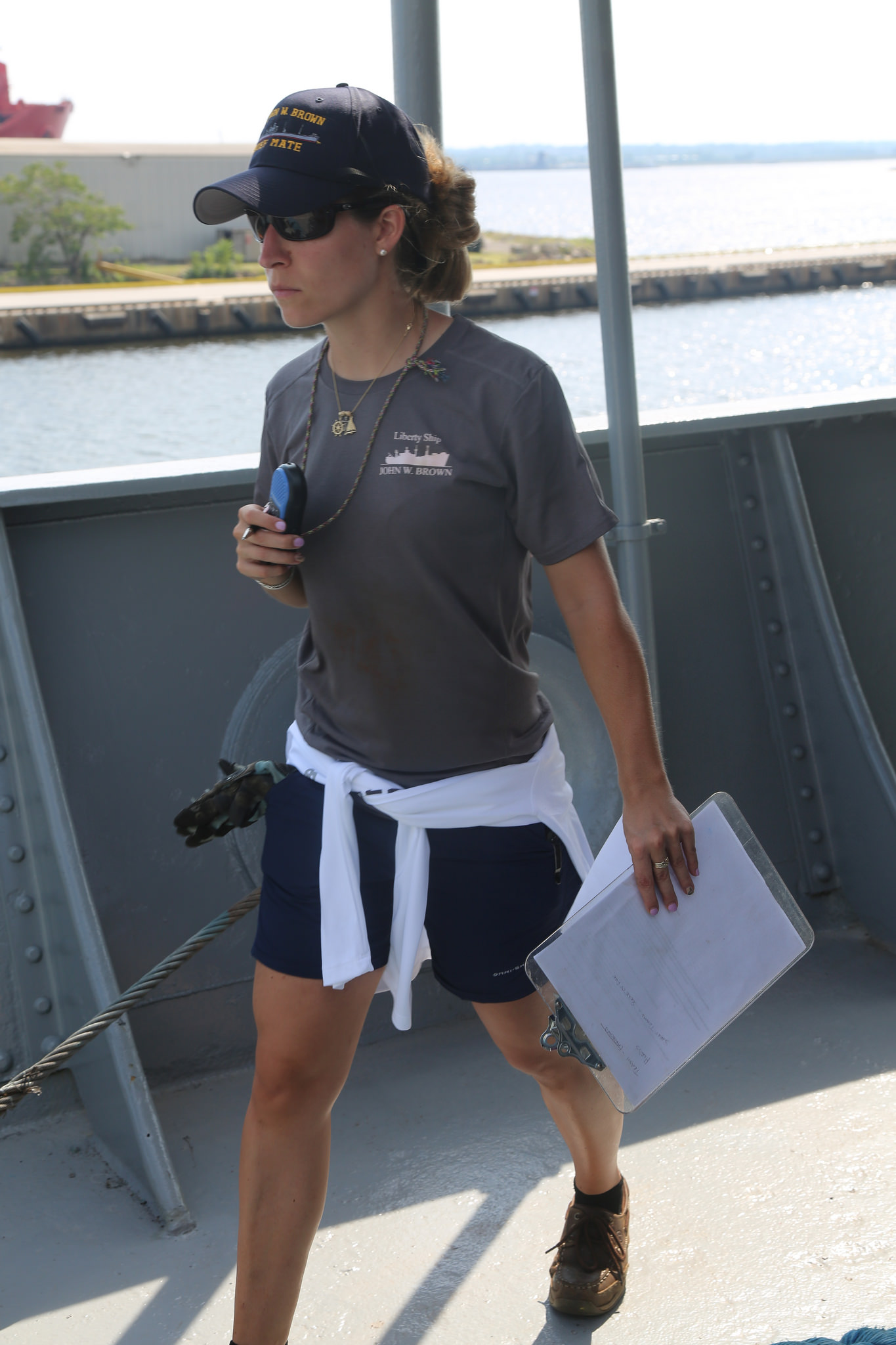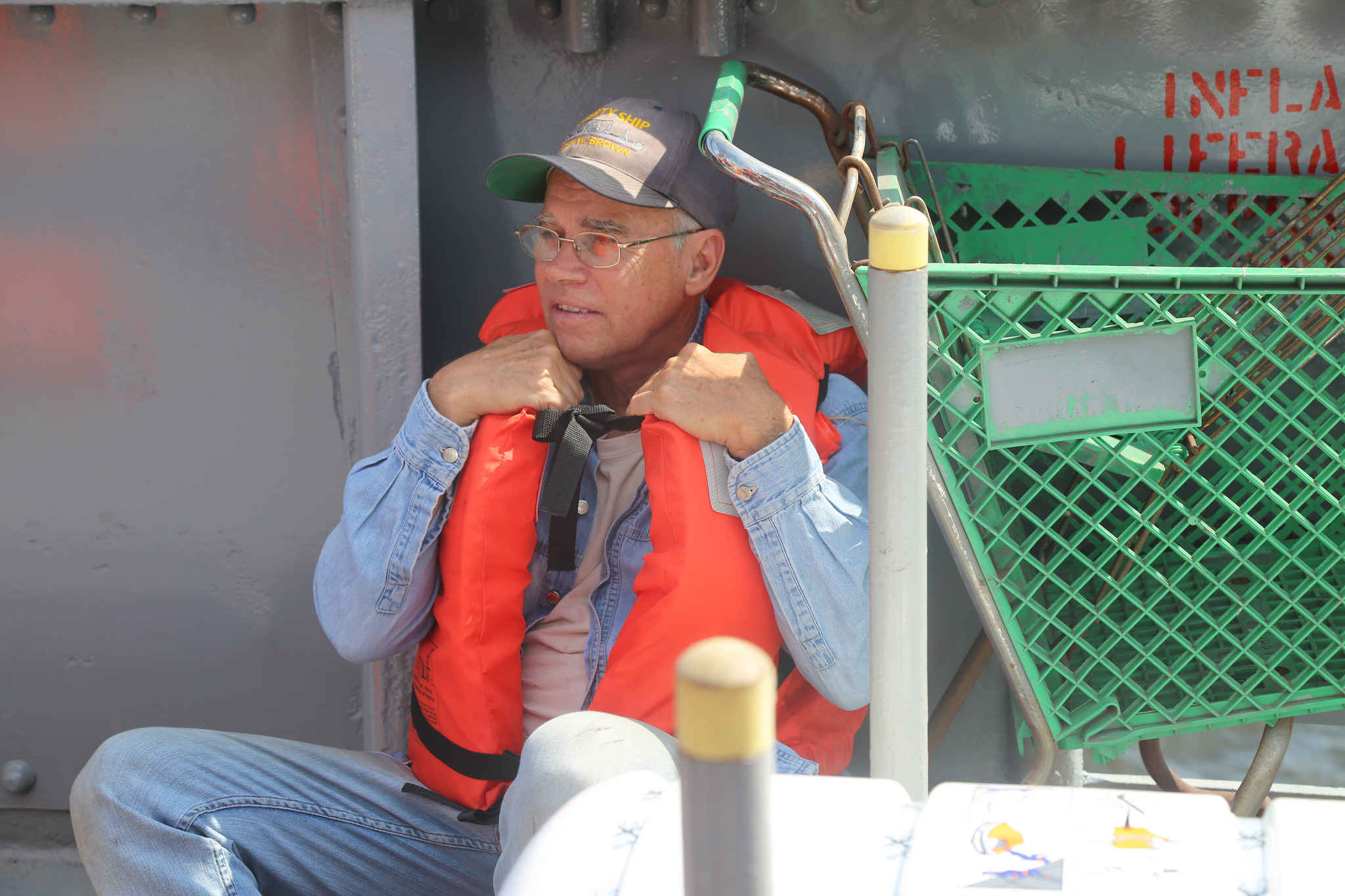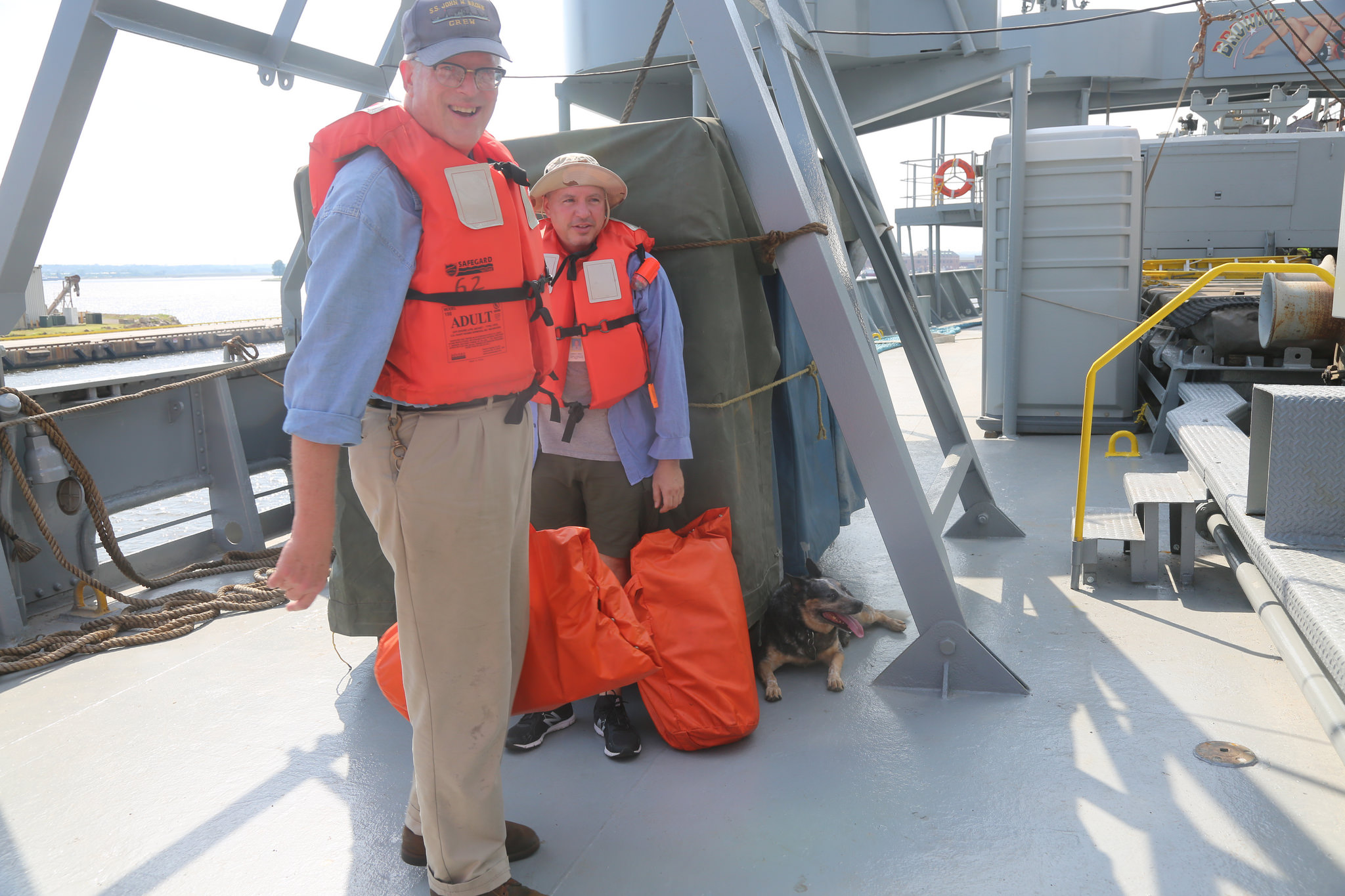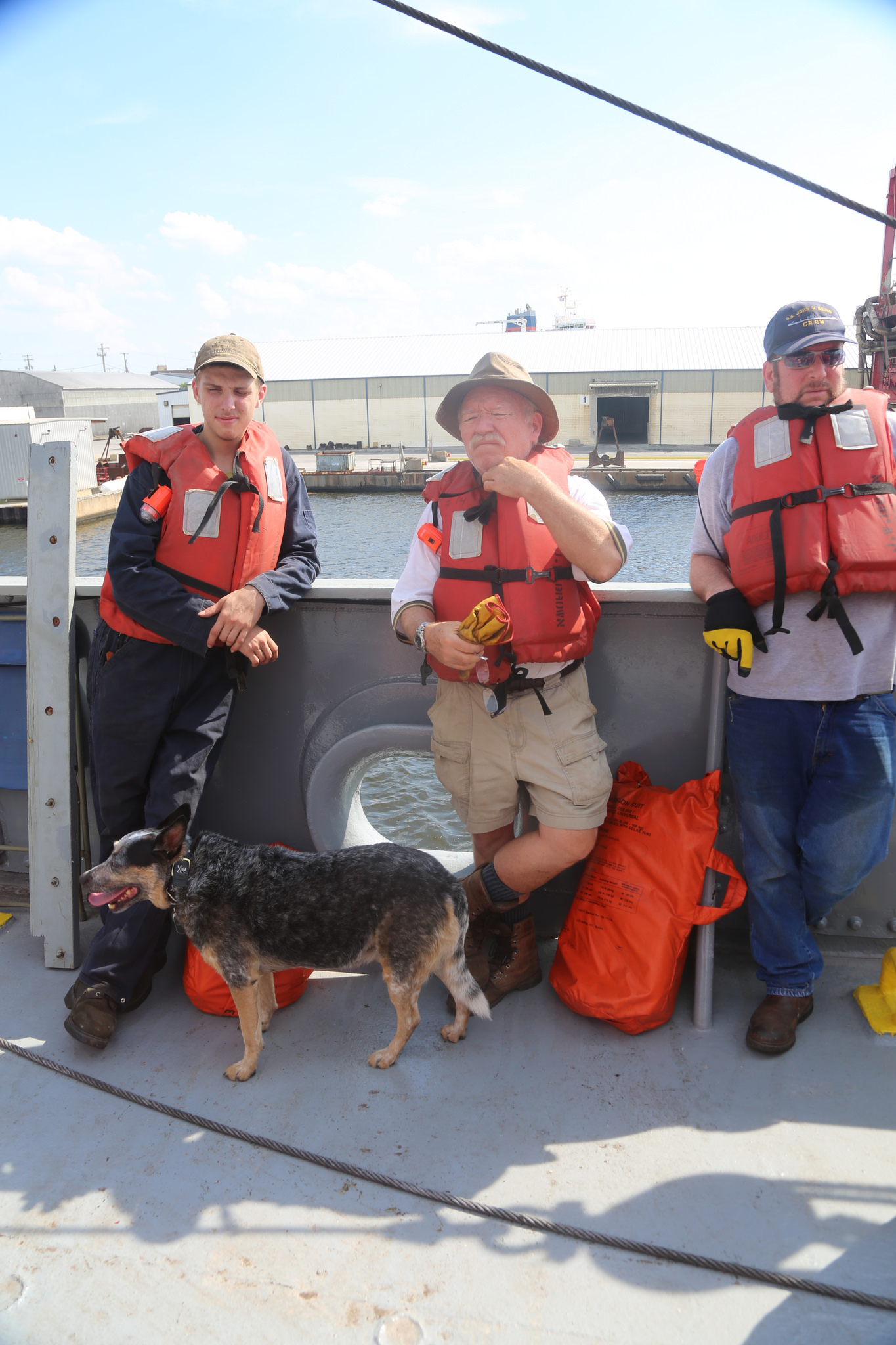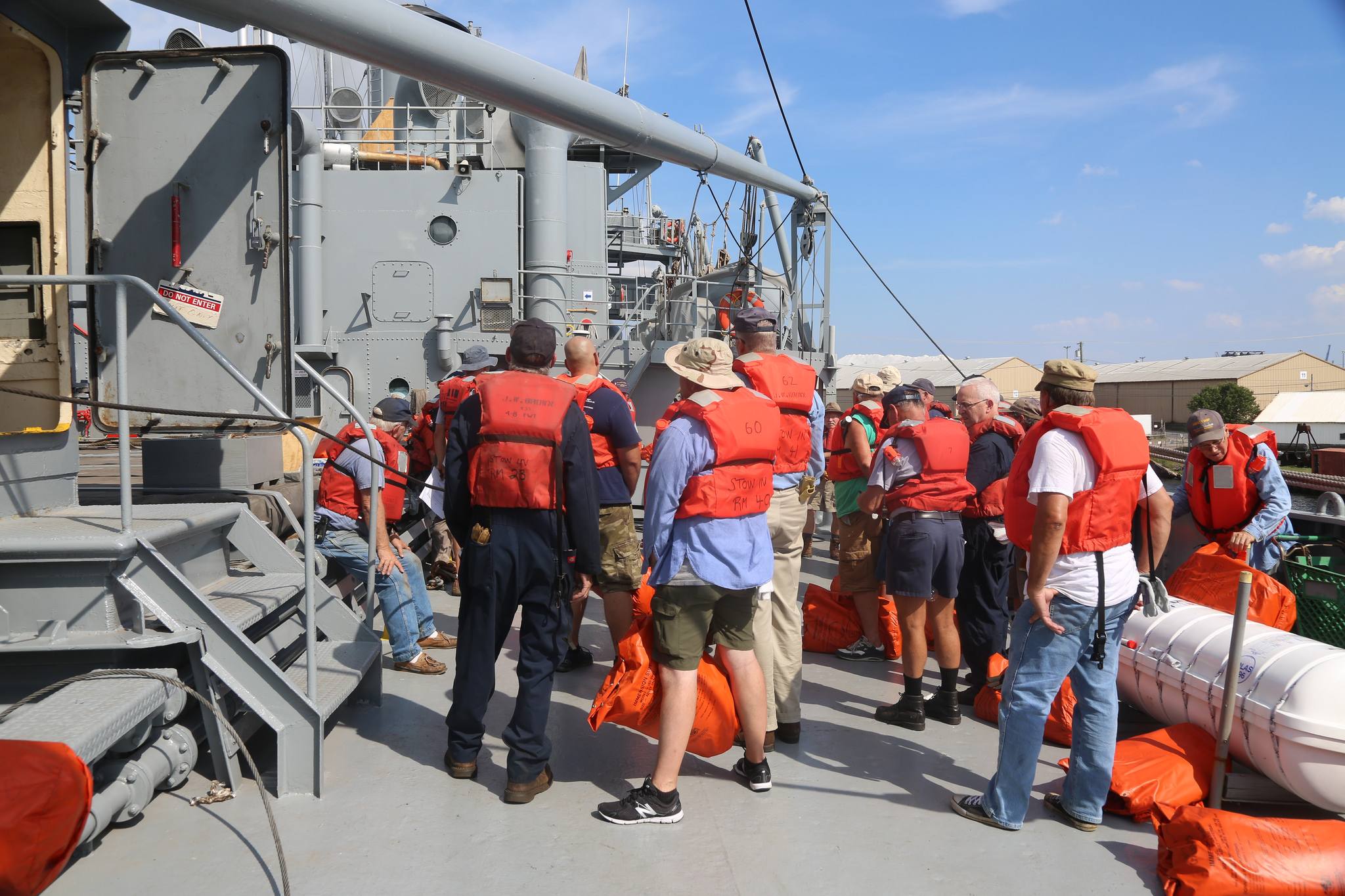Well, friends… it’s been 5 years and in some ways it feels like we were just in Norfolk, but in other ways there have been massive changes. The ship’s future has been threatened with not finding a berth in Baltimore until fairly recently (see recent press release here). We’ve lost many crew members from death or life circumstances, and there have been other changes. We’ve gained new crew members, and some who were AB’s or 3rd mates are now Chief Mates, Captains, and Chief Engineers. A HUGE thank you goes to Mike Schneider who not only was our point person for shipyard (once again) but he wrote this up so that you could understand the reason we go to the shipyard and what work needs to be done this time around.
JOHN W. BROWN will sail to the shipyard January 4, 2020. After the original two planned drydock dates (in September 2019 and March 2020) couldn’t be accommodated by the shipyard, the ship now has a firm docking date of January 9th. The ship will depart Baltimore on Saturday January 4th for the overnight voyage to Norfolk and enter drydock at Colonna’s Shipyard later that week.
The ship is normally drydocked every five years, unless a major repair requires a shorter interval. This is to comply with Coast Guard regulations. Even if docking weren’t required, a prudent shipowner, as Project Liberty Ship is, would put a ship on dock periodically to inspect and preserve the underwater hull and fixtures that can’t be seen or serviced while the ship is waterborne.
The ship is expected to be on the dock about four weeks. However, the actual scope of work won’t be determined until the ship is on dock and the initial inspections are completed by the yard, the Coast Guard, and our crew members. This will be the BROWN’s fifth consecutive docking at Colonna’s Shipyard in Norfolk, the previous ones having been in 2003, 2006, 2011, and 2014 (pictures shown next).
The work package for this drydocking consists of 24 specific tasks. Most of them (14) cover routine work performed each time the ship is docked. Included are cleaning and painting the hull; inspecting the rudder, propeller, and the outer portion of the propeller shaft; overhauling 17 hull valves; replacing the zinc anodes on the hull (that inhibit hull plate corrosion); cleaning and inspecting the 12 double bottom tanks (located between the ship’s inner and out bottoms); and cleaning and painting two water tanks.
In addition to those “routine” tasks, there are nine items of repair work which are beyond the capability of the volunteer crew and that must be done on dock. These include work to cut out and replace wasted portions of the ship’s structure, replacing three key valves, replacing a deteriorated 3” piping run in the engine room, making permanent some temporary repairs done previously by the crew, and replacing three large rubber expansion joints in a sea water line. The planned hull plate replacement work was done in 2014 and none is expected this time.
Most of the volunteer crew sailing the ship to Norfolk will be returned to Baltimore by bus after the ship is moored at the yard. A few volunteers will remain with the ship during the drydock period. They will monitor the work, oversee and inspect certain tasks, and provide assistance to the shipyard workers as needed. There are no significant tasks that will be performed by the volunteer crew while at the yard.
The drydock period is scheduled to last about four weeks and JOHN W. BROWN is expected to be back in Baltimore by mid-February. Hope this was informational and interesting. As always thank you for supporting Project Liberty Ship and the SS JOHN W BROWN.
Project Liberty Ship, Inc is a 501(c)3 non-profit, all-volunteer organization engaged in the preservation and operation of the historic ship JOHN W. BROWN as a living memorial museum. Gifts to Project Liberty Ship are tax-deductible.
,
